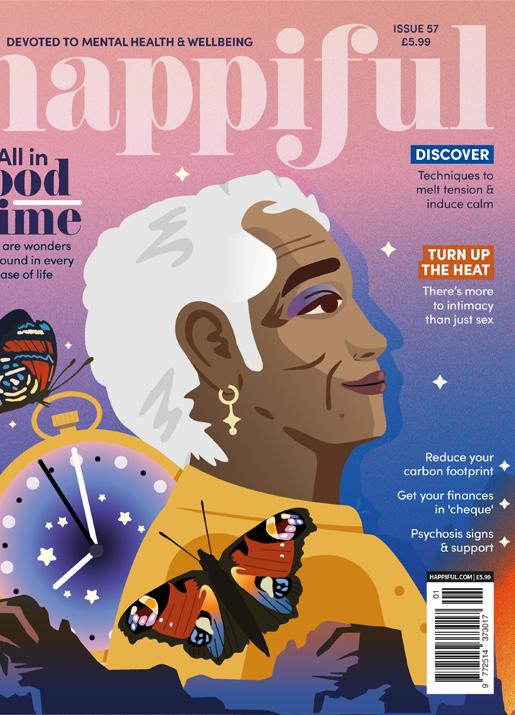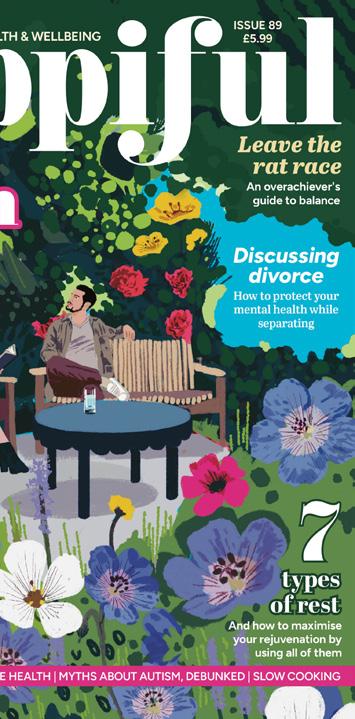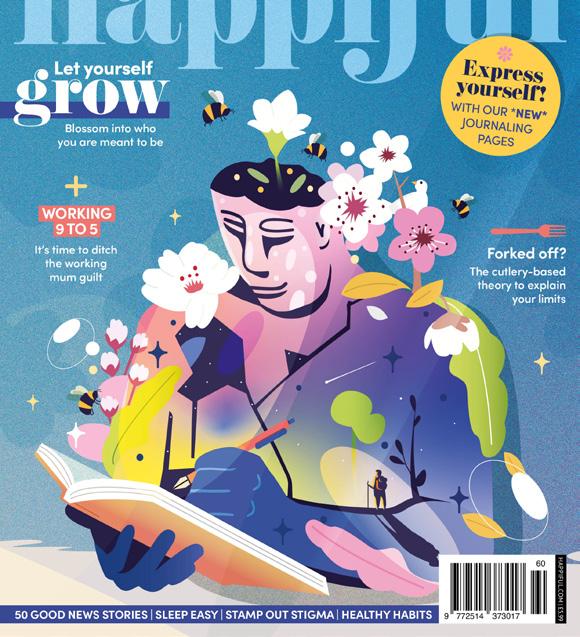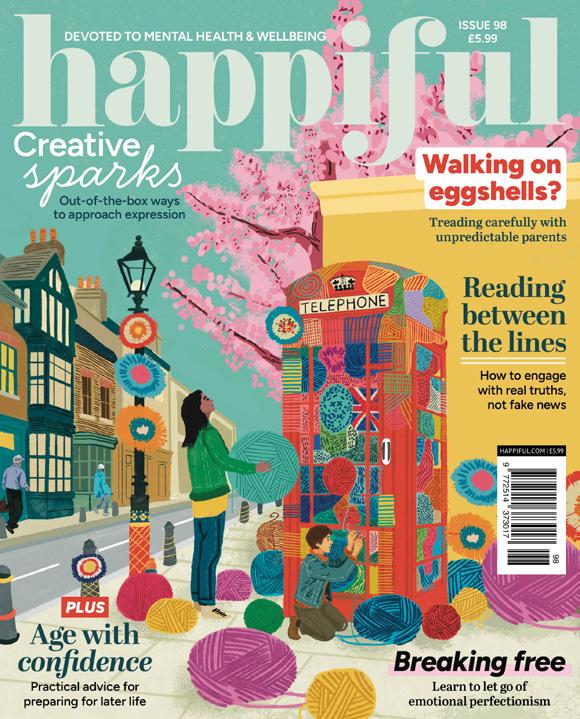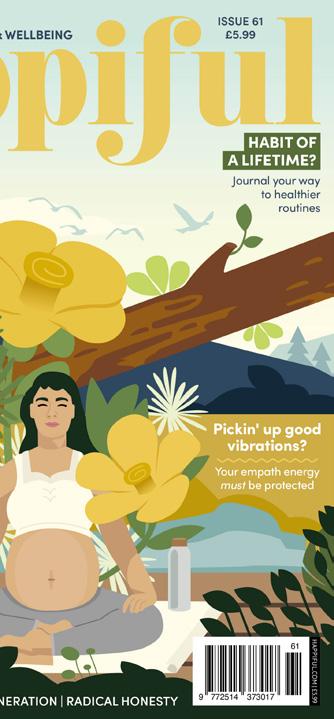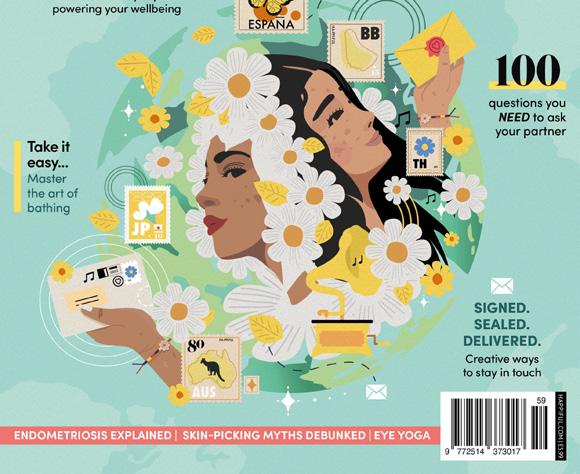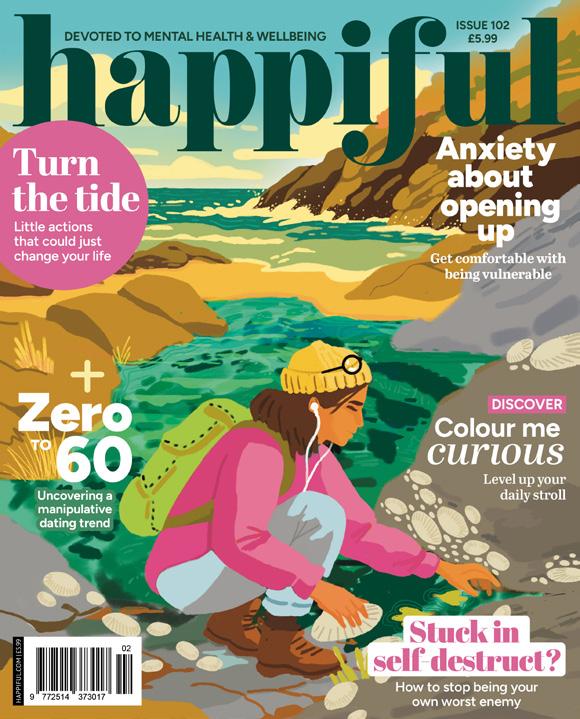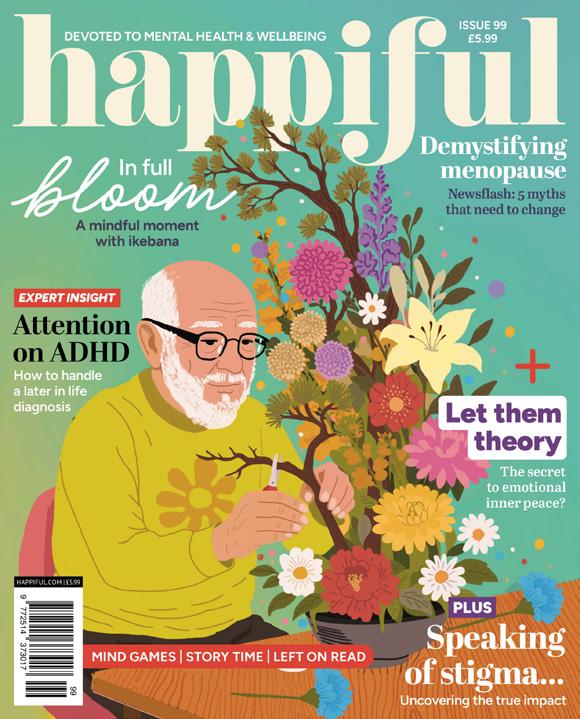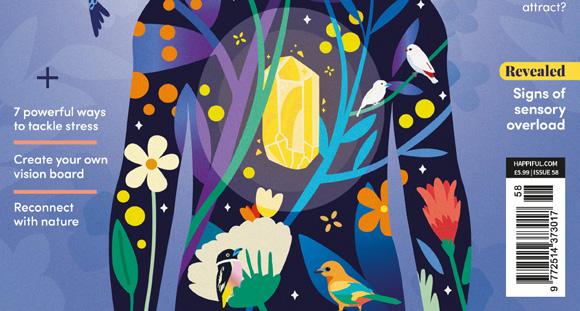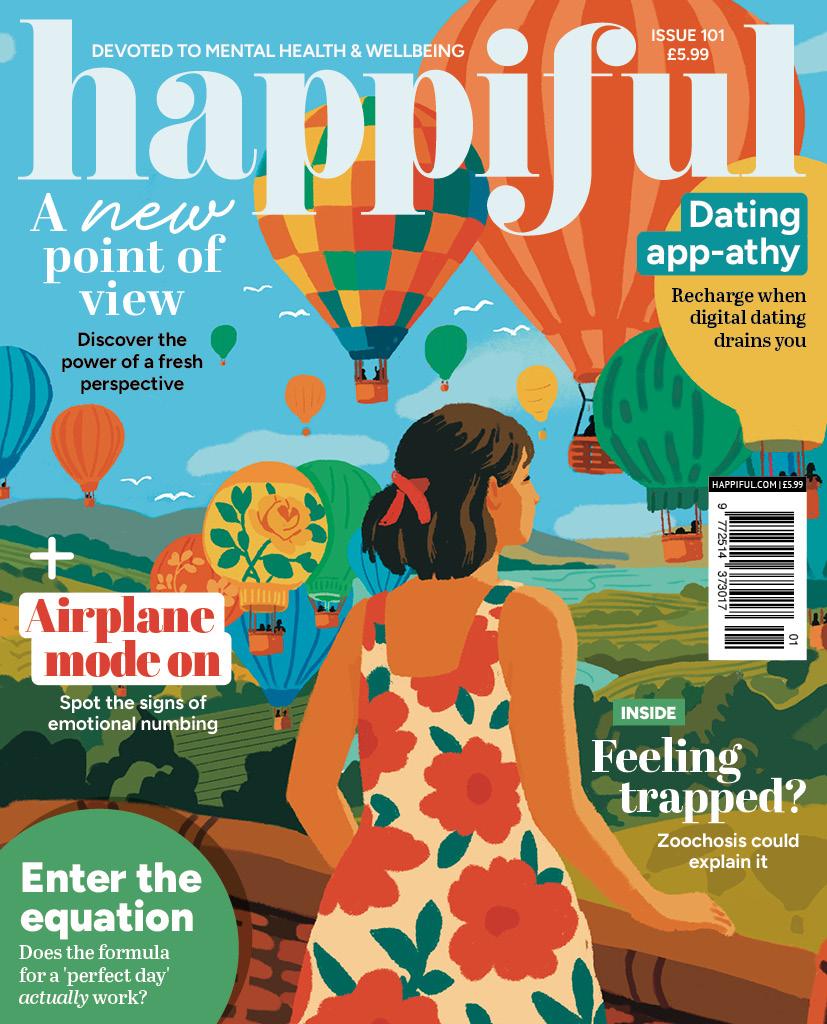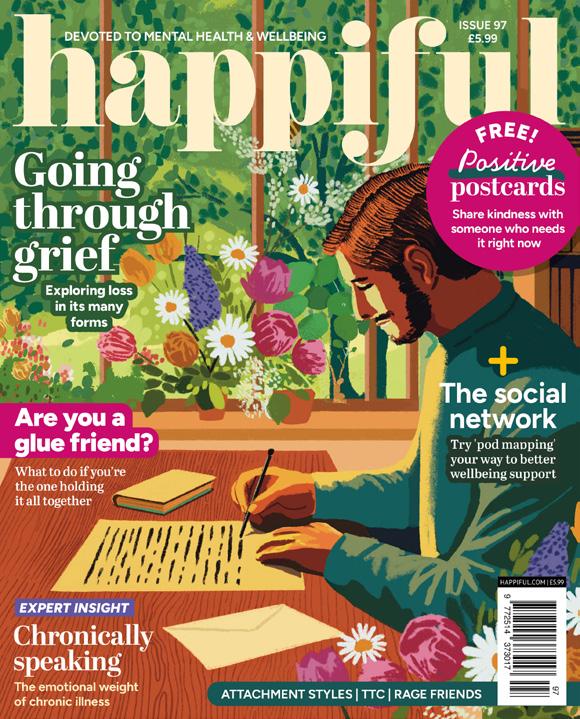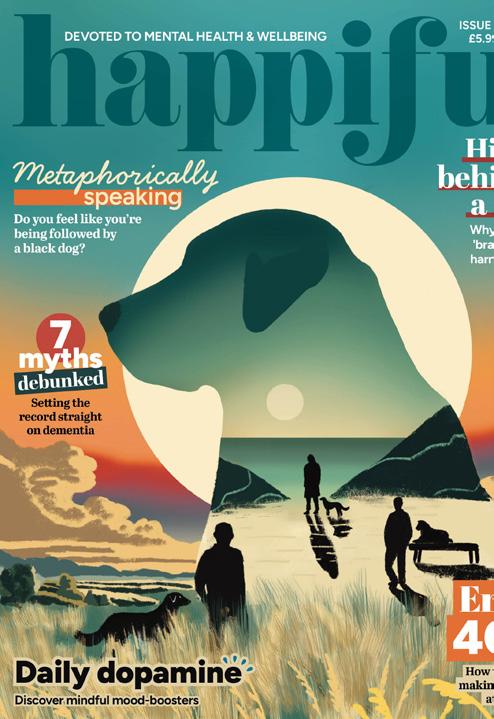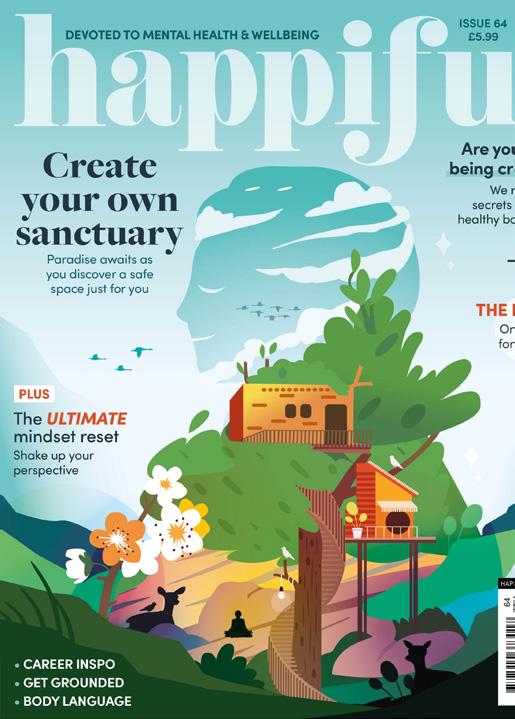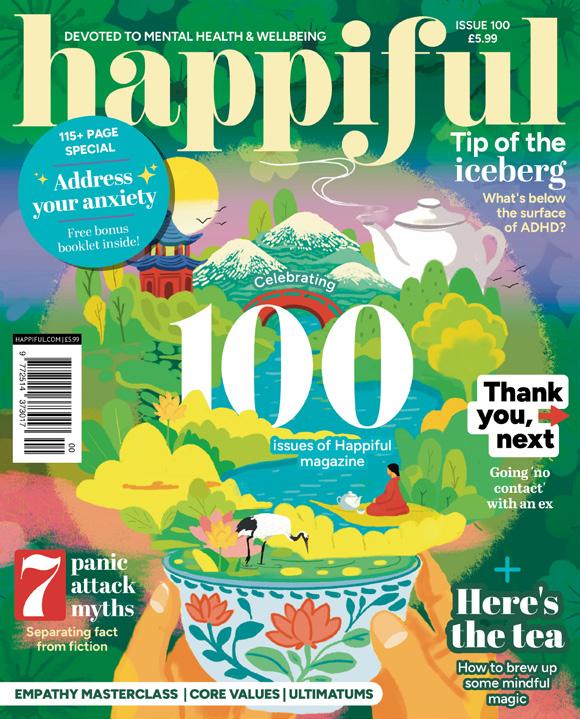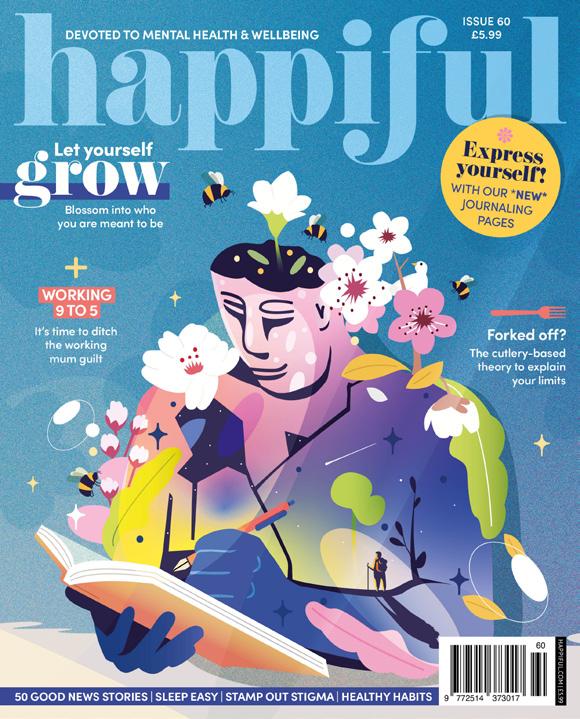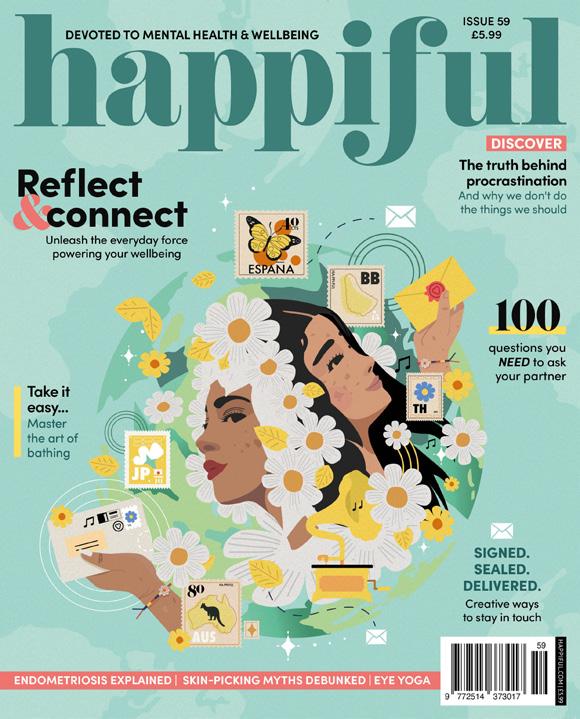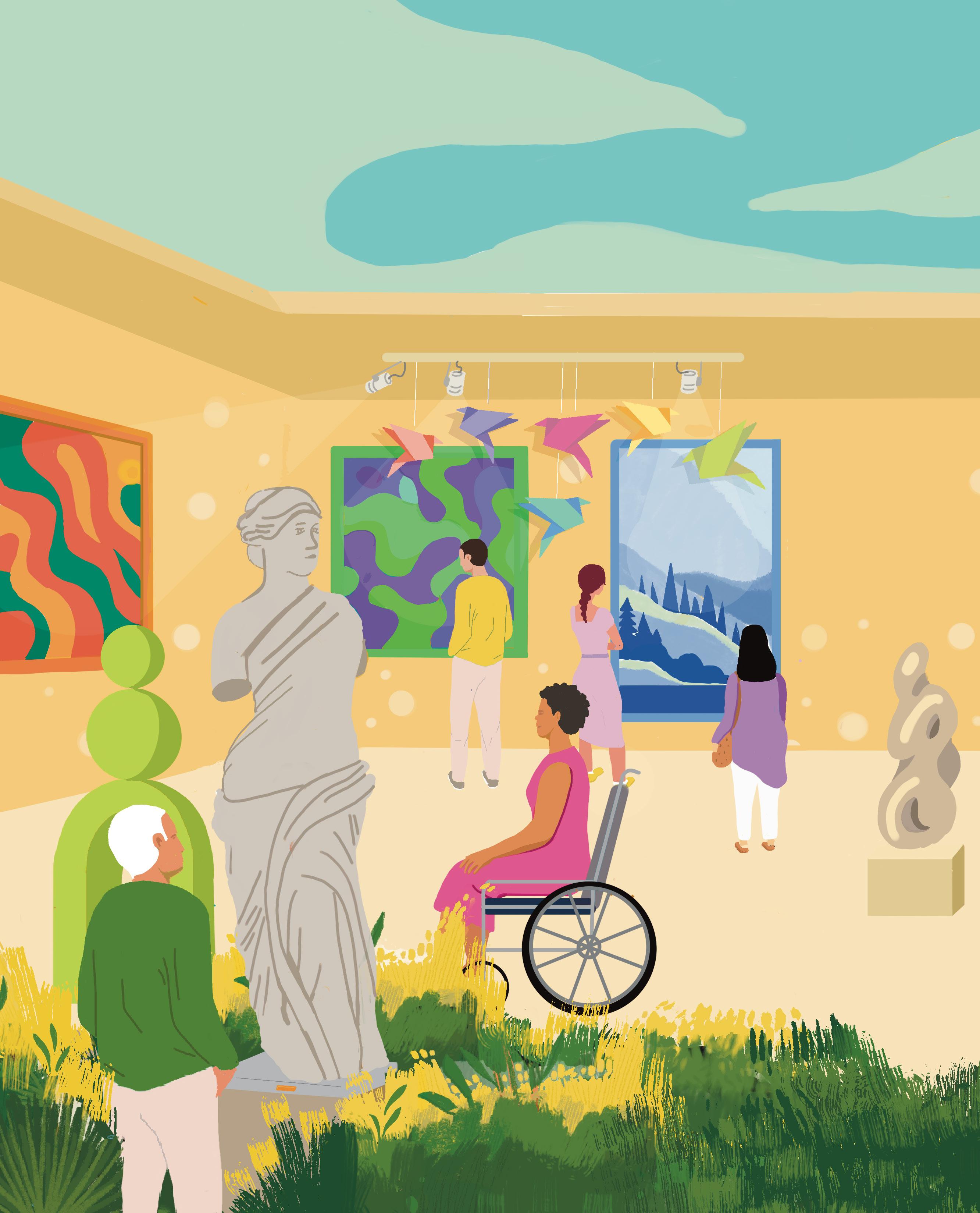
Nature does not hurry, yet everything is accomplished

| Anna Alexes


Nature does not hurry, yet everything is accomplished

| Anna Alexes
As humans, we tend to avoid anything that might cause us emotional discomfort. Whether that’s ignoring today’s headlines, or not wanting to enforce a personal boundary, it’s natural to want to preserve some state of emotional equilibrium in life.
And while this can be an effective way to maintain control over our experience, it can also stop us from reaching our full potential. Think about something you’ve achieved that required a leap of faith: a first date; switching jobs; moving cities; or any other courageous moment that no doubt came with trepidation, fear, or sadness.
At the time, we may worry that we’re about to make a huge mistake, when we’re actually making the conscious decision to daringly step into the unknown. When we look back on these successes, we quickly forget about that initial gut-wrenching feeling, seeing that moment as inconsequential to the events that followed.
But, when you can witness your ability to face these uncomfortable moments, something astounding happens: your self-perception begins to shift. You see that past versions of you have been able to not just withstand emotional discomfort, but alchemise it into personal growth.
Over time, you see that a healthy amount of pressure isn’t just survivable, but essential to performing at your best (p58). You notice you can calmly enter conversations that improve your
relationships (p52), and have the courage to be truly seen and heard by others (p49).
This capacity to hold the wider spectrum of emotions isn’t a skill we’re taught at school. Yet it’s something we can teach ourselves, especially when we allow ourselves to be fully present in the here and now (p32). Although it can often feel challenging to press pause, where we land when we slow down can be the very place where we cultivate this life-enhancing skill.
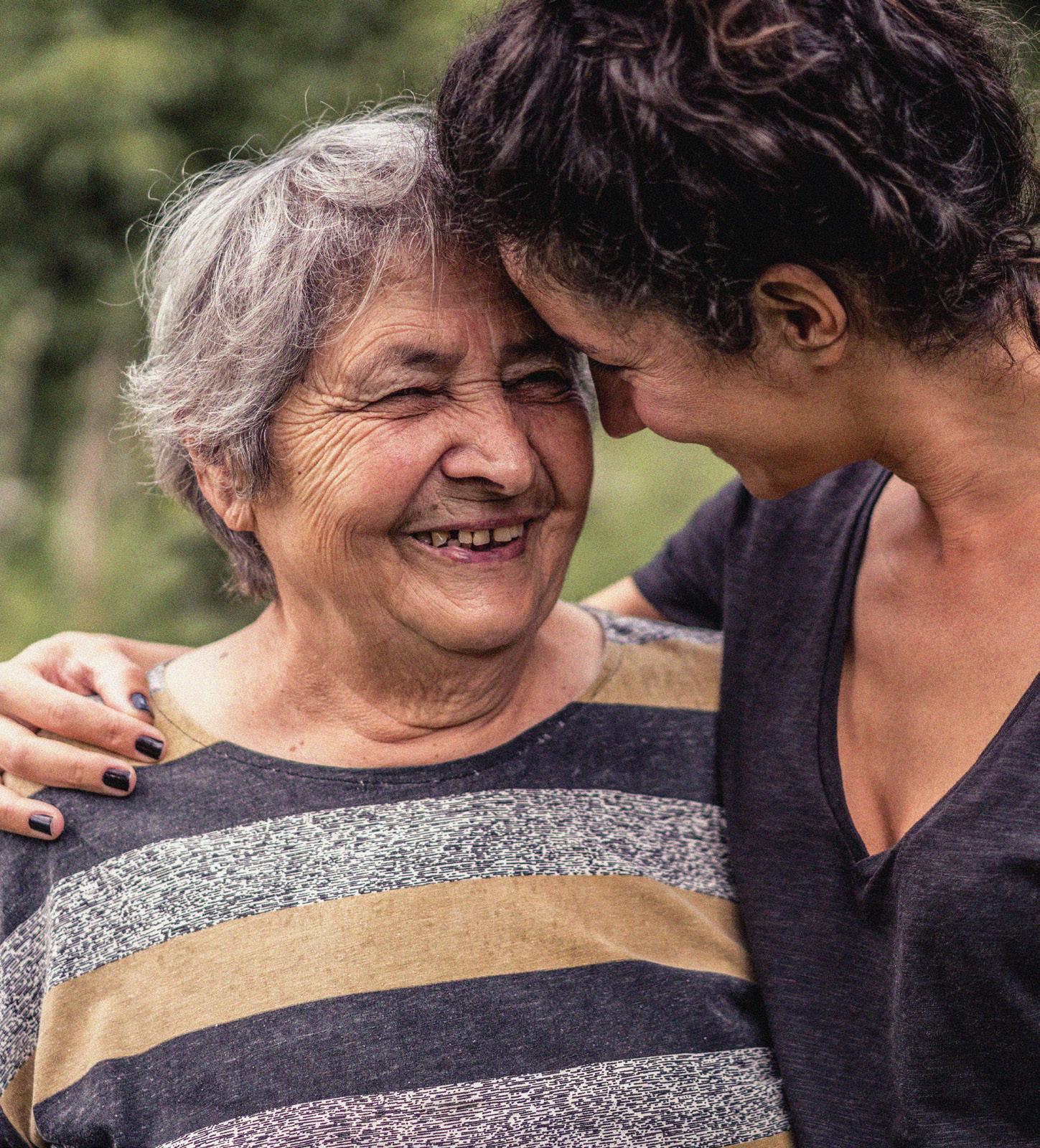
As we expand our emotional bandwidth, we unlock the willingness to allow in positive emotions too (p17), which, for many of us, is the missing piece in the self-care puzzle.
The beautiful truth is that when we stop running from discomfort, and start dancing with it instead, we don’t just survive – we flourish in ways we never thought possible.
Happy reading,

GUEST EDITOR
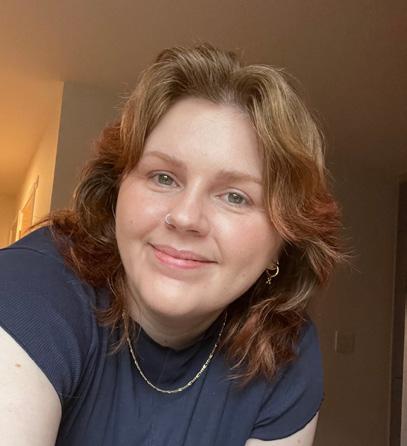
At Happiful, inclusivity, representation, and creating a happier, healthier society are at the forefront of our mission. To find out more about our social and environmental pledges, visit happiful.com/pledges
| @happiful_magazine
What
A radical reimagining of self-care
32 Slow looking
The surprising benefits of viewing art at a mindful pace
61 The dance of recovery
How slf-expression is empowering survivors of domestic abuse
68 Disenfranchised grief
Shining a light on the types of loss that often live in the shadows
75 Gender euphoria
Writer Quinn Rhodes shares his story
16 Five elements of trust
Strengthen your bonds with others using this helpful framework 52 Love MOT
Take stock with a relationship audit
Signs of codependency
25 Dealing with dyscalculia
Signs that trouble with numbers could add up to something more
49 Sisterhood circles
Why women are reviving this ancient tradition of communing together
55 Caring for carers
Supporting a friend who is looking after elderly parents
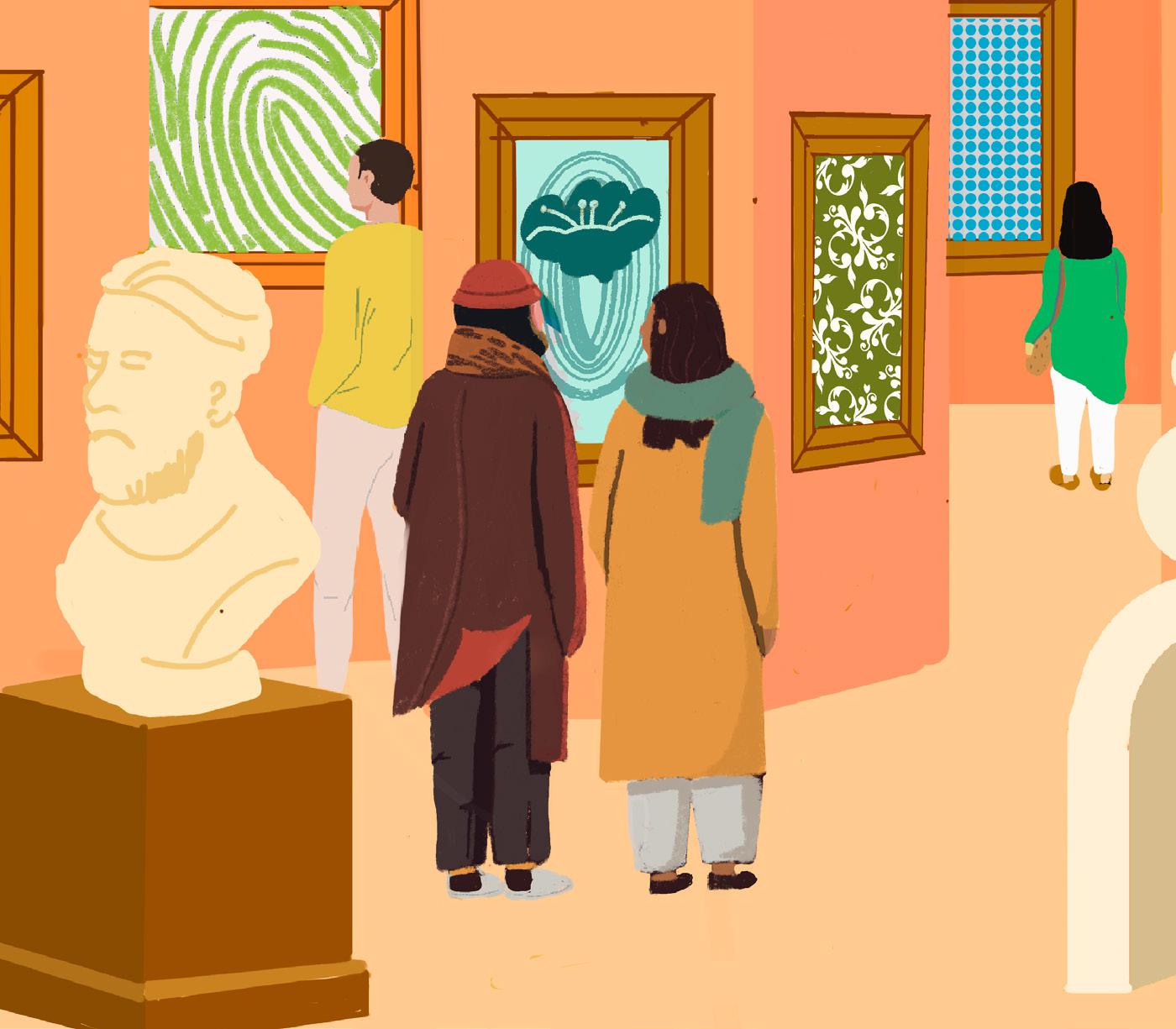
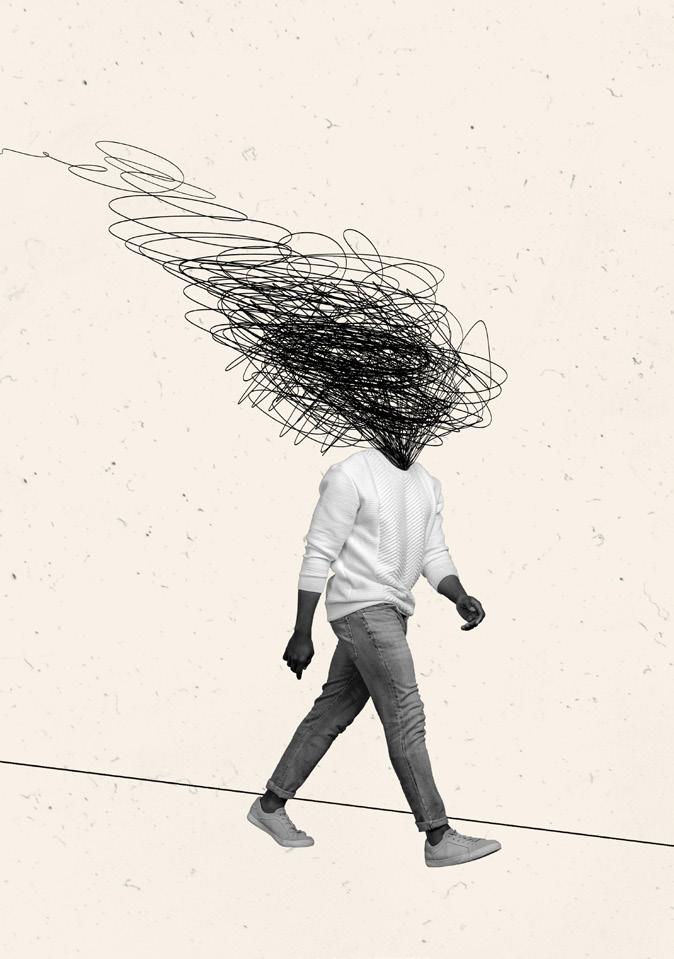
22 Community corner
Innovative projects to inspire your community spirit
28 Anxiety on your mind
Mansi shares how she manages anxiety as she grieves
30 Ask the experts
The science behind breathwork and how it can help with trauma
58 Expert column
Under scrutiny? Hypnotherapy might be the answer
66 Michelle Elman
Let curiosity lead when you don’t know where you’re going
80 Myths, debunked
The truth about burnout
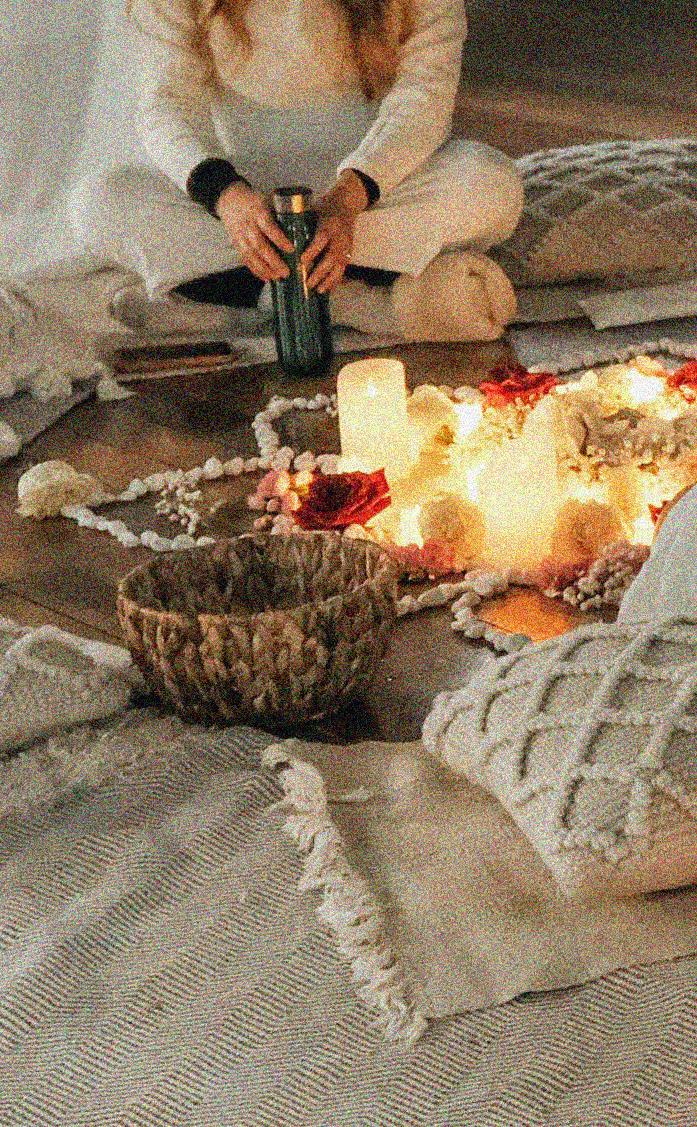


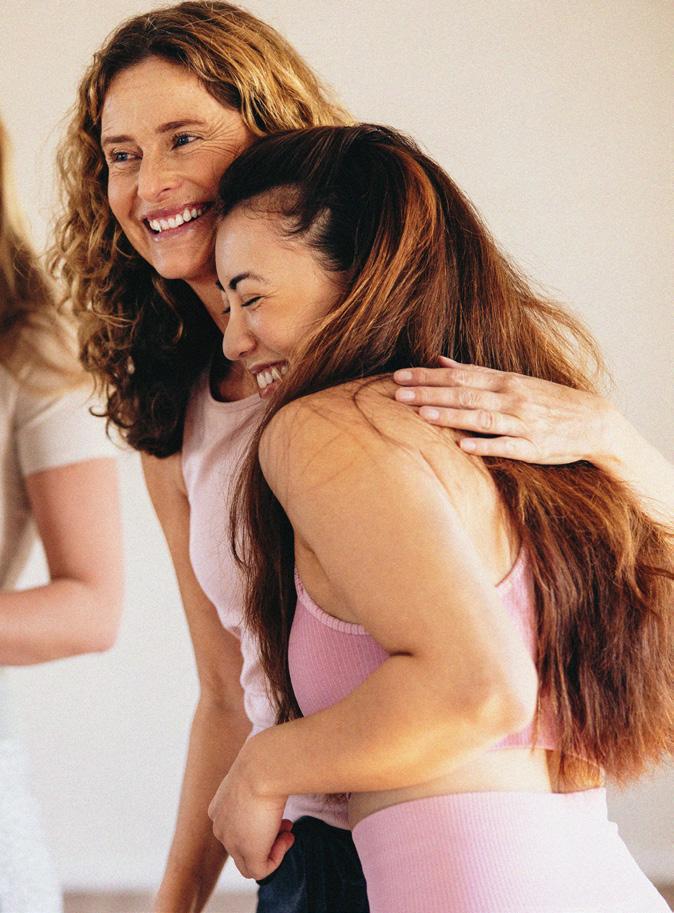
Forging a new path When old stories keep you in a loop, try these journaling prompts to write your next chapter...
Every issue of Happiful is reviewed by an accredited counsellor, to ensure we deliver the highest quality content while handling topics sensitively.
Pain and joy can seem far apart, yet often, they’re inextricably linked – such is the juxtaposition of life. They can coexist, stand alone, or blend into a complex mix, reflecting the emotional tapestry of our lives. Turn to p17 to explore a focused, conscious process for reclaiming pleasure – a practice that fosters a deeper appreciation for life, and builds resilience to help us face life’s challenges.






Meet the team of experts providing information, guidance, and insight throughout this issue
KATHERINE CAVALLO
MA BA(Hons) PGDip MUKCP MBACP MAFT
Katherine is a systemic family and couples psychotherapist.

GIGI KAUR
BSc Psych MSc PGDip MBABCP MEMDRUK
Gigi is a psychotherapist specialising in trauma and energy healing.
EDITORIAL
Fiona Fletcher Reid | Guest Editor
Rebecca Thair | Editor-in-Chief
Kathryn Wheeler | Features Editor
Lauren Bromley-Bird | Editorial Assistant
Kat Nicholls | Brand & Integrity Manager
Bonnie Evie Gifford | Content Writer & Editor
Michelle Elman, Chris O’Connor | Columnists
Ellen Lees | Head of Content
Keith Howitt | Sub-Editor
Rav Sekhon | Expert Advisor
LISA POOLE
BSc ND
Lisa is a specialist dietitian at Precision Dietetics, a private clinic based in Hampshire.

TINA CHUMMUN
MSc MUKCP
Tina is an accredited psychotherapist and trauma specialist.
JENNY WARWICK
MSc Psych MBACP
Jenny offers counselling for stressed out parents of teens who want more connection.
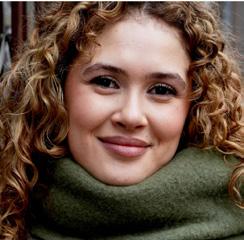
FIONA MCALISTER
BA (Hons) PGDip.HIC Cert MBACP
Fiona is a psychotherapist and supervisor specialising in trauma and somatic work.
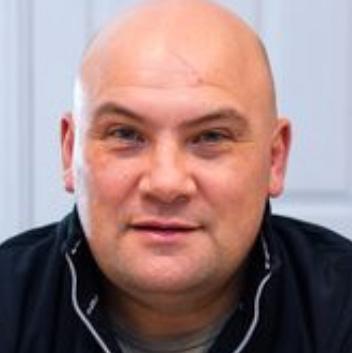
TILLY GREEN
MSc BSc ANutr
Tilly helps individuals through evidence-based guidance and positive relationship with food.
HPD DSFH MAfSFH MNCH (Reg) NCH (Reg)
Chris is an experienced clinical hypnotherapist who has helped hundreds of clients.
ART & DESIGN
Charlotte Noel | Design & Commerce Manager
Rosan Magar | Illustrator & Videographer
COMMUNICATIONS
Alice Greedus | PR Manager
Emily Whitton | Content & Multimedia Editor
CONTRIBUTORS
Sophie Campbell, Jenna Farmer, Tilly Green, Ellen Jones, Samantha Redgrave Hogg, Quinn Rhodes, Clare Seal, Lydia Smith, Emma Victoria Stokes, Holly Treacy-West, Mansi Vithlani, Fiona McAlister
SPECIAL THANKS
Cima Azzam, Fi Bool, Katherine Cavallo, Tina Chummun, Debbie Crew, Heidi Gowthorpe, arah James, Gigi Kaur, Josephine Knechtli, Dr Claire Plumbly, Dr Sally Louden, Lisa Poole, Naomi Potter, Ellie Rowland-Callanan, Dr Zoe Schaedel, Jenny Warwick, Nova Reid, Jillian McBride, Josephine Knechtli
MANAGEMENT
Amy-Jean Burns | Chief Executive Officer
SARAH JAMES
BA (Hons) Dip.Couns MBACP
Sarah is a psychotherapeutic counsellor and holistic practitioner.


ELLIE ROWLANDCALLANAN
BA (Hons) PC-L5 MNCPS MBACP MCIM
Ellie is an accredited psychotherapeutic counsellor.
DEBBIE CREW
MBACP
Debbie is a counsellor supporting people through life’s challenges.
Claire Vince | Chief Operations Officer
SUBSCRIPTIONS
For new orders and back orders, visit shop.happiful.com, or call Newsstand on +44 (0)1227 277 248 or email subenquiries@newsstand.co.uk
CONTACT
Happiful, c/o Memiah, Building B, Riverside Way, Camberley, Surrey, GU15 3YL Email us at hello@happiful.com
HAPPIFUL FAMILY
Helping you find the help you need. Counselling Directory, Life Coach Directory, Hypnotherapy Directory, Nutritionist Resource, Therapy Directory

Teenagers who have moderate or severe period pain (dysmenorrhoea) are more likely to develop chronic pain as adults, new research has found.
The study, published in the journal Lancet Child & Adolescent Health, suggests a link between teenage period pain and adult chronic pain in other parts of the body. Analysing data from more than 1,100 participants, researchers at the University of Oxford found that those with dysmenorrhoea at age 15 had a 76% higher risk of chronic pain by the age of 26, when compared to those without painful menses. Findings also indicate that those with severe period pain were more than twice as likely to develop chronic headaches or chronic knee, wrist, hand, foot, or ankle pain as adults, as well as hip and back issues.

Professor Katy Vincent, gynaecologist and senior author of the study, stresses that many young people don’t seek help for period pain, and those who do are often dismissed. Now, with clear evidence that teenage dysmenorrhoea may be connected to future health outcomes, she hopes that positive changes can be made to offer adequate support.
“We need to improve menstrual education, reduce stigma, and ensure young people have access to effective support and treatment early on. It would be fantastic if 2025/2026 was the year that we really started to take period pain seriously, rather than telling teenagers they ‘just need to learn to live with it’!”
Writing | Fiona Fletcher Reid
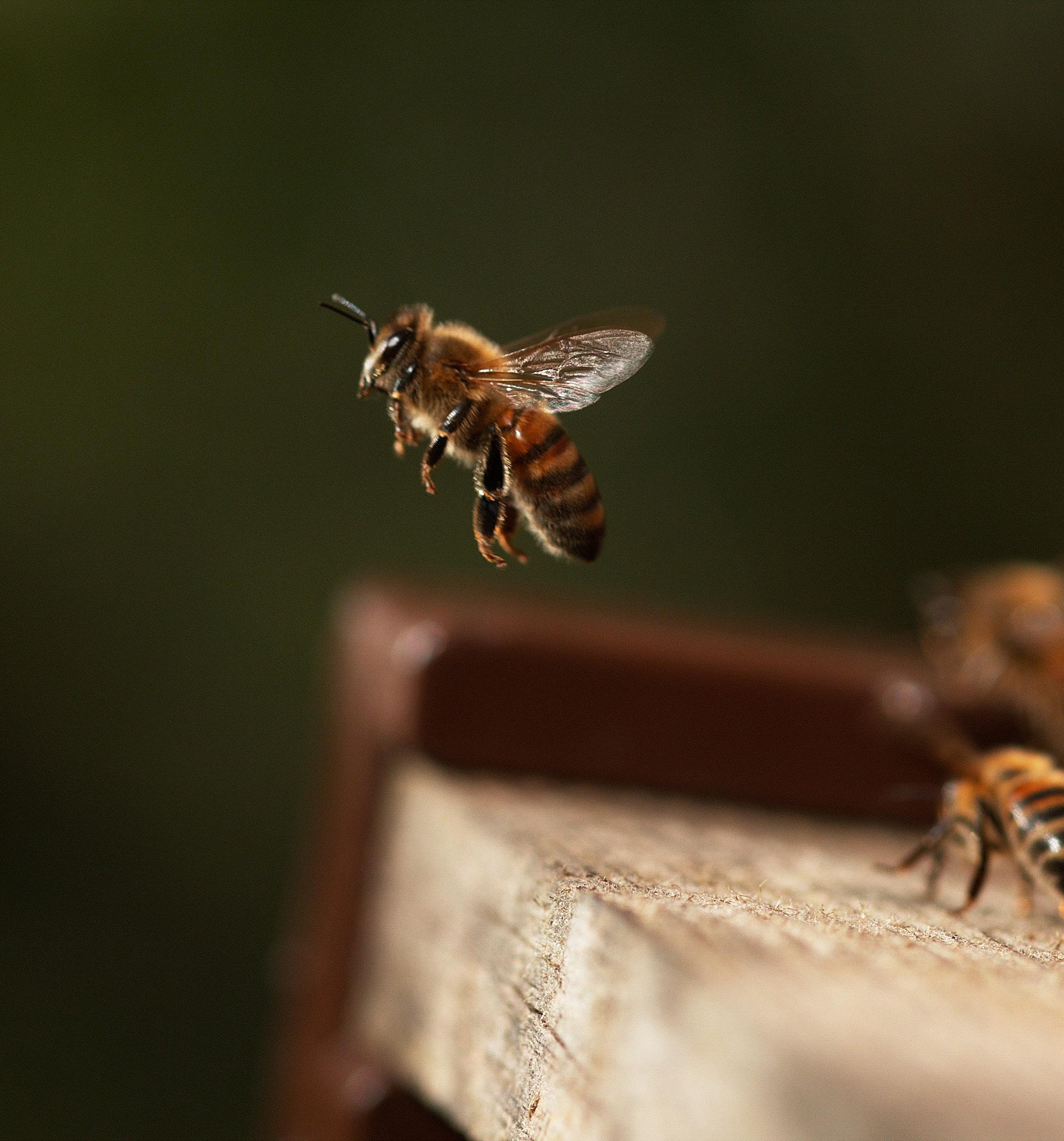

Honeybees are a key part of global food production, yet their numbers continue to decline as a result of nutrient deficiencies, viral diseases, climate change, and other factors. But in a breakthrough study, led by the University of Oxford and published in the journal Nature, scientists have developed a ‘superfood’ that could protect the lives of honeybees.
Normally, honeybees feed on pollen and nectar, which includes certain lipids called ‘sterols’ that are necessary for development. While beekeepers often provide supplementary food sources to help colonies thrive – which is essential if honey is removed from the hive, or there isn’t enough pollen available – the food lacks these hard-to-manufacture sterols.
The technological breakthrough is the culmination of 15 years of research led by Professor Geraldine Wright, and uses gene editing to engineer a yeast that can produce the sterols bees require.
In the study, the food was fed to bees for three months, and resulted in colonies having up to 15 times more baby bees that survived into adulthood. Researchers say that the food should also make the bees healthier, and less susceptible to disease.
As environmental concerns grow, and summers come earlier each year, Professor Wright notes that the nutrient-dense sustenance will be particularly impactful.
While further research is required, the food could be available to beekeepers and farmers within two years, pending larger-scale trials – an environmental development worth all the buzz.
Writing | Fiona Fletcher Reid
New findings from a large-scale US POINTER study, published in the Journal of the American Medical Association, suggest that simple lifestyle interventions could boost cognitive function as we age. Led by the Alzheimer’s Association and University of California Davis Health, the randomised clinical trial involved 2,100 older adults who were at risk of cognitive decline and dementia. Each participant received three main lifestyle interventions that were found to have a significant impact: exercise, improved diet, and socialisation.
Half of the participants attended 38 structured meetings over the course of two years, where they were given guidance on exercise and diet to support brain health, as well as advice on using braintraining games and socialisation to improve cognition. The other half attended six meetings and were left to choose the lifestyle changes that best fit their schedules. While those in the more structured programme showed greater improvement on global cognition, even those with less professional guidance saw benefits from changes to their exercise
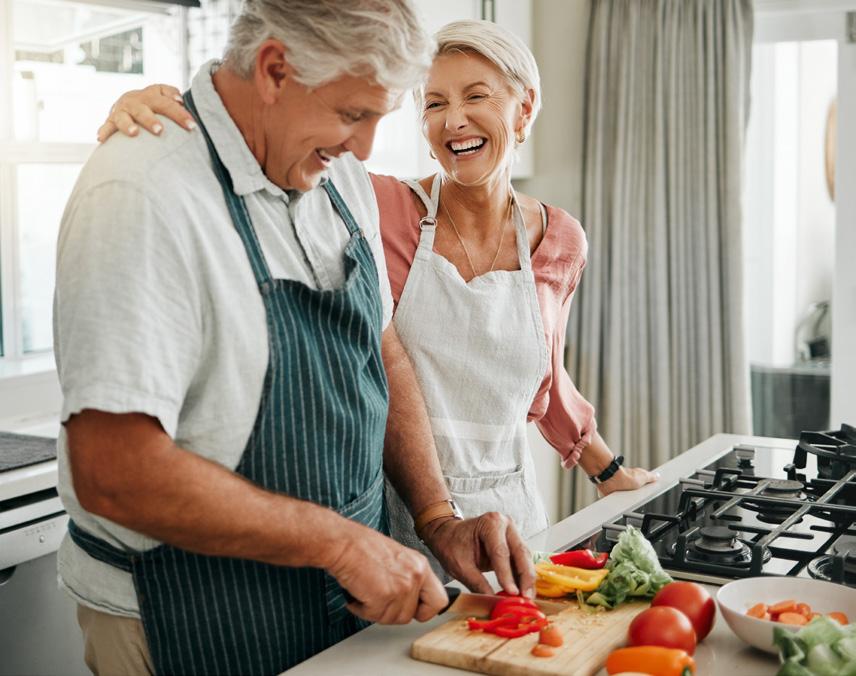
routine, diet, and increased socialisation. The biggest improvement seen for both groups was executive functioning, with boosts to skills like planning and organising. So, the next time you’re weighing up that walk with a friend or cooking a healthy dinner, remember it’s not just your body that benefits. Small changes can result in big rewards.
Writing | Bonnie Evie Gifford
In an effort to encourage more people to get themselves screened for cervical cancer, the UK government has announced that it will be rolling out home testing kits as part of its 10-year health plan, Fit for the Future.
According to charity Cancer Research UK, fewer than seven out of 10 people in England eligible for a screening attend their appointment, which falls significantly below the 80% target proposed by the NHS.
The hope is to reduce the number of people overdue on their screenings by introducing the selfsampling kits to those individuals,
in turn helping to save more lives through early detection.
There are many understandable reasons why someone would feel discouraged from attending their screening, including anxiety about the worst-case scenario, embarrassment, fear of discomfort, or lack of knowledge about the importance of prevention. For others, it’s simply not possible due to the physical barriers associated with disabilities, time constraints, and the cost of travel to attend.
Commenting on this lifechanging initiative, health and social care secretary
Wes Streeting said: “These self-sampling kits represent healthcare that works around people’s lives, not the other way around. They put women firmly in control of their own health, ensuring we catch more cancers at their earliest and most treatable stages.”
While Michelle Mitchell, chief executive of Cancer Research, claims that in-person screenings performed by a clinician are still preferable, this new option marks a progressive step forward in making healthcare more convenient and accessible to all. Writing | Lauren Bromley-Bird
For the first time in 100 years, Argentina has no elephants in captivity, as Kenya (the last captive elephant) was relocated to a sanctuary in Brazil
Martha’s Rule is officially being rolled out in acute hospitals in England, allowing patients and their families to request an urgent review of their care (i.e. a second opinion) when their condition is deteriorating and they don’t feel heard. It also looks to support staff in escalating concerns, or seeking reviews from other teams. Hospitals will have a helpline, connecting to a critical care outreach team, with the goal of empowering patients, and providing lifesaving treatments.
Research from the University of Oxford has highlighted that policymakers underestimate the public’s desire for climate action. Polling attendees at the UN’s Environment Assembly on what percentage of the global population they believed would give up 1% of their salary to help fix climate change, they said 37% – when, in reality, research suggests this is 69%!
Motion sickness might just have met its match! A 2025 study in Frontiers in Human Neuroscience suggests that tuning in to the right music could alleviate symptoms of nausea and dizziness, noting that “soft and joyful” music was best (~57% reduction in symptoms), while sad music actually had less of an impact than doing nothing (40% vs 43%). So turning to a good playlist sounds like a plan on your next travels.
Courts in St Lucia have decriminalised same-sex conduct, in a step forward for LGBTQIA+ rights
Richmond Fire Department, in Virginia, saw women outnumber male graduates for the first time in the deptartment’s history (at 59%)
A landmark settlement in a lawsuit against artificial intelligence company Anthropic could lay the foundations for other creatives to fight against piracy in the AI age. In a deal that is pending approval by the courts, the company has offered to pay $1.5 billion (equating to about $3,000 for each author of the half a million books referenced in the case) after using pirated versions of books to train its AI chatbot, Claude. Mary Rasenberger, CEO of the Authors Guild, said: “This is an excellent result for authors, publishers, and rightsholders generally, sending a strong message to the AI industry that there are serious consequences when they pirate authors’ works to train their AI”.
A recent study, published in JAMA Neurology, suggest that early intervention with hearing loss could reduce the risk of dementia. The research, which followed 2,953 participants over 20 years, found that people who used hearing aids were 61% less likely to develop dementia, emphasising the importance of treatment and support in the early stages of hearing loss.
A 14-year-old from Devizes, Wiltshire, spent his summer working on a project, Lunch Box Buddy, to ensure local kids didn’t go hungry while schools closed, conscious that 16% of children in his town rely on free school meals. Buddy Muns planned to give away 50 packed lunches three to four times a week, but thanks to donations and sponsorship (including £1,000 from food manufacturer Bakkavor), he was actually able to provide 600 lunches, along with 1,000 breakfasts, lunches, or dinners to be eaten at home.
Amid concerns of a ‘reading crisis’, Denmark announced plans to abolish its tax on books, which, at 25%, is the highest in the world. However, more investment will likely be needed to improve reading rates, as even with books being tax-free in the UK, a YouGov poll in early 2025 revealed that 40% of Brits hadn’t read (or listened) to a book in the past year.
Scientists from University College London claim to have created an ‘indoor solar panel’, which could power everyday electrical items instead of batteries
New internet safety laws have seen the first person to be sentenced (to nine years in prison, subject to a hospital order) for encouraging suicide and serious self-harm online, pleading guilty on both counts.
With 630,000 people around the world aged 100 or older, the United Nations has revealed the 10 countries where the majority of them live, with Japan coming out top with one in five centenarians living there. It’s believed a combination of the healthy living environment, nutrition, and exercise is what supports this longer life expectancy, which, overall, is an average of 88 for women, and 82 for men.
For some people, silence is where they find their peace. But for others, it can feel like an entirely different experience
Writing | Holly Treacy-West
Many of us grew up being told to ‘be quiet’. And, when we’re struggling, we’re often encouraged to ‘get quiet’ – as if stillness is some kind of universal remedy. But what if quiet doesn’t feel calm at all? What if, instead, it feels like your whole system is short-circuiting?
This goes beyond awkward silences in conversation. It’s the panic that creeps in when everything slows down. It’s the racing heart, the sweaty palms, the sudden need to fill the space with noise – any noise – because the quiet feels unbearable. If silence sends your nervous system into overdrive, just know you’re not alone.
Sedatephobia – the fear of silence – affects more people than you might think. Here’s what’s really going on when stillness doesn’t feel safe, and why your response makes more sense than you’ve probably been led to believe.
What is the fear of silence?
According to Dr Claire
Plumbly, clinical psychologist and author
of Burnout, sedatephobia isn’t a formal diagnosis. “Silence itself isn’t inherently threatening, but, for some people, it’s experienced as unsettling or even distressing,” she explains.
From a nervous system perspective, Claire says silence strips away external cues of safety, leaving us face-to-face with our inner world – and that’s not always a comfortable place to be. “If your system is primed to detect threats, silence can feel like a warning, not a relief,” she says. “That association lives in all of us, but, for some, the tolerance for silence is particularly low.”
Most of us have been there: when your mind feels too full, but the idea of being alone with your thoughts seems even worse. Silence creates space, and that space can quickly fill with things you’ve been trying to outrun. Claire explains that when things go quiet, our inner critic can get louder. Old memories, buried feelings, or fears we’ve
been avoiding, can start to surface. “For those who grew up in chaotic or unpredictable environments, silence might have been the moment before things got worse – the ‘calm before the storm’, or how the family had to respond to an abusive adult by treading on eggshells,” she says. “So, silence doesn’t feel peaceful. It feels like they are listening out for signs of danger.”
Layer on top of that our alwayson lifestyles – the constant noise, stimulation, and digital distractions – and it’s no wonder silence can begin to feel ‘unnatural’.
When it comes to physical cues, Claire says people often feel restless or on edge when things go quiet. “They can feel tense, fidgety, unable to sit still – with a racing heart or a sense of needing to ‘do something’,” she explains. “Emotionally, they might experience anxiety, dread, or irritation.”




According to Claire, people with sedatephobia often avoid activities that involve stillness or silence – meditation, journaling, or even sitting with a coffee without multitasking. At home, there might be a constant need for background noise: the TV on, music playing, or a radio humming in another room. Sleep, in particular, can be a struggle. “We need to reduce noise and stimulation to fall asleep, yet for these people, silence feels unsafe, and that prevents them from switching off,” Claire explains. To cope, many turn to tools like ASMR videos, podcasts, or white noise apps to help them drift off.
In relationships, sedatephobia can show up as a need for constant conversation. At work, it might mean filling every pause during brainstorming, or avoiding solo thinking time.
So, where does this fear of peace come from? Is it rooted in early experiences, shaped by trauma, or simply a byproduct of modern life’s relentless pace? According to Claire, it’s often a combination of all three.
“From a therapeutic perspective, we’d explore early experiences where silence felt unsafe,” she explains. That might include times when emotional
neglect, unpredictability, or trauma led the brain to associate quiet with threat.
As children, we need support to navigate big feelings. But, for some people with a fear of silence, those feelings might have been met with punishment instead of comfort – being sent to their room for crying, or told to ‘calm down’ rather than being supported to feel safe.
Claire also points out that today’s world isn’t exactly silencefriendly. “Our nervous systems are constantly hit with notifications, streaming, and background noise – to the point where many of us have simply lost our tolerance for sensory rest.” >>>


Interestingly, Claire notes that a fear of silence can sometimes be linked to burnout, especially when we’re not getting true restorative rest, or are constantly multitasking to avoid the quiet. Rather than pushing someone straight into silence, Claire focuses on gently building their capacity for it, starting small, and in ways that feel safe. “Compassion work is key, especially if the inner critic becomes louder when things go quiet,” she says.
For those whose fear of silence is rooted in past experiences, Claire adds that eye movement desensitisation and reprocessing (EMDR) can be a powerful tool. “Therapy plays a role in helping the body learn that silence doesn’t always equal threat, so it no longer needs to be feared.”
Before jumping into meditation marathons, or booking a silent retreat, start with gentle experiments. Claire encourages people to soften their approach to
silence, not by forcing it, but by becoming curious about what’s already there.
“Notice the sounds within the silence,” she suggests. That might be birds outside, your breath, or the hum of distant traffic; subtle cues that help the nervous system stay anchored in safety.
When it comes to supporting a loved one with a phobia –whether it’s sharks, heights, or silence – remember that the person you care about isn’t being difficult or dramatic; their nervous system is likely working overtime to keep them feeling safe, and to avoid a full-blown panic response.
To best support someone with sedatephobia, Claire suggests gently offering moments of quiet companionship by simply sitting together without feeling the need to fill every pause. She also encourages framing silence as something that can be built up over time, like a skill. “With enough co-regulation and gentle support, silence can eventually feel less like a threat,” she says.
When working with difficult emotions, thoughts, and experiences, try this mindfulness-based approach to develop self-compassion and resilience
RRecognise
Tap into the present moment, and simply acknowledge the emotion, thought, or physical sensation you’re experiencing. For example, you might notice butterflies in your stomach, or a particular negative thought.
AAllow
Accept that the experience is already happening, instead of trying to resist, deny, or fix it. This doesn’t mean you have to like the experience, just that you’re not adding extra suffering by fighting reality.
I NInvestigate
Look a little deeper into the experience. You might reflect on how the emotion feels in your body, think about what is bubbling underneath the surface, or whether this is related to something from the past. The key here is to approach with curiosity, rather than criticism.
Nurture
Offer yourself some comforting words and acts of care that you might give a good friend. This step helps create a healthy distance from overwhelming emotional experiences, while maintaining self-compassion.
These vital principles of trust, from psychologist Dr Henry Cloud, might just provide the blueprint for strengthening your relationships
Trust forms the foundation of strong relationships, whether with romantic partners, friends, or co-workers. But how is trust formed? Here, we’re sharing the five essentials of trust, so that you can begin building a foundation of trust with those you care about.
Understanding
When we seek to understand another person – how they feel, what they want – we are saying, ‘you matter’, and that’s a powerful thing. It helps them feel seen, which then allows them to feel safe enough to lower defences they may have inadvertently put up. This sense of openness invites trust.
Try it: Practise active listening without judgement, and make time to understand the other person.
Knowing someone’s motive or intent can set your mind at ease. What does this person truly want from this relationship? Of course, the nature of this will depend on the type of relationship, but understanding someone’s motivation in any situation can help you feel more trusting.
Try it: Have a conversation about what you and the other person are looking for in this specific situation.
Writing | Kat Nicholls
Does the person you’re building trust with have the ability to carry out what they say they will? For example, if a romantic partner has agreed to move on from an argument, can they do this? And if they don’t have that ability, are they willing to work on it? Remember, this works both ways.
Try it: Be open to personal development within the relationship, to expand ability.
When we bring someone into our orbit, we likely know what traits we value. At a fundamental level, this can influence the relationship (for example, wanting distance from someone dishonest), but when it comes to trust, we have to go deeper. What character traits are you looking for in this particular relationship?
Try it: Consider what character traits are important in each relationship you’re looking to build trust in, and ask how you can demonstrate these traits yourself.
Actions speak louder than words, and trust flourishes when we have a track record to refer back to. This may be recognising that a friend has always been there for you during tough times, or that a family member repeatedly does what they say they will. Here’s the kicker: to get that track record in the first place, we need to cultivate (you guessed it!) trust.
Try it: When trust is faltering, look back at their track record. This isn’t a guaranteed prediction of someone’s current or future actions, but it may help you gain clarity on how to move forward.
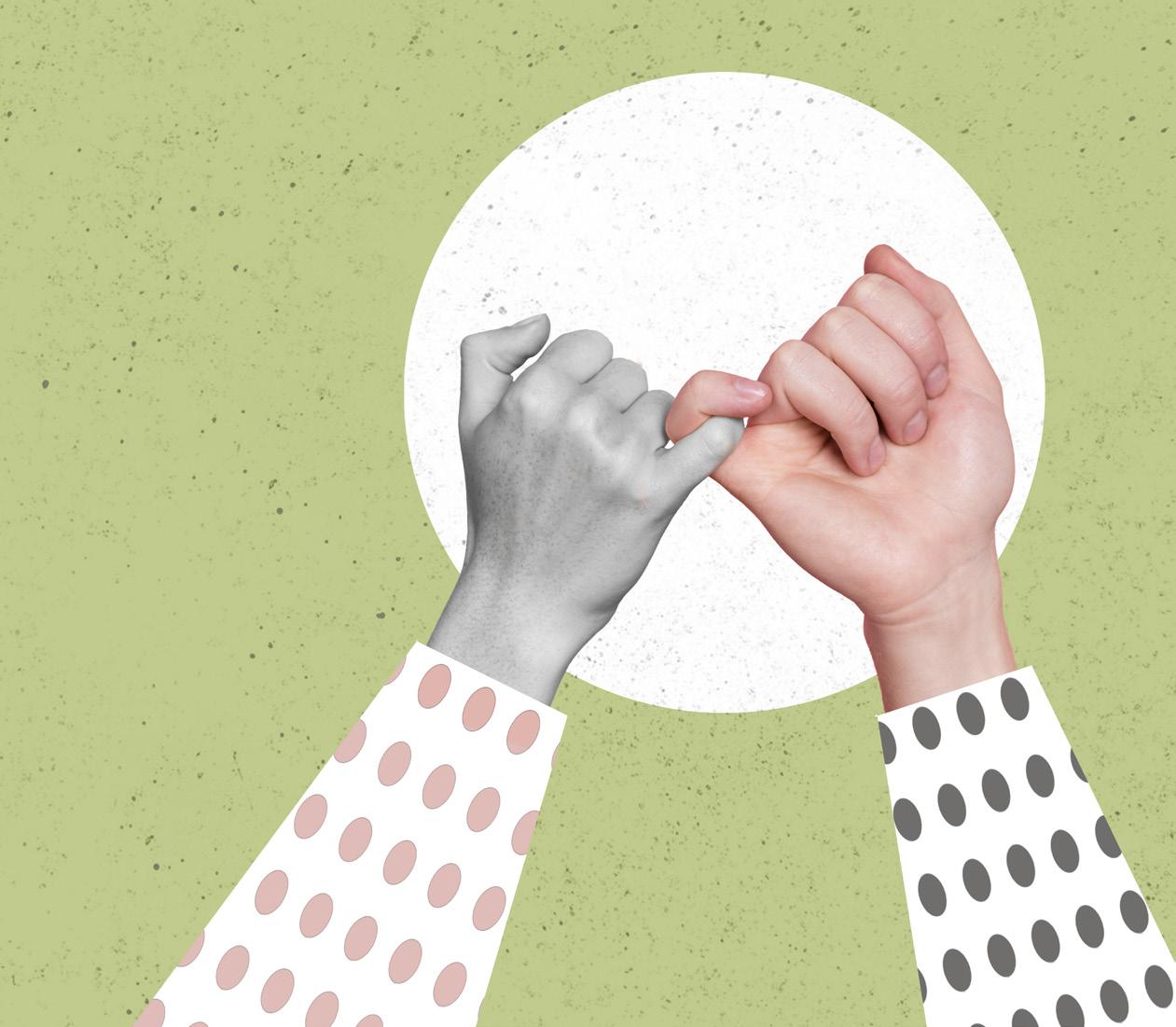
Does modern life make you too stressed to find joyful moments? Reclaiming pleasure, in all its forms, could be the missing piece of your self-care puzzle
Writing | Ellen Jones
Think about the last time you gave yourself permission to rest, to savour something you love, or to feel joy without guilt. How often does that happen in your life? For many of us, pleasure is the first thing to slip away when life gets busy or overwhelming. It can feel indulgent, even selfish, to prioritise joy when the world is full of challenges.
But, what if pleasure wasn’t a luxury, but a necessity? Or more than that – an imperative? That is the the central idea in adrienne maree brown’s (who chooses not to capitalise her name) transformative book, Pleasure Activism, which argues that centring joy is not only good for our wellbeing, but essential for creating social change. Rather than treating pleasure as an ‘extra’, brown invites us to see it as a source of strength, resilience,
and connection. In adrienne’s own words: “Pleasure activism is the work we do to reclaim our whole, happy, and satisfiable selves from the impacts, delusions, and limitations of oppression and/or supremacy.”
Why we
Pleasure can be tricky for me. Growing up, I experienced quite extreme homophobic bullying. By the time I was 17, I was already recognised as a campaigner in LGBTQIA+ rights, but that came with repetitive cycles of depression, burnout, and selfharm. As a queer, disabled woman, I’ve found that repression, selfdenial, and necessary suffering are not just things I might inflict on myself, but are expected –demanded, even – by society, and as an adult, I’ve rallied against the notion that to have an existence like mine must be sad.
For others, religious and cultural messaging may position pleasure as sinful, creating guilt around self-care. Trauma responses can make pleasure feel unsafe, triggering anxiety during good moments. For marginalised identities, pleasure can feel too risky, because it requires dangerous vulnerability. Those with perfectionist tendencies often withhold enjoyment until they’ve met impossibly high standards. Recognising all of these as learned survival responses, not character flaws, can initiate the process of reclaiming joy.
While self-care language has gone mainstream, embracing pleasure still feels taboo. Yet research shows positive emotions are particularly protective during stress – a 2019 study in Affective Science found they can dampen >>>

negative reactions and speed up recovery from difficult events. Similarly, reviews of emotional repression, such as a 2019 article in the International Journal of Psychotherapy Practice and Research, suggest that denying pleasurable and positive feelings can weaken immune function, and is associated with poorer mental and physical health outcomes.
We often associate wellness with practices that are functional, such as exercise, therapy, nutrition, and meditation. These are all important, but they can sometimes feel like another set of obligations. Pleasure, on the other hand, does not ask you to achieve anything. It simply asks you to

notice what feels truly good – and let yourself experience it.
What does pleasure activism look like?
Allowing yourself to have pleasure might mean lingering over a meal with friends rather than rushing through it, putting on music and dancing in your kitchen, or turning off mobile notifications and soaking up some fresh air. These might sound small, but they are acts of resistance in a culture that constantly tells us to optimise, produce, and endure –no matter what. The prioritisation of pleasure, therefore, is a prioritisation of wellbeing. Pleasure can also reconnect us with our bodies. For people
whose relationship with their body has been shaped by shame, trauma, or oppression, this can be especially powerful. To experience your body as a source of joy, rather than a site of pain or scrutiny, can feel alien at first – but ultimately healing. Through touch, movement, creativity, or rest, pleasure allows us to reframe the body as something worth caring for, not because of how it looks or performs, but because of how it feels or even, if feeling is too much, exists. Working with pleasure in the body can be particularly difficult for some, so working with a trained professional or somatic therapist is advised if you’re concerned.
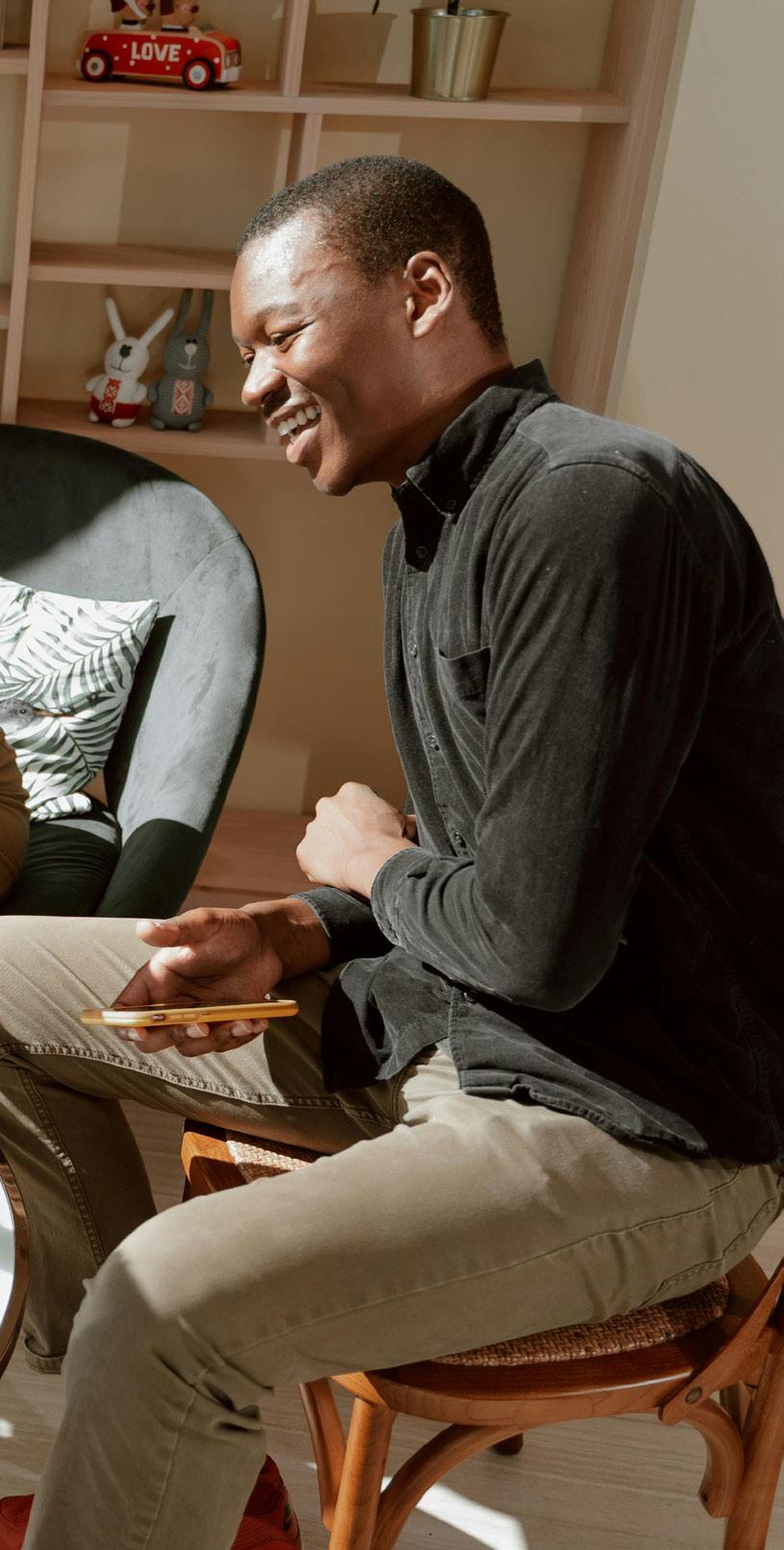
Challenging the narrative
Of course, connecting with pleasure isn’t always easy in a world that seems to directly shame the act itself. Pleasure activism directly resists this idea, reclaiming pleasure in all its forms as a source of strength, creativity, and solidarity. In that sense, every moment of unapologetic joy becomes an act of defiance. When we experience collective joy, we create resilience and challenge the narrative that pleasure must be earned individually, or consumed privately.
For me, embracing pleasure activism has meant learning to soften, rest, and allow joy, even when the world feels heavy.

Especially when the world feels heavy. It has meant finding fuel in laughter, intimacy, and rest – fuel that makes it possible to keep going.
I am still not perfect at it, but I keep trying. It took years of conditioning to distance myself from pleasure, it would be unrealistic to assume that would heal overnight. By paying attention to pleasure, we nurture not only our personal wellbeing, but also the conditions for collective wellbeing. Pleasure is not the opposite of resistance, it’s what makes resistance sustainable and, therefore, possible. And in fraught times, that may be the most radical lesson of all.
Anchor into your values. As clinical hypnotherapist Josephine Knechtli puts it: “When we live orientated towards our values, that brings pleasure to the fight. The grit, determination and relentless continuation of choosing to fight for what is meaningful to you – there’s pleasure in honesty.” Try it by writing down one value you acted on today, and allow yourself to linger in the pride or satisfaction it brings.
Schedule a daily micro-pleasure. Put a 10-minute slot in your calendar, and protect it like a meeting. Use it to do something small but joyful – play your favourite song, step outside for fresh air, eat something you love slowly, or message a friend who makes you laugh. These ‘pleasure pauses’ calm stress hormones, and restore energy.
Trade one ‘should’ for a ‘want.’ Once a week, swap an obligation for delight. That might mean skipping a workout to go dancing, replacing a chore with a walk by the sea, or postponing an appointment in order to have coffee with a friend. This builds the habit of treating pleasure as care, not as a guilty extra.
Insomnia can strike at any age, but with a high number of people experiencing it in connection with menopause, we’re sharing how to get the sleep you need as you go through ‘the change’
Writing | Lydia Smith Illustrating | Rosan Magar
Have you found that as you’ve got older, you are tossing and turning more at night? Perhaps clock-watching as the sun begins to rise has become a dreaded routine. What you may not realise is that this shift in sleeping patterns can be related to menopause.
According to 2023 meta-analysis, published in the journal Sleep and Breathing, up to 60% of women experience disturbed sleep after menopause, and up to 47% experience it during perimenopause. Yet, many women don’t realise that insomnia and menopause are often related.
“Insomnia can show up in different ways – struggling to fall asleep, waking frequently during the night, or waking up early and not being able to get back to sleep. This can lead to low mood, poor concentration, and fatigue,” says Dr Naomi Potter, a menopause expert and founder of Menopause Care.
“Falling levels of oestrogen and progesterone play a key role,” explains Dr Potter. “Oestrogen helps regulate serotonin, a neurotransmitter that influences sleep, while progesterone has a sedative effect. As these hormones decline, it becomes harder to get the restorative sleep your body needs.”
The hormonal changes also affect the brain’s temperature regulation, leading to sudden temperature surges and sweating. “These can wake you during the night and make it hard to get back to sleep,” adds Dr Potter.
Other symptoms, such as bladder changes, restless legs, sleep apnoea, and muscle aches and pains can also contribute. So how can you improve your sleep during menopause?
Cool your bedroom
“A fan, cooling pillow, and/or light bedding can make a real difference,” says Dr Potter. “Stick to a regular sleep-wake schedule,
even at weekends, to help regulate your body clock. Get outside in natural light early in the day, and dim interior lighting in the evening.” You could also try breathable cotton or moisturewicking sleepwear, and a cooling mattress topper.
A 2023 review published in Nutrients states that all menopause systems are influenced by lifestyle factors. So what changes can you make to minimise sleep disruption?
“Avoid eating too close to bedtime, and try to keep blood sugar levels stable throughout the day,” says Dr Potter. “Don’t eat or drink heavily just before bedtime – hydration earlier in the day is better to avoid nocturia (peeing too much at night) and digestion-related awakenings. Aim to exercise earlier in the day, but gentle yoga can be helpful for relaxation in the evening still.”
Try herbal remedies and supplements
Dr Sally Louden, a British Menopause Society-recognised menopause specialist and co-founder of Everything Menopause, warns against relying too much on over-the-counter sleep medications.
“A lot of sleep medications can be addictive, and some traditional treatments actually only add an extra 20 minutes of sleep on to a night,” she says. “Herbal remedies, such as red clover, have been shown to reduce hot flushes in some women, and therefore might also help sleep. If someone has restless legs, extra iron might help, too.”
Magnesium, B vitamins, and herbal remedies such as Valerian root, may also help, but you should always check with your GP to ensure these don’t interact with other medications.
Seek medical treatment
According to Dr Louden, hormone replacement therapy (HRT) can
help both sleep and anxiety in menopausal women: “One of the progestogens that we use in HRT – micronised progestogen – is metabolised through the hypothalamus. This part of the brain is responsible for sleep and anxiety, so it can help sleep and general wellbeing. It should be taken at night for maximal effect.”
Dr Zoe Schaedel, an accredited British Menopause Society specialist, adds that local vaginal oestrogen can be used to help relieve bladder or vaginal symptoms that disturb sleep.
Treat individual symptoms
What contributes to poor sleep is often unique to the individual, which is why it’s important that care is individualised. “We have to look for other medical conditions we can treat,” says Dr Louden, noting that sleep apnoea, for example, requires proper diagnosing and appropriate treatment.
Mood problems, such as anxiety, are also common in menopause.
“Counselling might be needed. Some antidepressants can in fact aggravate sleep, such as the SSRIs like sertraline or citalopram, so adjusting the time of the day that they are taken can optimise sleep,” says Dr Louden.
Techniques to reduce waking during the night
And if you wake in the night, Dr Schaedel suggests trying some relaxation exercises, such as box breathing (inhaling for a count of four, holding for a count of four, exhaling for a count of four, and then holding again for a count of four). She also suggests removing visible clocks to reduce anxiety, and that if you’re awake more than 20 minutes, you should get out of bed and do a calming activity, such as reading.
Remember, you don’t have to struggle alone. Speak to loved ones for support – and with the right treatment, you’ll be able to get a good night’s rest.
From a newsroom championing under-represented voices to a local shop that runs entirely on volunteers, here are six inspiring community projects
Hope is potent fuel for the future. But as public services seem harder to access, and the cost of living continues to create added pressure, optimism can feel impossible. But once you start noticing the grassroots community projects peppered all over the country that are providing others with the tools they need, you may just start to see the beautiful glimmers of hope that you’ve craving.
Across the UK, ordinary people are creating extraordinary initiatives that address everything from social isolation to food insecurity, mental health support, and cultural understanding. These projects share a common thread: they emerge from genuine community needs, and are kept going by the sheer passion and dedication of regular people.
Ready to feel the community spirit? Here are six community projects that inspire hope.
In 2020, reporting of the Scottish neighbourhood of Govanhill was overwhelmingly negative, and frequently focused on crime and related issues, which overshadowed the area’s strong sense of community. In response,
local residents joined forces to challenge negative stereotypes, break down cultural barriers, and bring people together – all while providing a space to learn new skills and share resources. Their community newsroom is a collaborative space for coworking, workshops, and media training, while their free magazine offers a platform to share stories and photographs from underrepresented voices – designed to foster cross-cultural understanding within the community.
They offer community reporter training, storytelling workshops, and participatory research projects, as well as exhibitions and screenings. Founder and editor Rhiannon J Davies says: “Starting the magazine seemed like a way to challenge negative perceptions about the area, provide a platform to marginalised voices, and bring people together. [...] I’ve loved every second so far.”
Check out greatergovanhill.com for more information.
What began during the pandemic as a response to food insecurity and isolation, has now grown into a trusted hub of community life in Hackney and Islington. The Carib Eats team hosts weekly canteens
to provide affordable, culturallyrelevant meals. More than that though, its spaces have become gathering places that blend food with culture, music, storytelling, and intergenerational exchange. Founder Ali Kakande says: “Our canteens are mainly for elders from the Black community, lovingly known as the ‘canteeners’. To date, we’ve shared more than 10,000 meals, played countless rounds of bingo, and created a space where joy is just as important as nourishment.”
More information is available at caribeats.org
Started by a mum looking to connect with likeminded parents, Blaze Trails is a free, peer-led network that gets new parents walking outdoors with their babies. Parents who take part say that the group walks have a significant positive impact on their mental health, including combatting loneliness, building confidence, and making friends.
With the risk of mental health issues developing before and after a new arrival for both men and women, projects like these offer much-needed social support for vulnerable parents during difficult, often isolating, times. Blaze Trails
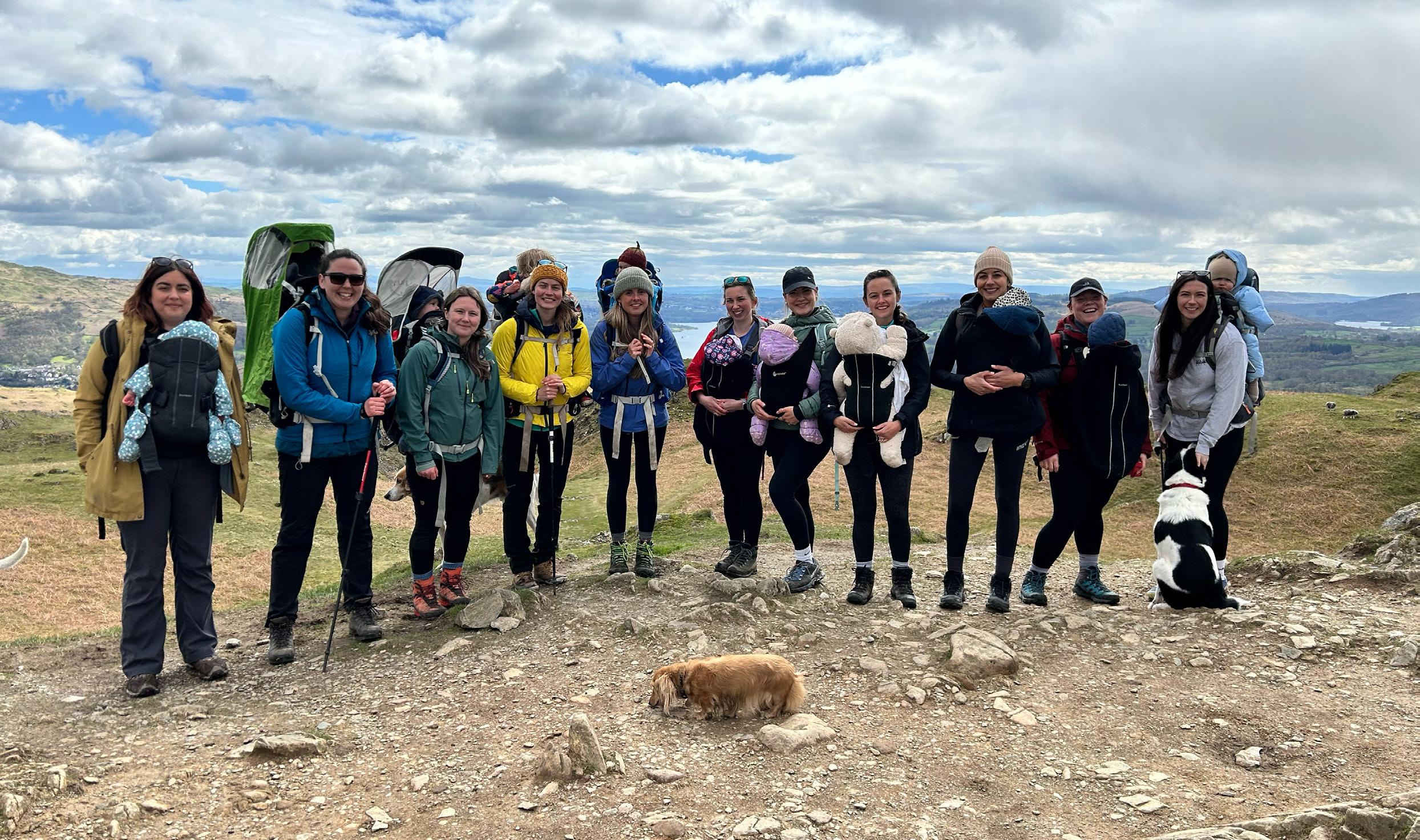
now has more than 80 groups meeting across the country, and 20,000+ members.
Learn more at blazetrails.org.uk
Part of The Food Forest Project and based in Somerset, Wedmore Village Farm is a space for community members to connect with their land, growers, and food. The farm is home to the Food Bank Market Garden, growing free food for local schools and food banks. The team runs workshops, events, and social programmes, such as the Care Farm scheme, which helps adults with learning difficulties.
It also works collaboratively with Bridgwater & Taunton College to support children with special educational needs and disabilities to transition out of the college environment and into
the workplace, teaching groups about construction and organic agriculture.
Learn more about the farm at wedmorevillagefarm.co.uk
Combining fitness with community support, GoodGym is a group of runners helping isolated older people, and various other projects across the UK. Members commit to regular visits with older adults who need companionship, while the group also tackles practical tasks like gardening for community centres, or clearing litter from local parks. Since launching in London in 2009, GoodGym now operates in more than 50 areas nationwide.
Founder Ivo Gormley created GoodGym after considering rising loneliness levels, and realising communities had so many unmet needs. The model uses exercise as
a form of community service, with runners reporting their ‘missions’ provide far more motivation than traditional fitness goals.
Find local initiatives at goodgym.org
Small villages, such as Ilsington in south Devon, are often so rural that they lack access to everyday items. That’s why, when the previous village shop (which had served the community since 1905) closed in December 2008, residents knew something had to be done. After years of fundraising, the store reopened in 2012, and is now run entirely by the 59 volunteers who pick up shifts throughout the week.
More than just a place to grab groceries, locals say it is a valuable community hub that offers a place to bring villagers together. The shop is a lifeline to elderly residents, as well as those without access to transport, offering local produce, homemade cakes, and flowers, alongside everyday essentials.

Your present circumstances don’t determine where you can go; they merely determine where you start
Nido Qubein
Do you find yourself struggling with numbers or dreading maths? Here, we take a look at ‘dyscalculia’, and what can be done to help you navigate daily life with confidence
Writing | Bonnie Evie Gifford
As adults, there are certain tasks that crop up in daily life that we’re expected to just ‘get’. It could be remembering a postcode, being able to work out the correct change to give someone, or what the percentage tip to add on to your payment at a restaurant equates to. But, for some, numbers are a genuine problem, and one that can’t be solved simply with focused thinking. Also known as maths dyslexia, ‘dyscalculia’ is a learning difficulty that affects how someone’s brain processes numbers and mathematical information, with around one in 20 people believed to have it. Similar to how dyslexia affects areas of the brain related to reading, dyscalculia affects areas
dealing with maths and numberrelated skills and understanding. Typically, signs of this type of neurodivergence appear during childhood, often when you start learning how to do basic maths. However, it’s very possible to reach adulthood without knowing that you have it. There is also a specific form – acquired dyscalculia – which can develop at any age, and, rather than being a result of a learning disorder, is caused by damage to the brain.
Processing a maths equation or navigating a numbers challenge takes more steps and skills than many people realise. They utilise many different areas of the brain – from visual processing
MATHS ANXIETY VS DYSCALCULIA: WHAT’S THE DIFFERENCE?
It’s important to note that maths anxiety and dyscalculia are not the same thing: you can be anxious about maths without having dyscalculia, and you can have both maths anxiety and dyscalculia. While dyscalculia is a learning difficulty affecting your ability to understand and work with numbers, maths anxiety is an emotional response that results in discomfort, fear, or worry when trying to do maths. While both can leave you feeling anxious and avoiding numbersbased tasks, the latter can create a cycle where the fear or nerves actually impact your performance negatively. >>>

to both short and long-term memory, language, calculation, and understanding of quantities and amounts – which, together, allow us to solve problems and work with numbers. Someone with dyscalculia might struggle with one or more of these elements. Symptoms can vary greatly depending on which part of the process you struggle with, your age, and what kinds of situations you encounter that involve maths. A young child might have trouble recognising numbers and symbols, counting, or connecting numbers with objects. Older kids may have difficulty doing simple calculations from memory, or understanding
word problems. In teenage years, someone could struggle with breaking problems into multiple steps, measuring quantities for recipes, or understanding and converting fractions. While adults might have problems telling the time when using analogue clocks, budgeting, or remembering phone numbers.
Over time, people with dyscalculia may have anxiety around activities that involve maths. This can lead to avoiding situations involving numbers, feeling a growing sense of frustration, agitation, fear, or even physical discomfort, when faced with tasks that require numbers
or maths. You might find yourself feeling queasy, sweating, having a stomach ache, or even vomiting when a situation involving numbers can’t be avoided.
“The knock-on effects can be wide-ranging, and everyone is unique in their response,” says Tina Chummun, a UK Council for Psychotherapy-accredited therapist. “Beyond maths itself, dyscalculia may show up when dealing with money, reading timetables, or estimating times. These everyday ‘micro-failures’ can slowly erode a person’s selfbelief, especially if they’ve been told they’re careless, or not trying hard enough.”
This negative impact on selfbelief doesn’t just affect how people deal with situations involving numbers or maths. It can also create a sense of anxiety and shame that affects wider areas of their life. Tina says: “It’s common to see people avoid careers, studies, or even social situations where numbers might crop up, leading to frustration or reduced independence.”
One paper, published in Deutsches Ärzteblatt, notes that 3–7% of all children, adolescents, and adults have dyscalculia, yet little research has been done to uncover the cause. Some evidence suggests it could run in families, but more research is needed. It can often occur alongside other neurodivergent conditions, including ADHD, dyslexia, autism, and sensory processing disorders. We do know that acquired dyscalculia (often developed later in life) is different, and usually happens when the brain is damaged in some way – such as following a stroke, head trauma, or surgery – disrupting areas related to maths skills. For anyone experiencing acquired dyscalculia, or suddenly developing difficulties with numbers, it’s important to speak with your GP for support.
• Use technology to help you – e.g. a calculator or app for money-related tasks, and alarms and digital calendars to aid in time management.
• Stick to grams or millilitres when cooking, and use a digital scale to help you.
• Keep a ‘cheat sheet’ for common conversions or number facts easily accessible.
• Remember: dyscalculia doesn’t define your intelligence. With the right support, your independence and confidence can grow.
For children with dyscalculia, one-on-one support to learn the skills and abilities to adapt can help. For adults, the focus is more on finding useful ways to help, often using technology or other methods.
“Support works best when it addresses both the practical challenges, and the emotional impact,” says Tina. “This can mean working with the awareness in detail, in therapy, so that the individual can reach acceptance of their [dyscalculia]. After this, they can start to work on reframing their experience
by making subtle changes to their thought processes and behaviours, to manage, cope, regulate, and self-soothe.”
Having a combination of practical support (like step-by-step strategies and tools), as well as emotional and mental health support (e.g. learning more about dyscalculia, therapy, gentle exposure) can help. Some people – particularly those still in an educational setting –find that a formal diagnosis can help access more support and guidance. But others may find that self-identification is enough. Remember: you can start using strategies and put supportive resources in place without the need a formal diagnosis. Finding what works for you is what’s important. If you recognise signs of dyscalculia in yourself, or how you feel about maths, know that you aren’t alone. While dyscalculia presents challenges, it’s only one part of who you are. With selfcompassion, coping strategies, and support, you can navigate those difficulties and thrive. Your worth isn’t measured in numbers.

Tina Chummun is an accredited psychotherapist and trauma specialist. Reach out via the Counselling Directory.

Welcome to Anxiety on Your Mind, the series where we explore the reality of living with anxiety. In this edition, Mansi Vithlani, 25, from Leicester, shares how living with grief impacts her anxiety
Writing | Mansi Vithlani as told to Fiona Fletcher Reid
Anxiety is stitched into every aspect of my life, whether it’s over choosing what to wear or the thoughts that loop in my mind. In particular, I’m plagued with the fear that I am not doing ‘enough’ – a feeling that has been heightened since my brother died a few years ago.
I was only 22 when he died, and I’ve not been the same since. Everyone else my age seems to be speeding ahead, getting promotions, going on dreamy holidays, or running a side business. And while I have a good job as a journalist and podcast producer, the truth is I’m often doing lots of deep breaths just to get through the day.
There’s so much pressure to be doing in your 20s, but the reality is that my life has shifted in ways most people my age haven’t had to reckon with. Instead of enjoying the freedom of my youth, I’m focused on trying to be someone my brother would be proud of, even though he’ll never get to meet this version of me. I’m constantly thinking about what
he’d think of me now, and if he’d like who I’ve become. I know I put a lot of pressure on myself, and that, ultimately, I’m chasing a form of approval I’ll never get. Anxiety is always lingering in the background, but when grief is weighing heavily on me, the anxiety often follows quickly behind. I can find myself getting anxious about the intensity of my grief, and then, I get lost in the fear of falling apart and being unable to put myself back together afterwards.
I often have panic attacks, and after experiencing one at the weekend, I wanted to talk it through with my therapist. This session was over the phone, and we spoke about how the panic attack hit me out of nowhere, with no obvious trigger. Sharing my experience was helpful, as my therapist said it could’ve been a subconscious build-up of thoughts and worries packed tightly together, until they overflowed and took over my body.
Thankfully, I’m getting better at noticing my triggers, like being too busy, too tired, or putting way
too much pressure on myself. I still do it, of course. I still try to fit too much into the day, but I’m more aware of it now, and can often catch myself before I spiral. My therapist reminded me of all the tools I already have at my disposal, for when these triggers crop up. One of the most important tools I’ve found is the breath. It sounds obvious, but when I’m anxious, my breathing gets shallow and fast without me even noticing. I used to let that carry me into a full panic attack, but now, I pause. I sit still. I plant my feet flat on the floor, close my eyes, and come back to my breath. Similarly, journaling has become a space where I can lay out my thoughts and make sense of it all. I was skeptical at first, because I couldn’t see the point in writing down how I feel, but it helps me map what’s going on in my head, rather than letting it stay tangled up, which can contribute to feeling anxious. I’ve built a support system, too. A small circle of people I trust, who I can call on when I need a form of grounding that my other tools can’t provide.

When all else fails, I give myself permission to have a day where I just lie in bed, eat something comforting, and watch my favourite show for the 100th time. I’m learning that this doesn’t mean I’m lazy, or failing – it means I’m human. Rest is a coping mechanism, and I’m done feeling guilty for choosing it!
Most importantly, I’ve stopped expecting myself to be superhuman. If I need to slow down, I do. If that means taking things day by day, or hour by hour,
or minute by minute, I let myself. There’s strength in that, too.
If you’re living with anxiety, especially in your 20s, while grieving someone you love, you’re carrying a lot. There’s pressure to be thriving, chasing goals, hitting milestones, while part of you is still catching your breath from all that you’ve lost.
For me, coping is always about seeking that feeling of being grounded. Whether it’s through journaling when my brain feels too loud, slowing down my
breathing when it starts to race and placing my hand on my chest to remind myself I am safe, or resisting the shame that comes with slowing down.
Anxiety often leads us to think that we’re not enough, that we’re not doing it right, or not coping well. But my advice would be this: the fact that you’re still here, still trying, still showing up, is proof you are enough. You don’t need to have it all together. You just need to keep showing up for yourself. That’s enough.
breathwork help me recover from
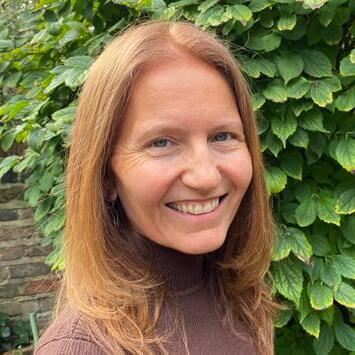
QPsychotherapist Fiona McAlister explores the benefits of breathwork for trauma recovery
Read more about Fiona on the Counselling Directory.
What is the science behind breathwork and trauma recovery?
ATrauma impacts many of our physiological systems, including our autonomic nervous system (ANS). As a result, many traumatised people will experience symptoms when their external environment triggers the neurologically and physically stored memory of the traumatic event(s). Breathwork can influence
QHow does breathwork differ from meditation?
ABoth breathwork and meditation are mindful practices, and draw awareness to our internal experience. Meditation tends to focus on creating a calm inner environment for the ‘internal witness’ to observe how arising
the ANS; for example, someone in ‘fight-or-flight’ mode (a common trauma response) can take long, slow exhales, which allow the lungs to draw in more oxygen, balance carbon dioxide levels, and reduce stress hormones. This gradually brings the nervous system into a parasympathetic state, where the heart rate slows and muscles release, sending a message of safety to the brain’s limbic system.
For someone experiencing ‘freeze’ mode (a trauma response
that slows the nervous system into a dorsal polyvagal state, sometimes causing dissociation) a gentle but faster breathing practice can help. By introducing energy through short-term activation of the sympathetic ANS, it brings back a visceral sense of awareness, enabling the person to reconnect with their body, and move the ANS back into a mobilised state. This can increase a sense of power, agency, and choice.
thoughts and physical sensations impact experience – all done while the meditator remains calm and detached. Some meditations do observe the sensations and movement of the breath, but without manipulating it.
Breathwork, in contrast, is an active practice that mobilises the body to create physiological effects. It can calm, balance, or
energise the ANS depending on the type of practice. Breathwork also draws in more oxygen, and can elevate carbon dioxide levels to boost general health, and is believed to help release stagnant body energy or dormant trauma. Breathwork might be a more suitable practice for those who find meditation’s stillness and focus on mental observation challenging.
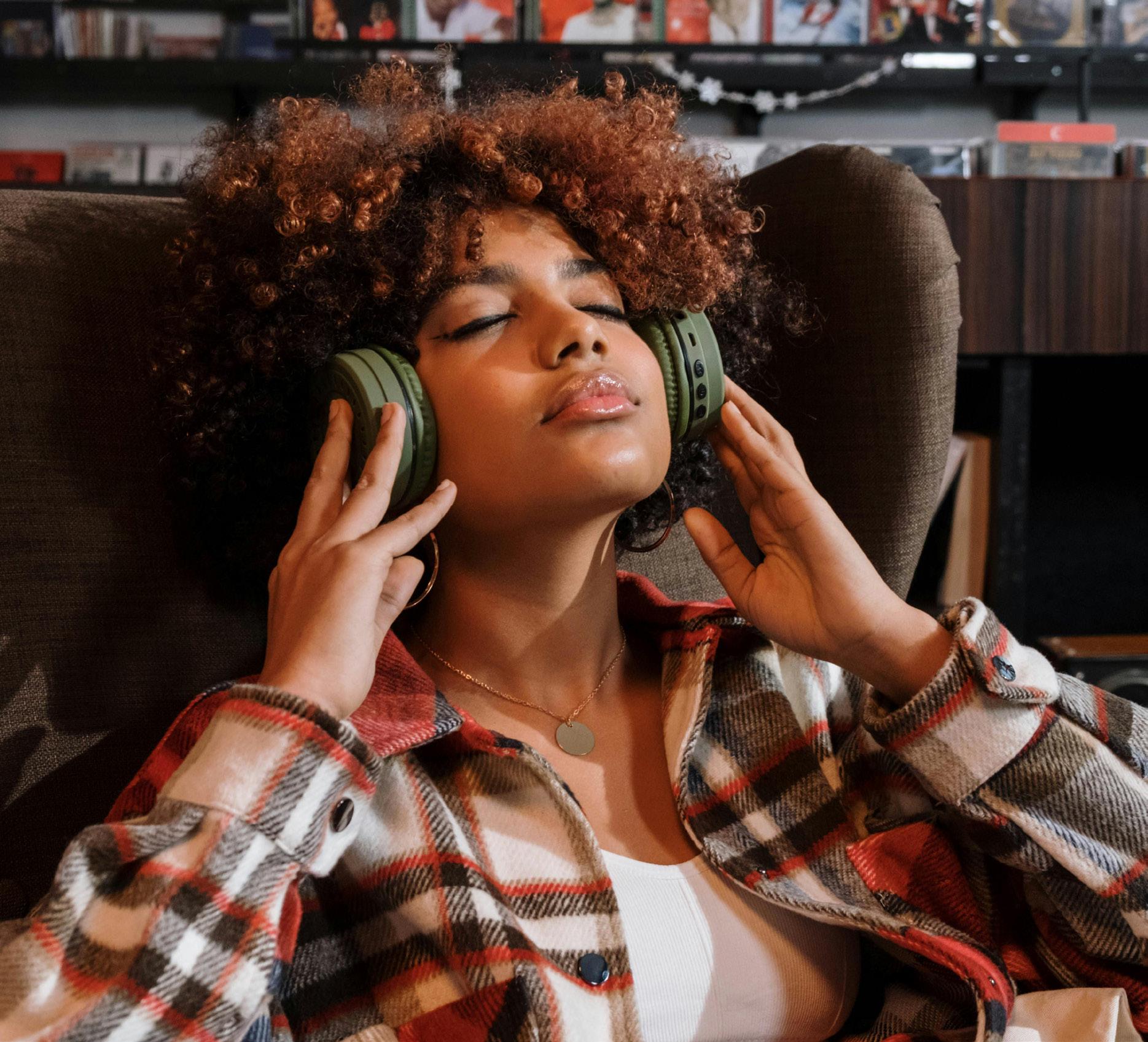
ACreating a sense of safety and trust is essential to help you contain any vulnerability that arises, including the capacity to stay with you in your experience. For this reason, it’s important that the practitioner has awareness of the impact of trauma. Look for someone who understands the potential risks of breathwork to people with traumatic histories, and knows how to minimise harm by avoiding any retraumatising
sensations. For example, breathholds might cause constriction in the chest, which can lead to breathlessness and panic.
A good practitioner should provide clarity on what they can offer, and what outcomes or experiences you might have following a session. Their instructions around how to complete breath practices should be clear, with practical demonstrations, as well as written instructions for post-session use. They should understand the mechanics and physiology of breathing, ensuring you are breathing safely throughout.
• Minimise – or even let go of – expectations. Be kind to yourself by practising with curiosity, and without selfjudgement. Relax as much as you can.
• Beginners might wish to learn online. Try a few resources before choosing a practitioner whose approach feels right in your body, and who has relevant training and experience.
• If you have a trauma history, be aware that fast breathing techniques and breath-holds can be retraumatising without sufficient preparation and supervision.
• Find a comfortable, safe space where you can practice without interruption, surrounded by items that help you feel safe, such as cushions and blankets.
• Practise at different times of the day to see what works for you. Practitioners may advise that a particular time is best; however, in my experience, whatever works for you is always best.
We know that creativity is beneficial for mental health, but research suggests that simply enjoying artwork at a more measured pace can be powerful, too
Writing | Sophie Campbell Illustrating | Rosan Magar
Have you heard of ‘frisson’? Otherwise known as aesthetic thrills or feeling awestruck, it’s a sensation of intense emotional pleasure, appreciation, or being overcome by beauty. Frisson is often accompanied by goosebumps and, sometimes, happy tears. You may have felt it when listening to live music, enjoying a breath-taking view, or observing a work of art. Maybe you experienced frisson basking in the light of Monet’s Water Lilies at Musée de l’Orangerie in Paris, or gazing at Botticelli’s The Birth of Venus at the Uffizi Gallery in Florence.
For most of us, frisson is something that happens unexpectedly and rarely. But what if there was a way you could experience this feeling more? The answer may lie in the art of ‘slow looking’.
What is slow looking?
Slow looking is the act of observing an artwork for an extended period of time. That could be an uninterrupted five minutes, an hour, or even an entire day. According to the Tate galleries: “It is an approach based on the idea that, if we really want to get to know a work of art, we need to spend time with it.”
Cima Azzam, curator at Maraya Art Centre in the United Arab Emirates, says: “Slow looking creates room to appreciate the artistic practice, process, and time it took to conceive artwork. Art is a language of its own, so taking the time to look intently and slowly, allowing your eyes to wander, sparks a connection.”
Cima describes the shift she’s seen in how visitors engage with art, particularly in museums. “You often see people sitting in one hall for hours on end, in front of one artwork, completely unaware and unaffected by the rush of crowds sweeping through.” >>>
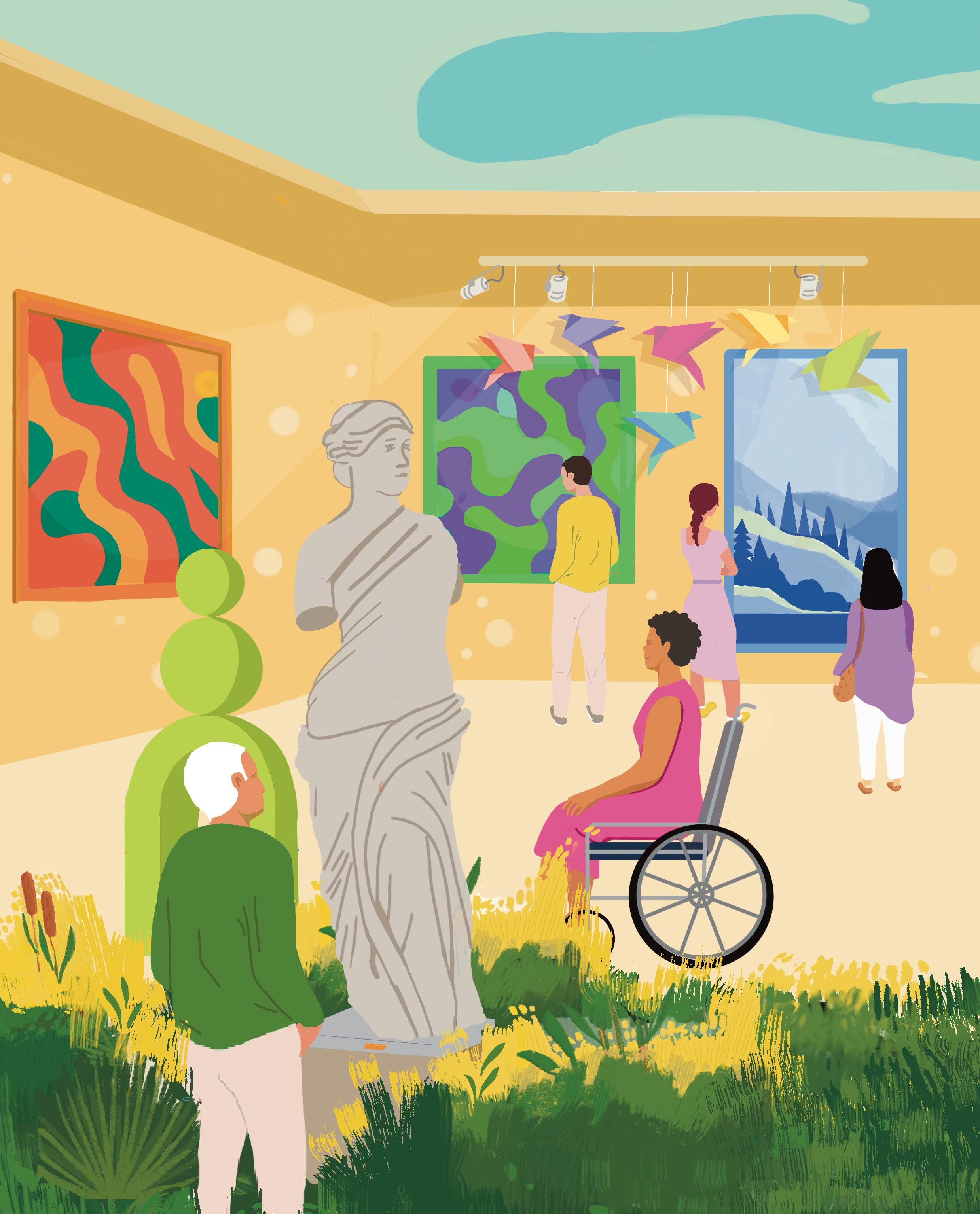
In 2023, Rebecca Chamberlain, a psychologist specialising in art perception, and Aleksandra Igdalova, a psychology researcher and neuroaesthetics consultant, published their research on slow looking, in Psychology of Aesthetics, Creativity, and the Arts. Their findings suggest that it leads to significant short-term mood improvements, with participants reporting feeling more pleasant and relaxed after viewing artworks for extended periods.
The research also found that the effectiveness of slow looking depends on the approach used – specifically, providing art historical information during viewing led to greater cultural understanding and engagement, compared to meditationbased or control conditions.
Additionally, the study found that representational artworks (as opposed to abstract) were most frequently chosen by participants, and contributed to higher overall aesthetic experience scores, indicating that certain kinds of art may be better suited for slow looking than others.
To try something similar, Cima recommends going to an art exhibition after the main opening event, when there are fewer people. “I prefer to go when it’s quiet,” she says, “to better absorb the art, concepts, and forms.
“It’s more about time – spending time with art and giving it your full attention, whether it’s a sculpture, painting, or film – and giving yourself time to engage with the artwork with intention.” While slow looking can boost enjoyment in a gallery setting, this isn’t always an available option. So, is there a way to reap the benefits in everyday life? According to UK Council for Psychotherapy-accredited psychotherapist Tina Chummun, the answer is yes.
Rewild your attention span
Not only does slow looking help us become more present, aware of our surroundings, and engaged with our senses, but it’s a great stress reliever. According to Tina, slow looking encourages us to resist the fast-paced, dopaminedriven grasp of modern tech culture and, instead, to dwell a little longer. “This kind of attentiveness activates the prefrontal cortex, responsible for executive functioning and regulation, and slows our amygdala activity, lowering stress responses,” she says.
When we’re feeling overstimulated from doomscrolling, work stress, responsibilities at home, or general busyness, the act of slow looking is something that
our minds and bodies crave. It steers our focus away from the tantalising (often toxic) digital world, and grounds us back in the physical. Tina says: “Slow looking becomes a rewilding of attention.”
Is slow looking similar to meditation?
Kind of. Not confined to the cushion, breath, and closed eyes – keeping your focus purely inward – slow looking takes us out into the world, and immerses us in the sensory realm. Tina explains: “It is meditative, yes, but also embodied, relational, and deeply neurobiological –helping recalibrate a nervous system that is caught in the chronic ‘doing’ mode.”
In many ways, it’s the art of simply noticing, without distractions, and without giving in to the urge to make it a ‘productive’ activity. It should be unrushed, intentional, and rooted in childlike curiosity.
How to try slow looking
Tina suggests looking for opportunties to weave the smallest of rituals into regular tasks you already do, whether it be “studying the texture of your morning toast, tracing the lines on a loved one’s face, or watching how the light shifts on the wall throughout the afternoon”.
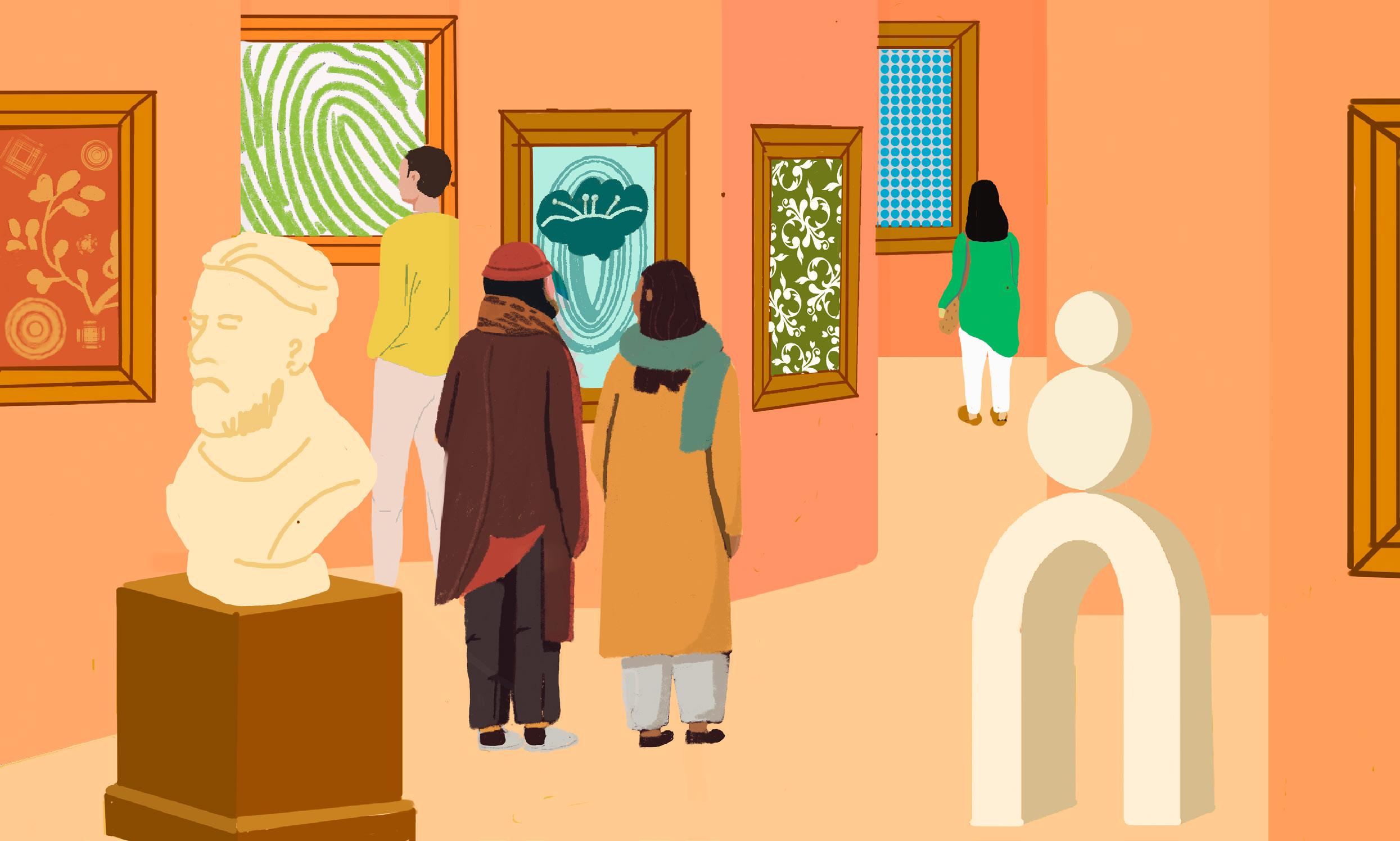
Slow looking might take some time to get used to. It’s a skill that has to be practised, but it’s something you can start adding to your life today. Whether it’s observing a work of art, gardening, staring out the window during your next train journey, birdwatching, or pausing during a woodland walk to observe the plant life around you, there are countless ways to slow look every day.
The benefits of slow looking and intentionality are both somatic and psychological. “When we slow down, we invite the parasympathetic nervous system, the ‘rest and digest’ mode, to rise up and balance us,” explains Tina. “This shift reduces cortisol
levels, improves vagal tone, and supports neuroplasticity in brain regions involved in emotional regulation.
“Consider the humble garden swing chair, or an old rocking chair,” says Tina. “As we settle into the rhythm of rocking –forward, back, forward again – the vestibular system is gently stimulated. This ancient sensory system, located in the inner ear, has strong links to autonomic regulation, balance, and even our sense of time. As we swing, the rhythmic motion coaxes the nervous system into regulation –a biological lullaby.”
This soothing of the mind creates space for new thoughts, ideas, and feelings to surface, and it’s in this space where slow looking comes into effect. This is when you might start to notice
subtleties in your environment, like leaves rustling in the wind, the wingbeats of a bird passing overhead, the morphing shape of the clouds, or the calming trickle of rain. Tina adds: “Rather than rushing to interpret or judge, you simply see. You become the witness,” which causes “a subtle yet profound neurocognitive shift that supports reduced anxiety, and enhanced mental health and overall wellbeing”.

Tina Chummun is an accredited psychotherapist and trauma specialist. Find her profile on the Counselling Directory.
If you’re one of the estimated 28 million people in the UK who experience chronic pain, then this ancient therapy could offer some relief
If you’ve been living with persistent pain, and conventional treatments aren’t giving you the relief you need, you might be curious about alternative therapies. One ancient practice that’s worth exploring is cupping therapy. But what exactly is cupping, and could it offer you some much-needed respite from chronic pain?
Cupping is a therapeutic technique that has been documented as far back as the Ancient Egyptian era. It involves the application of small, cupshaped vessels (normally made of glass, plastic, or silicone) on the skin’s surface to create a vacuum. The idea is to target specific areas of pain, such as the lower back, calves, or neck, to stimulate metabolic activity, improve immune function, and stabilise blood biochemistry. There are several types of cupping, but they are largely
separated into either ‘wet’ or ‘dry’. The former is an invasive treatment that involves applying suction, then afterwards, making tiny incisions on the surface of the skin before reapplying the cups to draw out a small amount of blood. Because there is less research into the efficacy of wet cupping, we’ll be focusing on the benefits of dry cupping.
A 2023 study published in the journal Frontiers aimed to collect and analyse all existing evidence of dry cupping therapy for pain. The researchers concluded that cupping therapy “appears to be a promising treatment modality for various pain-related disorders”. They emphasised that while it’s effective in the treatment of chronic pain, knee osteoarthritis, lower back pain, neck pain, chronic back pain, and shingles, the quality of
the evidence supporting these outcomes is mostly low quality, with moderate-quality evidence less available.
Yet the evidence does help us build a picture of why people report pain relief as a result of cupping, showing that it increases blood circulation, activates the immune system, and stimulates nerve fibres, leading to a reduction in pain.
The researchers found that gentle suction increases blood flow and oxygen to the treated area, drawing blood toward the skin’s surface, encouraging the release of substances that act as your body’s own natural painkillers. This could explain why many people report feeling less discomfort, and more relaxed, after a cupping session. While it’s always worth speaking to your GP first with regards to chronic pain treatment, and more research

is needed, dry cupping could be an inexpensive, non-invasive, and low-risk (if performed by a trained practitioner) therapeutic modality, to use alongside your ongoing medical treatment.
But doesn’t it hurt?
You would be forgiven for assuming that cupping is a painful therapy, especially if you’ve seen the deep purple circles that are often left behind on the skin when cups are removed. While you may feel a tight pulling sensation as the cups are applied, it should otherwise >>>

Cupping is a therapeutic technique that has been documented as far back as the Ancient Egyptian era
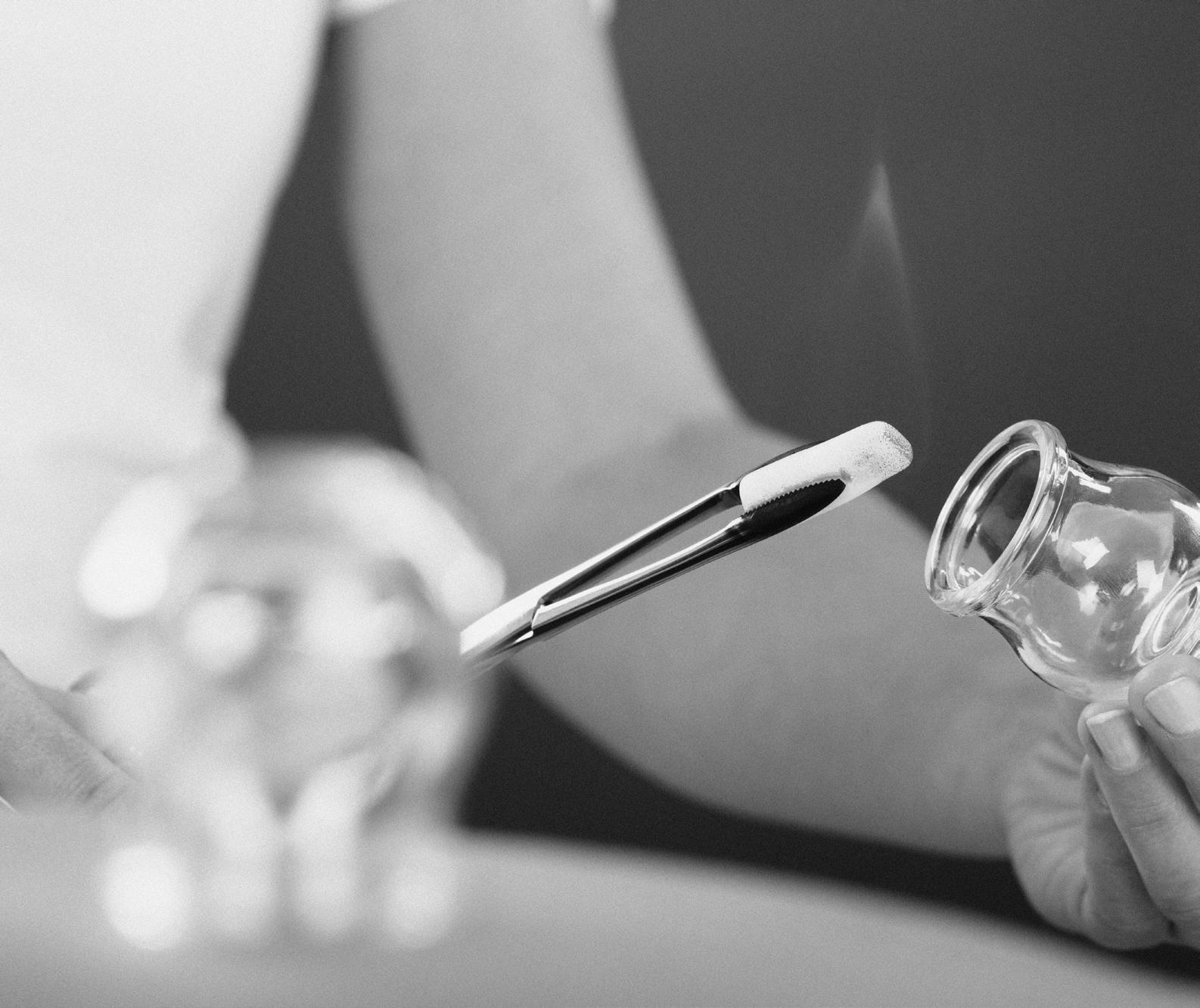
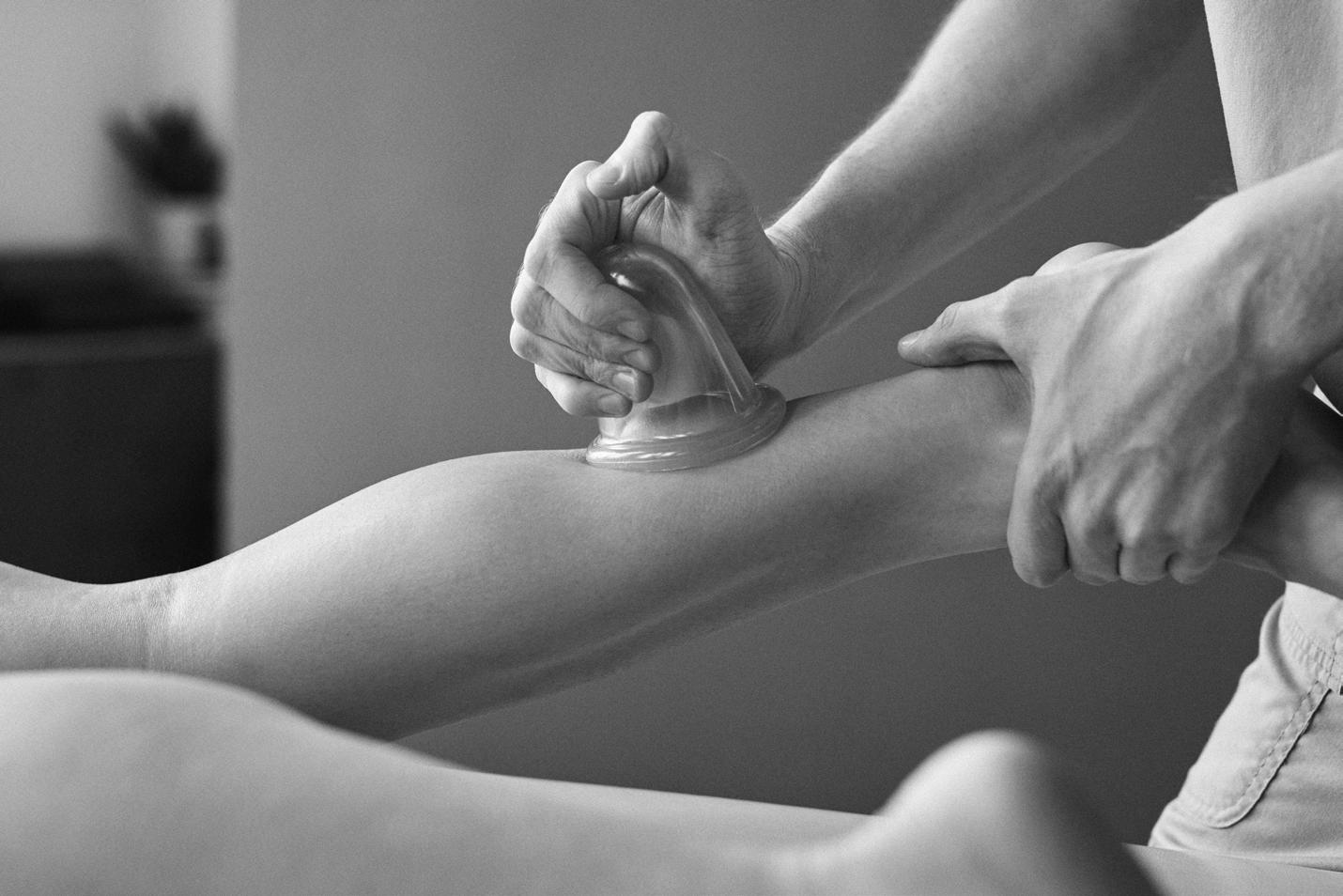

be relatively painless. And those eye-catching circular marks? They’re not like a typical bruise caused by an injury, so they shouldn’t hurt.
Cupping is performed by a massage therapist or physiotherapist, who will typically offer an initial consultation before any treatment goes ahead. This is the perfect opportunity for you to open up about your chronic pain symptoms, explaining which points of your body, you’d like to work on, as well as communicating any other underlying health issues. Based on your needs and preferences, the therapist will be able to determine where exactly to place the cups on your body, as well as what techniques might work best. Each therapist will have their own preferences for how they work with the cups, for example, some may opt for glass cups with flame suction, while others use modern silicone or plastic cups with manual pumps. The
duration can vary, too – some therapists keep cups in place for five to 10 minutes, while others may use a sliding technique, moving the cups across oiled skin. Although cupping is considered low risk, people who are pregnant or have metastatic cancer, muscle spasms, bone fractures, anaemia, blood clotting problems, seizures, skin conditions, or a history of strokes, should avoid cupping.
While cupping kits are available for home use, it’s recommended you experience the therapy with a qualified practitioner before attempting any DIY treatments. A trained professional can tailor treatment to your individual needs, ensure proper cup placement, and monitor your response. If you do decide to try cupping at home after professional guidance, invest in a quality kit with clear instructions, start with gentle suction, and never leave cups on for longer than recommended.
I spoke to Jillian, 46, from Glasgow, who says: “I have fibromyalgia, and I first tried
cupping when my massage therapist suggested using it to specifically address back pain. I trusted her as I’d been going for years, so decided to give it a go.
“There was a slight tightness when the cup was put in place, but then it subsided, and I was left to lie on my front with the cups doing their thing on my back. I was super-impressed with the immediate relief I felt, and now, I can tell when specific body parts will benefit from having a cup on it for a few minutes.”
Jillian admits that cupping is just one aspect of her chronic pain management, which she uses alongside traditional treatment such as talking therapy, exercise, and pain medication.
“I’ve invested in some silicone cups to use at home, and they are ideal for when I’m having a pain flare up. I know now that popping a cup on my back or hips for 10 minutes in the morning can be the thing that allows me to get out of bed some days.”
While cupping therapy shows promise as a complementary approach to managing chronic pain, it works best as part of a holistic treatment plan rather than a standalone solution. The evidence suggests it may offer real benefits, though more highquality research is needed to fully understand its effectiveness.
The good news is that cupping is relatively safe, affordable, and accessible, when performed by qualified practitioners. For many people living with chronic pain, it has become a valuable tool – not a miracle cure, but a way to find relief on difficult days.



When life gets overwhelming, or situations don’t turn out as planned, it can be easy to find yourself ruminating and trying to control everything as a way to cope. When worry crops up, it can be helpful to explore what is (and isn’t) within your control, as a way to reduce cognitive load and map a clear path forward...


Things that you cannot control, such as the weather, the economy, your past actions, or what strangers think of you
Things that you have some element of influence over, although you cannot predict or control the outcome, such as relationships, health, career, and where you live


Things that are in your direct control, such as how you respond to criticism, your daily habits, what you focus your thoughts on, and how often you look at your phone


Standing up for what you believe in is a powerful act. Here, we’re sharing how you can protect yourself if you choose to attend a protest…
Writing | Lydia Smith
Protesting is a fundamental way for citizens to express their opinions, challenge injustice, demand change, and hold those in power to account. But these events can get heated, leading to rising tension, verbal arguments, physical abuse, and even arrests. That’s not to mention the rush of adrenaline that you may experience while you’re there.
“Today, amidst an air of geopolitical tensions, inequality, and conflict, plus, increasingly polarised views and fears about the planets’ survival, there are many reasons to protest,” says Katherine
Cavallo, psychotherapist and spokesperson for UK Council for Psychotherapy. “But should you choose to take to the streets with your placard, it’s important to understand your rights and plan your action to ensure you protest safely.”
So, what can you do to help things go smoothly?
To prepare for all eventualities, bring water, snacks, a fullycharged phone, a portable charger, and any prescribed medication in a small secure bag. Bring sun protection, a waterproof jacket, and wear comfortable footwear.
Keep your cash or card in a safe place, such as a small, flat bag that can stay hidden under your clothes to prevent theft.
“If you’re thinking of bringing a placard, make sure it’s safe and lightweight enough to carry and transport,” adds Katherine. “Make sure not to bring any sharp objects, locks, chains, alcohol, or illicit substances.”
It’s always best to attend with a likeminded group, or a friend you can trust. If you feel uncomfortable, it’s important
Attend with a likeminded group, or a friend you can trust. If you feel uncomfortable, it’s important to be able to speak to the person you’re with openly and honestly
to be able to speak to the person you’re with openly and honestly.
“If you are feeling uneasy, let your friends know, and encourage them to do the same if they need to,” suggests Katherine.
“Have a plan in advance, including what to do if you lose each other. This might include an agreed meeting point, creating a group chat, or sharing each others’ phone locations. If anyone needs a break, move away from the crowd together.”
“If the activity of other protesters makes you uncomfortable, trust your instincts,” says Katherine.
“Let your friends know, and as a group, move to somewhere calm so that you feel more at ease.”
If things escalate, think about your values – such as integrity, compassion, and personal responsibility – to avoid being swept up in crowd mentality.
Although you have the right to protest peacefully under the Human Rights Act 1998, police can restrict protests to prevent disorder, disruption, or threats to public safety. While peaceful actions like filming or chanting are legal, causing serious disruption or committing
offences (like blocking roads or trespassing) is not. Under the Public Order Act 2023, it’s a crime to attach yourself to people, objects, or land, and police have broader stop-andsearch powers.
“In the unlikely event of being arrested, follow instructions and try to stay calm,” says Katherine. “You have the right to remain silent, make a phone call, and ask to speak with a solicitor as you will be entitled to free legal advice. Remember, however, that the vast majority of demonstrations happen peacefully and without incident.”
Green and Black Cross offers a Protest Support Line at 07946 541 511 for those witnessing arrests, police misconduct, or needing advice on rights
Protesting can be a moving experience, but it can also stir up uncomfortable emotions, like fear. This can trigger a physiological stress response and lead the nervous system to release adrenaline. “It’s important to take regular breaks to allow yourself and your friends to relax, rehydrate, and touch base,” says Katherine.

Katherine Cavallo is a family and couples psychotherapist. Connect via the Counselling Directory.
If you’re feeling overwhelmed or stressed – symptoms include a racing heart, physical tension or breathlessness – tell your friends and find somewhere quiet. Take deep, mindful breaths to soothe your nervous system.
If you’re concerned about someone else, check in with them or let a member of their group know. If someone needs medical assistance, there will likely be first responders nearby.
“Attending a demonstration can be physically and emotionally demanding, and afterwards, you may feel full of energy or exhausted,” says Katherine. “Give yourself time to decompress, by going for a quiet walk, or having a relaxing bath. Be gentle with yourself over the coming days, and keep in touch with those who attended the demonstration with you, as it can take time to process events and emotions.”
A guide to the problems with the banking industry, and how to find workarounds that align with your values
Writing | Clare Seal
Trying to live according to our personal values within a flawed, and in many ways unethical, world order is a source of stress for many people these days. Our internal compass drives the way we shop, how we eat, and other lifestyle choices – from the huge to the infinitesimal. But alongside making more ethical choices in supermarkets and online, one choice that is incredibly impactful, and often underappreciated, is how we bank.
For many of us, our choice of bank is made somewhat arbitrarily as a teen or young adult, choosing the same high street branch our parents used, or who had the best student overdraft offering – and then we remain, not giving much thought to how our earnings, savings, and investments shape the world we live in. But the truth is that where we bank is one of the most important choices we can make when it comes to our ethics. In fact, a 2025 report by campaign group Make My Money Matter found that switching to a sustainable bank has a bigger impact on your carbon footprint than both giving up flying and going vegan combined.
When money is deposited into your bank account, it doesn’t just stay there. The bank uses your money to invest, loan, and fund things – and who benefits from this is key to understanding why your choice matters.
Many high street banks use customer deposits to finance things that you might never actively choose to invest in, like fossil fuel companies, deforestation, mining, and other environmentally damaging projects. Arms manufacturers, as well as gambling and tobacco companies – all of which can have a devastating impact on human life – might also be beneficiaries, without you even knowing it.
Banking is one of the largest hidden contributors to the climate crisis, according to the Banking on Climate Chaos 2025 report, which found that the 65 biggest banks globally committed $869 billion to fossil fuel companies in 2024. Disappointingly, two-thirds of these banks actually increased their fossil fuel financing from 2023 to 2024, as political sentiment and policy shifted on Net Zero targets.
This largely invisible part of personal finance might come as an unwelcome surprise – after all, we’re taught to think about our money in terms of its role in our lives, rather than its global impact. But once you know about the secret double life of your money, you might choose to bank differently.
It’s important to know what to look for when finding the right home for your finances. One major green flag to look for is transparency: does your bank share information about its operations, goals, and investments? You might also look for a B-corp certification, or recognition from independent bodies as to a bank’s green credentials. Switch It Green and Ethical Consumer are great sources of information.
Once you’ve done your research, you may not find a perfect solution, but you can still make a positive change.
If you’ve reviewed your current bank’s ethical credentials, and decide it’s time to switch, you

should decide your priorities and non-negotiables before committing to a new provider. These could be ethical, but they could also be to do with functionality, so if you need your account to have certain features bear this in mind.
While your main priority in choosing your new bank might be finding one that doesn’t fund certain things (like fossil fuels, arms, and tobacco) you could also look for one that is actively investing in green projects and ethical initiatives.
Once you’ve laid out your requirements clearly, do your
research. Triodos Bank, CoOperative Bank, and Nationwide Building Society are good places to start, but many building societies score well with a number of independent bodies. Newer banks, like Starling and Monzo, offer more transparency than high street banks, and might represent a middle ground for those wanting an account with additional budgeting and money management tools.
For the switch itself, if the admin seems daunting, you may be able to use the Current Account Switch Service (CASS), to make things smoother. All you
have to do is initiate the process, then your new bank will switch your payments and transfer your balance, and your old bank will take care of closing your account. If you’re nervous about moving all your money somewhere unfamiliar, you could begin with a small savings or spending account, and gradually transition as you get more comfortable.
Even small changes count Climate anxiety can have a huge impact on mental wellbeing – we often feel powerless in the face of frightening statistics in our feeds, and natural disasters in the news. Switching to an ethical bank is not just a practical defunding of companies you disagree with, and a contribution to forces for good, it’s a statement of intent. The more people choose to vote with their money, the more banks will be pushed to review their policies and practices.
It may seem insignificant, but aligning your money with your values is a quiet act of respect for the planet, for humanity, as well as yourself.
Clare Seal is a UK-based financial coach, writer, and podcast host who explores the intersection of personal finance, personal values, and everyday life.
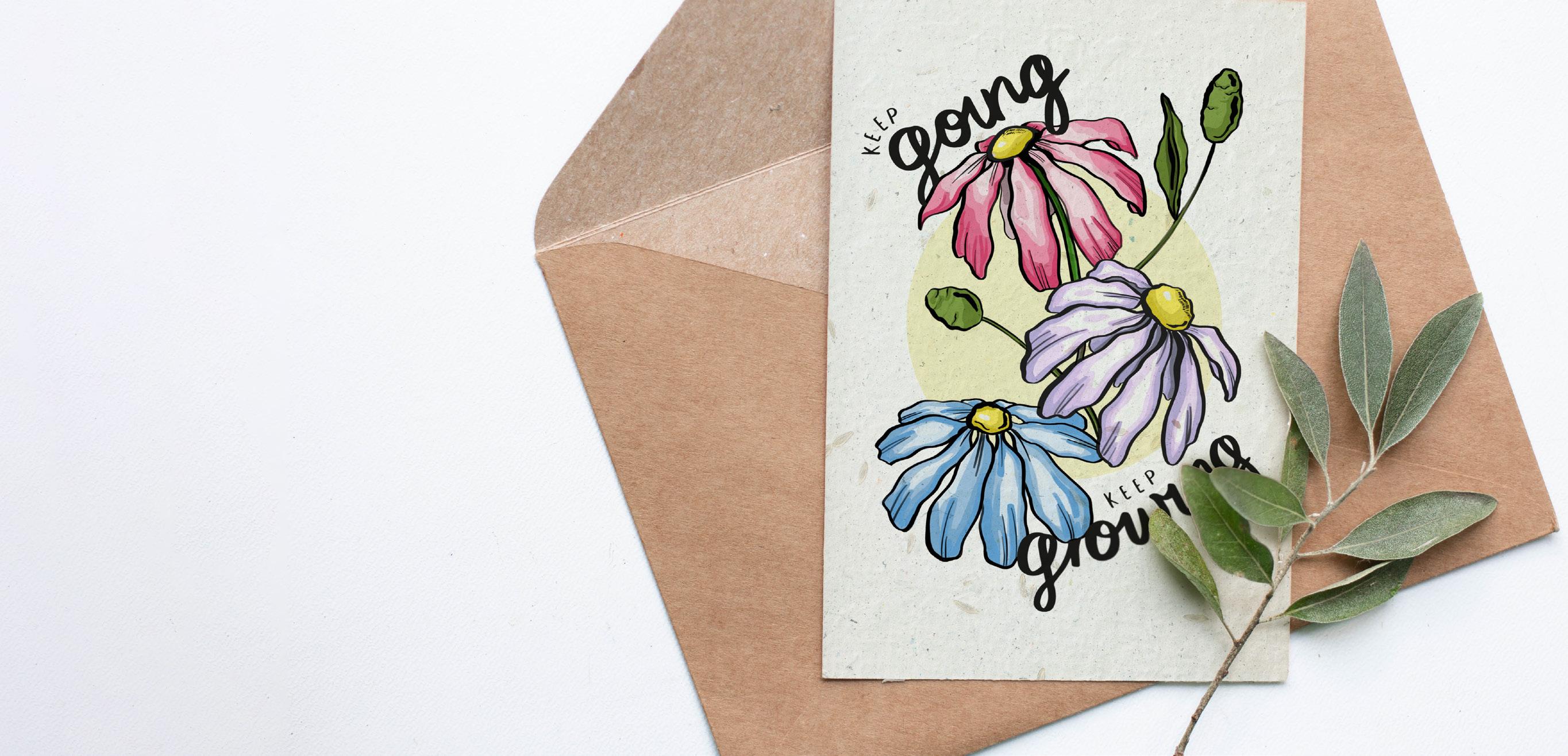
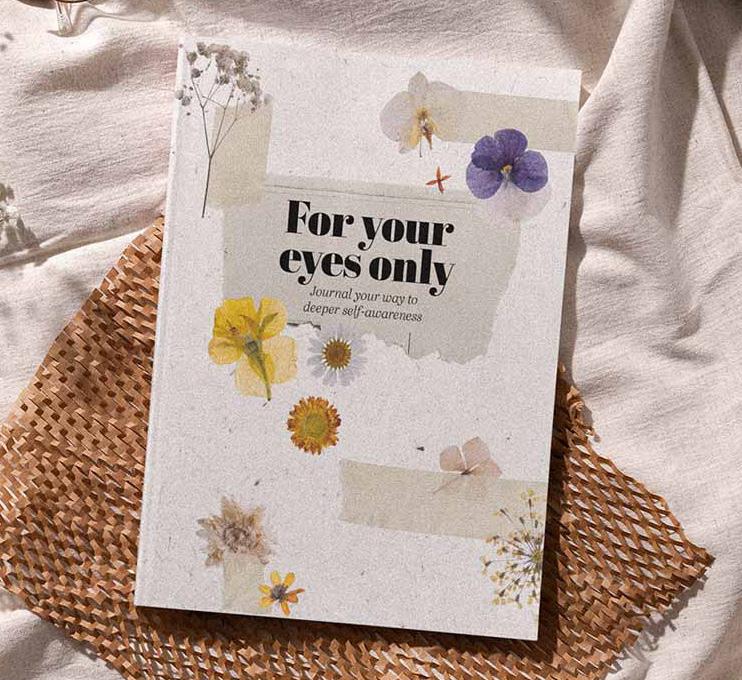
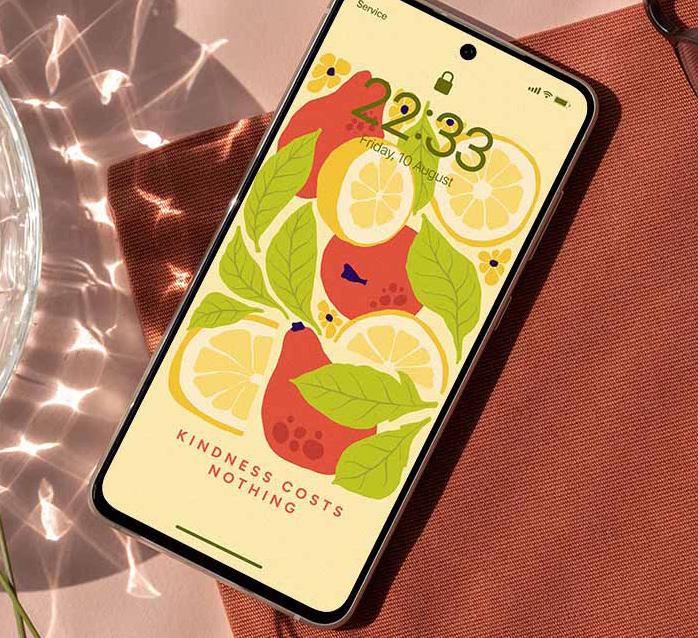
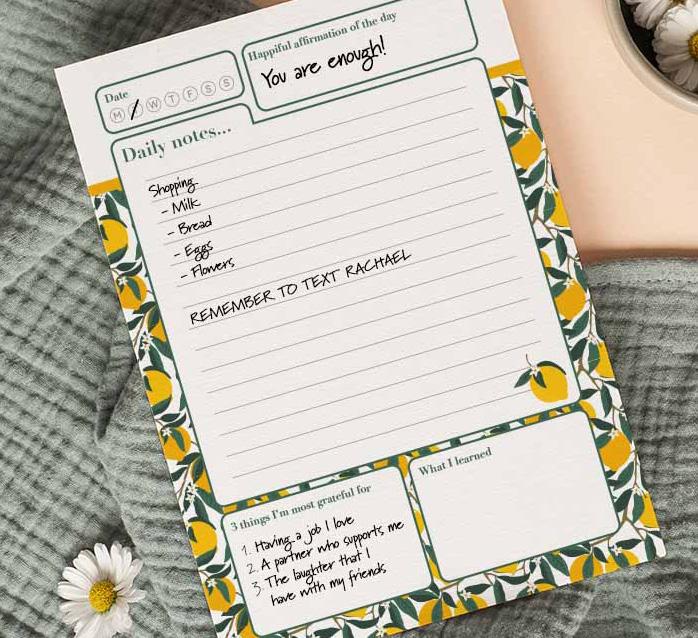
• Enjoy guided journaling booklets, seeded affirmation cards, and beautifully designed notebooks – completely free!
• Award-winning, psychotherapist-reviewed and approved content
• Discover fascinating features, science-backed practical tips, inspiring stories, and expert advice
• Print-exclusive guided journaling pages in each edition
• You’re in control, so cancel any time
And remember, the longer you subscribe, the more rewards you’ll receive. So roll with it, and enjoy the monthly delivery of positivity as a reminder to make some much-needed time for you.
Happiful monthly rolling subscribers now receive thoughtfully crafted gifts at renewal milestones, meaning that committing to your wellbeing is truly rewarding – in more ways than one! Join today at shop.happiful.com
From an intimacy co-ordinator’s guide to nurturing connection to a first-person account of depersonalisation, get ready to learn something new from these latest reads
Writing | Lauren Bromley-Bird
Our relationships can bring us so much joy and fulfilment, with intimacy playing a vital role in helping us feel close and connected. In fact, findings published in Behavioural Medicine suggest that physical contact can also benefit our health and wellbeing by lowering blood
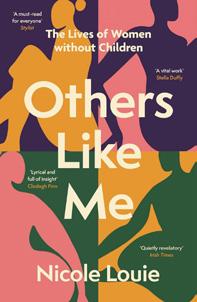
Others Like Me: The Lives of Women Without Children by
Nicole Louie
Despite more women choosing to be child-free, it’s still a decision that is unjustly frowned upon and not fully understood. Author Nicole Louie is one of those many women, and she tells the stories of others who have trodden the same path, in the hope of diminishing backlash, and building acceptance.

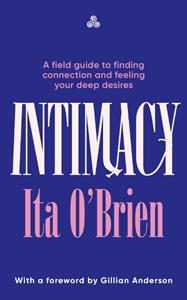
Intimacy: A Field Guide to Finding Connection and Feeling Your Deep Desires by Ita O’Brien pressure. So, how can we make sure we are nurturing intimacy, both within our relationships and for ourselves?
Ita O’Brien, who is an intimacy co-ordinator for film and television, shares everything you need to know. Having worked on shows like Normal People
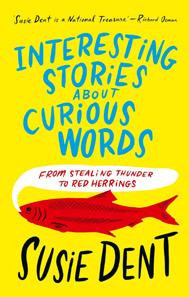
Susie Dent
It would be naive of us to say that we know everything about the English language, and this book is evidence of that. Lexicographer Susie Dent, who is well versed in words and dialect, uncovers the meanings behind random phrases and words such as ‘the bee’s knees’ and ‘as sick as a parrot’ to appease those of us with curious minds.
and I May Destroy You, she uses her expertise to help us create intimate moments of connection, using stories from her time spent on set, and exercise prompts to try out at home.
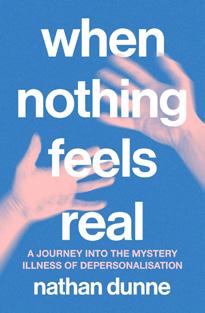
When Nothing
Feels Real: A Journey into the Mystery Illness of Depersonalisation by Nathan Dunne Depersonalisation is a mental health condition that can cause you to dissociate from your body and surroundings, and it’s really scary for those on the receiving end. Ready to set the record straight on this lesser-known condition, journalist Nathan Dunne opens up about his experience.
Jenna Farmer chats to dietitian Lisa Poole about why cutting back on artificial sweeteners may be a good idea
From fizzy drinks to frozen yoghurt, it seems there’s a sugar-free alternative for everything on your shopping list these days. But swapping over isn’t necessarily as ‘healthy’ as you might think.
What are artificial sweeteners?
If you haven’t heard of them, artificial sweeteners are chemical compounds, such as aspartame and sucralose. “They are utilised as a synthetic sugar substitute to mimic the taste of sugar, without providing the calorie content, while being deemed safe for human consumption by regulatory bodies,” explains dietitian Lisa Poole. “Today, they are widely used by many food and beverage manufacturers worldwide, due to their intense sweetness, which allows for lower quantities to be used compared to sucrose.”
Why should we consume fewer sweeteners?
For some of us, artificial sweeteners can be a useful tool to help decrease our
sugar intake, so they aren’t without benefits. “Artificial sweeteners are often used to help regulate blood glucose levels, reduce calorie intake, and support weight control –factors linked to a reduced risk of metabolic conditions such as cardiovascular disease, nonalcoholic fatty liver disease, and inherited metabolic disorders,” explains Lisa.
However, they’re not without drawbacks. “They’re generally considered safe for human consumption in small amounts,” says Lisa. “However, excessive intake can have a negative impact on health. Gastrointestinal symptoms, such as bloating, gas, abdominal distension, cramps, and diarrhoea have been linked to high intakes of artificial sweeteners, as well as their impact on the gut microbiota, due to their natural laxative effect.”
Interestingly, a 2025 study, published in the journal Nature Metabolism, found that people reported feeling three times hungrier after drinking an artificially-sweetened drink when compared to a sugary one.
Researchers think this could be because sucralose doesn’t trigger the release of insulin or GLP-1 (a hormone that plays an important role in regulating blood sugar levels and appetite).
There is also data to support an association between artificial sweeteners and depression, as published in the journal JAMA Network Open, although this research focused solely on women aged 42–62, and therefore has limitations on applying the findings to a more general population.
When it comes to diet, it’s all about moderation. While sweeteners are considered safe, and you shouldn’t beat yourself up about consuming products that include them, cutting back (if possible) could be a sensible decision. However, if you have diabetes, they may be an important part of managing your blood sugar, so speak with your GP before making changes.
The good news is that moving away from artificially sweetened
products doesn’t have to be stressful. Here are some tips to help you make the switch:
Look at labels
It’s important not to worry about food labels too much, but if you want to limit consumption the first thing is to check the label of the product in question – as artificial sweeteners aren’t always easy to spot.
For example, they may not even be listed on food labels as ‘artificial sweeteners’. Instead, they can be presented by name (e.g. steviol glycosides, xylitol, or erythritol) or as an E number.
“Alternative ways of identifying artificial sweeteners on food labels include descriptions such as ‘sugar-free’, ‘no added sugar’, ‘low calorie’, or ‘suitable for diabetics’ as these descriptions indicate that an artificial sweetener has been used,” says Lisa.
“Another key point to look out for on food labels is the location of the ingredient in the ingredients list on the packaging; the higher up the list, the larger the volume of the sweetener in the product,” explains Lisa.

is also
There are lots of natural ingredients that can satisfy sweet cravings without the drawbacks, although they should be used in moderation. “Raw honey is a great alternative to make a dish sweeter, and using it in small quantities doesn’t add large volumes of >>>
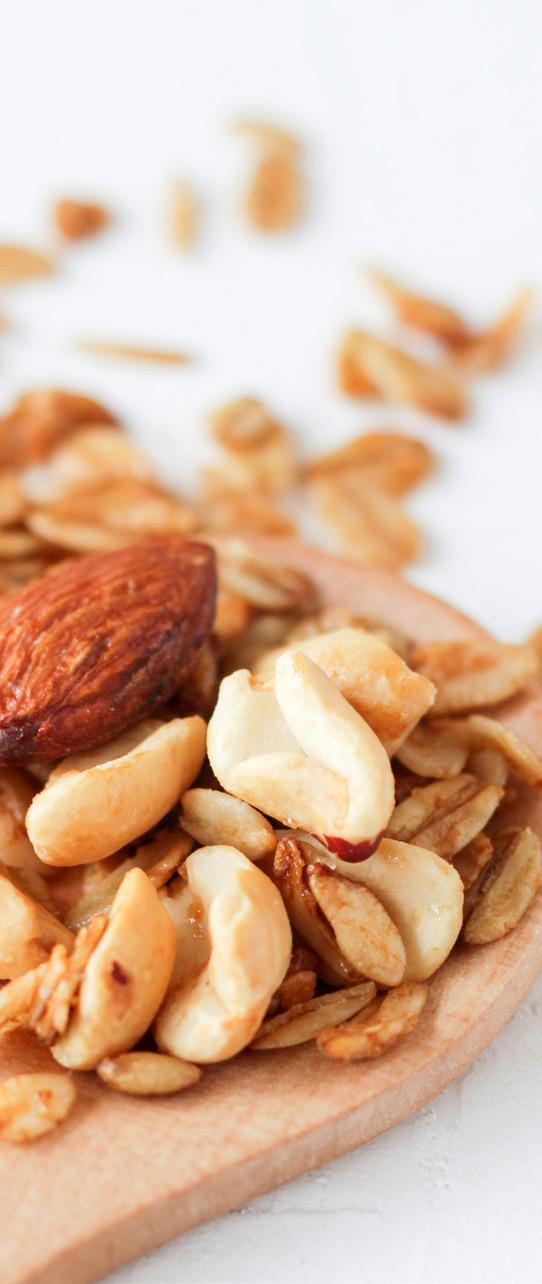
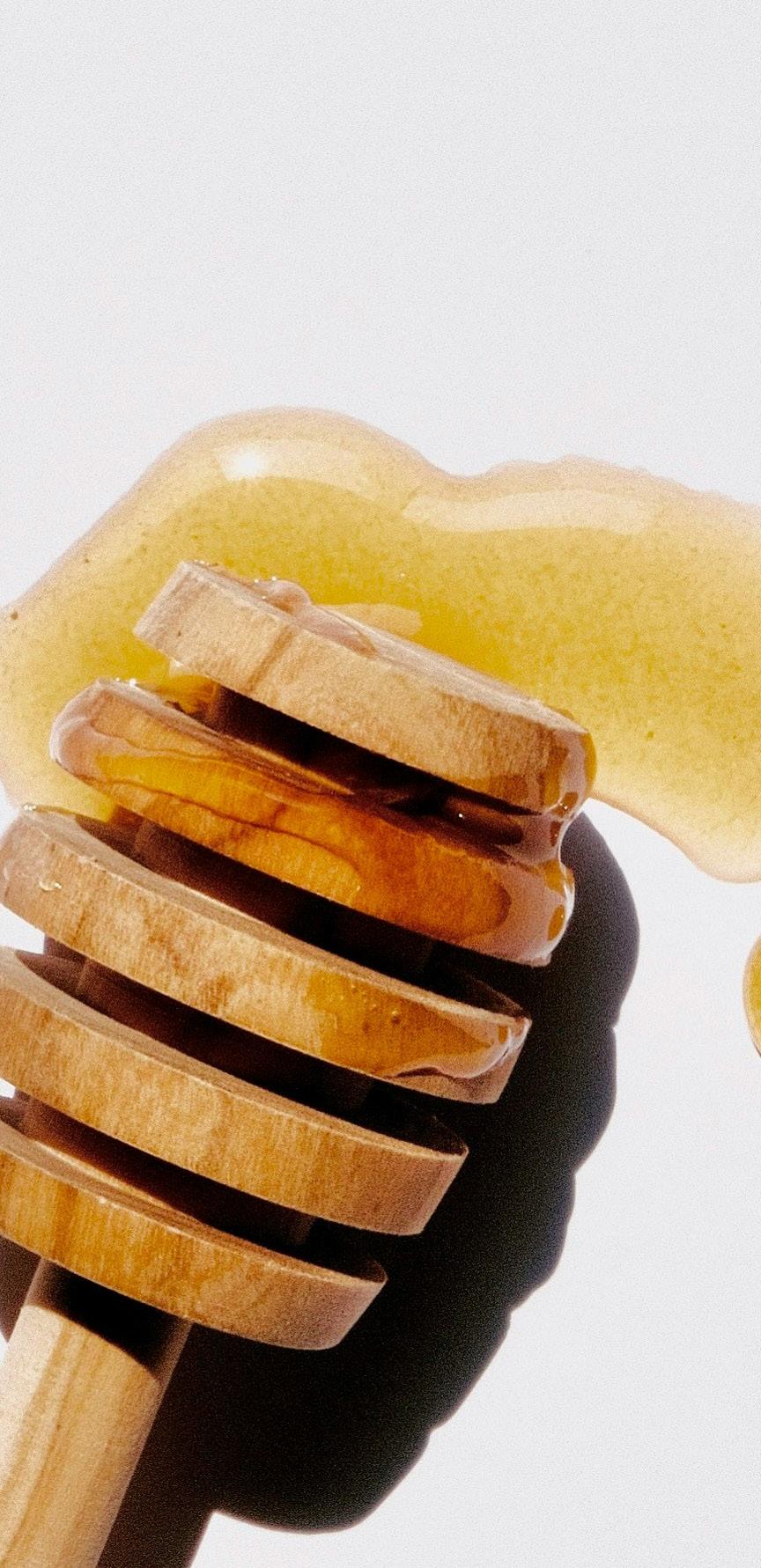
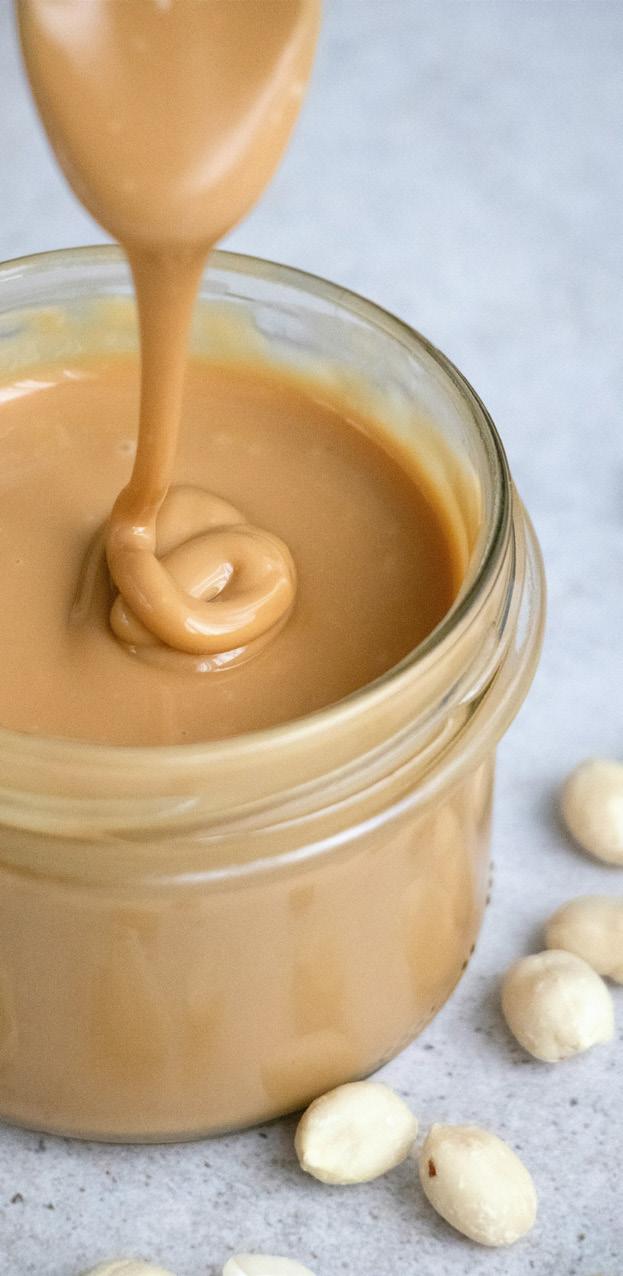

extra calories to a meal. Different types of syrups, such as maple and date syrup, and cooking or baking with fruits, add natural sugars, while also providing essential vitamins and minerals to the dish,” adds Lisa.
If you’re not ready to overhaul your diet, tackling your drink consumption can be an easy place to start, since many squashes, flavoured waters, and fizzy drinks contain artificial sweeteners, and if you reach for these daily, it soon adds up.
If switching to plain water isn’t your thing, there are several brands that offer alternatives but taste just as good, and are often
clearly labelled as ‘sweetener-free’. Health food stores are a good place to explore your options, and ask for recommendations.
You can also try making your own healthy drinks at home by mixing sparkling water with fresh fruit, mint, and cucumber.
When it comes to your cuppa, Lisa suggests making changes there, too. “Adding honey, maple syrup, or agave syrup to hot drinks, offers a sweetness, but also, some nutritional value to them in comparison to artificial sweeteners,” explains Lisa.
Many sugar-free snacks on the supermarket shelves contain sweeteners, but there’s plenty of
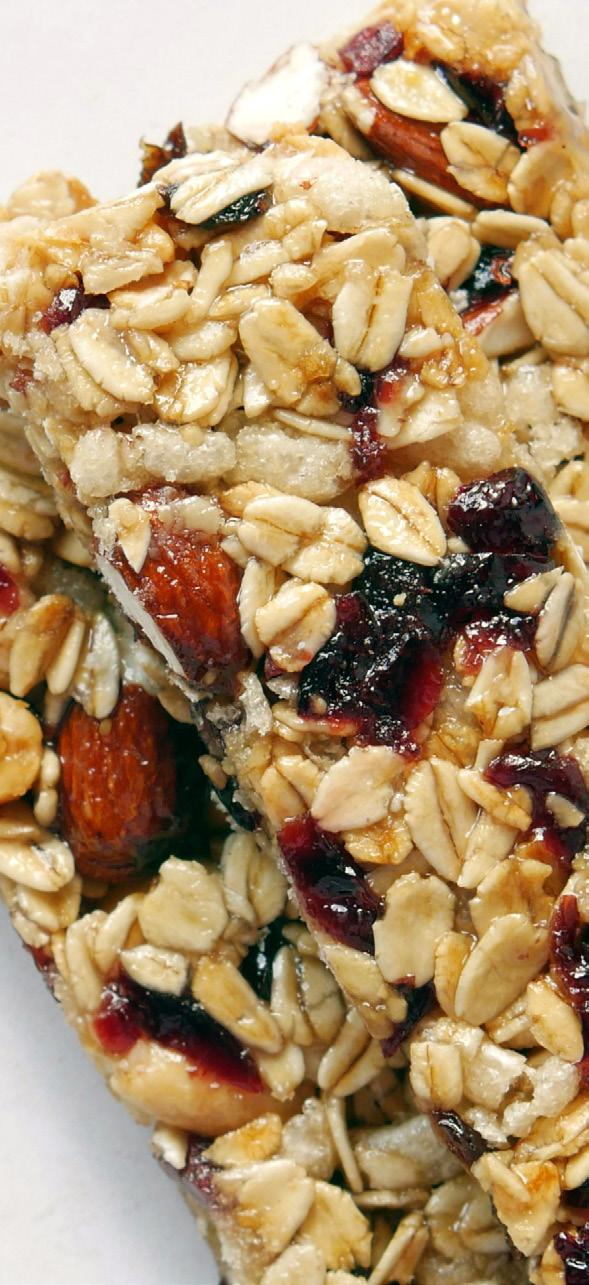
natural alternatives that you may not even realise you already have in the kitchen cupboard. “Swap sugar-free snacks that will likely contain artificial sweeteners for natural fruit, oat, or nut butter bars. Bake in the oven with dates, or date paste, and mixed fruit such as mashed banana, apple sauce, sultanas, and/or raisins,” Lisa suggests.
Artificial sweeteners don’t have to be completely eradicated from your diet, but if you find that you’re consuming more than you’d like, making these simple changes can lower your intake to ensure you’re consuming it as it’s intended – in small quantities, alongside a varied diet.
Jenna Farmer is a freelance journalist who specialises in writing about gut health. She has Crohn’s disease, and blogs at abalancedbelly.co.uk

A once-forgotten tradition is seeing a resurgance in popularity. So what exactly are the benefits of attending a women’s circle?
Writing | Sophie Campbell
There’s a scene in the movie Midsommar where Dani (played by Florence Pugh) breaks down after seeing something disturbing. The women of the commune she’s visiting scoop her away, stare into her eyes, and wail with her, simulating her pain. Despite the surrounding nightmarish gore, this moment feels strangely cathartic. Watching it, I felt a raw, primal sense of sisterhood. It felt good. Now, I’m not saying women’s circles are, or should be, like scenes from a folk horror film. But that moment in Midsommar taps into something real: the enduring tradition and power of women communing.
In its simplest form, it’s a gathering of women sitting in a circle, taking turns to talk and listen – you may already have
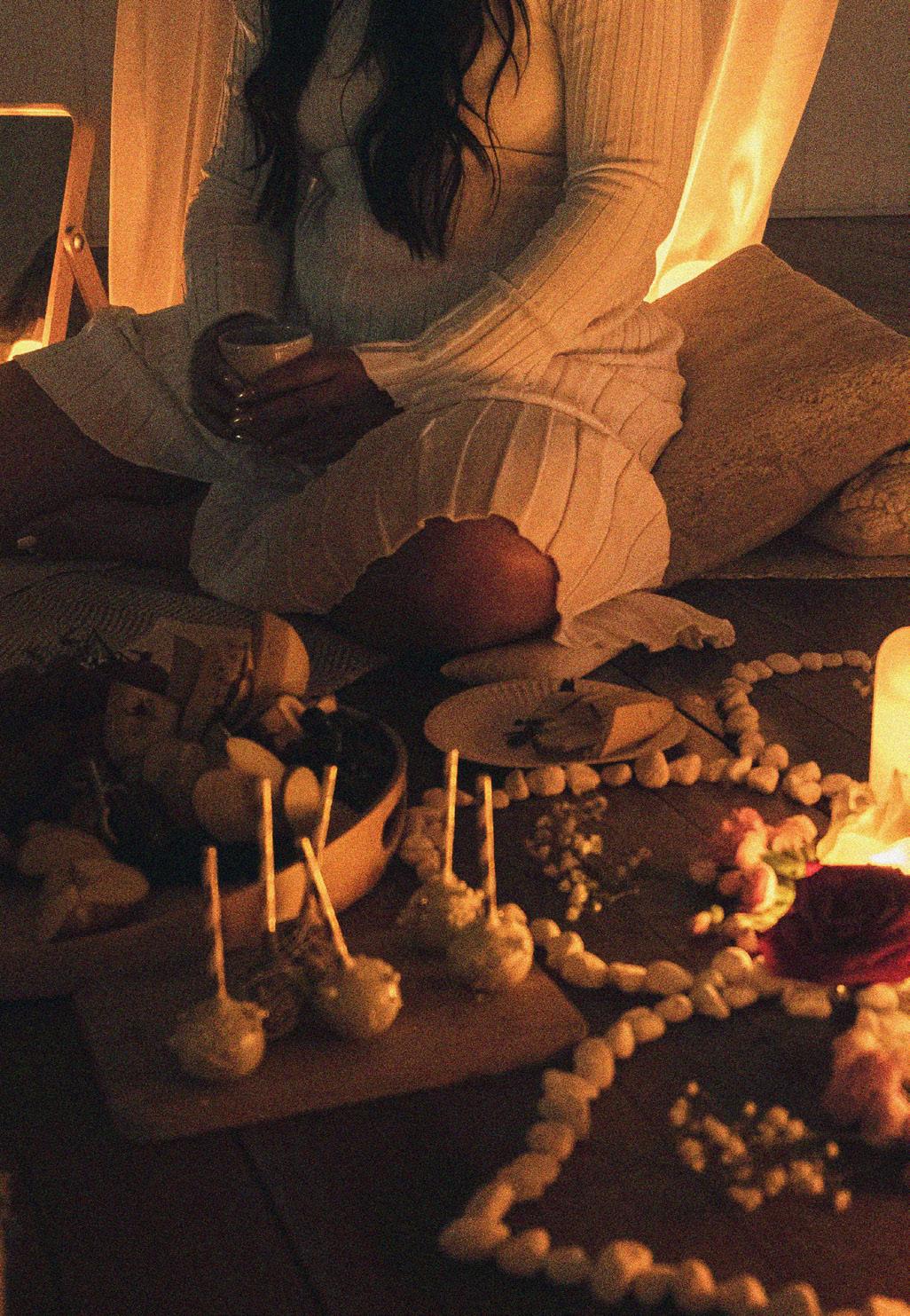
some women’s circles in your life without even realising, like that monthly brunch or book club with your girlfriends. But there are many varieties: some incorporate tarot, crystals, Reiki, music, movement, or journaling; some focus on specific themes like grief, lunar cycles, or gratitude. These gatherings are not a modern invention. Different forms of women’s circles can be traced back to many indigenous cultures, where women came together in ‘red tents’ or ‘moon lodges’ for sacred rituals. In the 20th century, feminist movements revitalised these gatherings.
In recent years, women’s circles have risen in popularity again amid growing interest in spirituality and wellness. On Instagram, the #womenscircle hashtag is currently featured on 330,000+ posts, compared to 160,000 in 2021.
From her study of circles across Belgium, the Netherlands, and Germany, Chia Longman, a professor in languages and cultures, writes in her 2018 article published in the journal Religions that circles are a form of women’s post-secular agency and subjectivity. The research reports that circles offer a “noninstitutionalised” space that is lacking in secular-liberal society, and that women “attend out of a desire to ‘re/connect’ with each other, their bodies, their inner selves, and sometimes with the sacred”. >>>

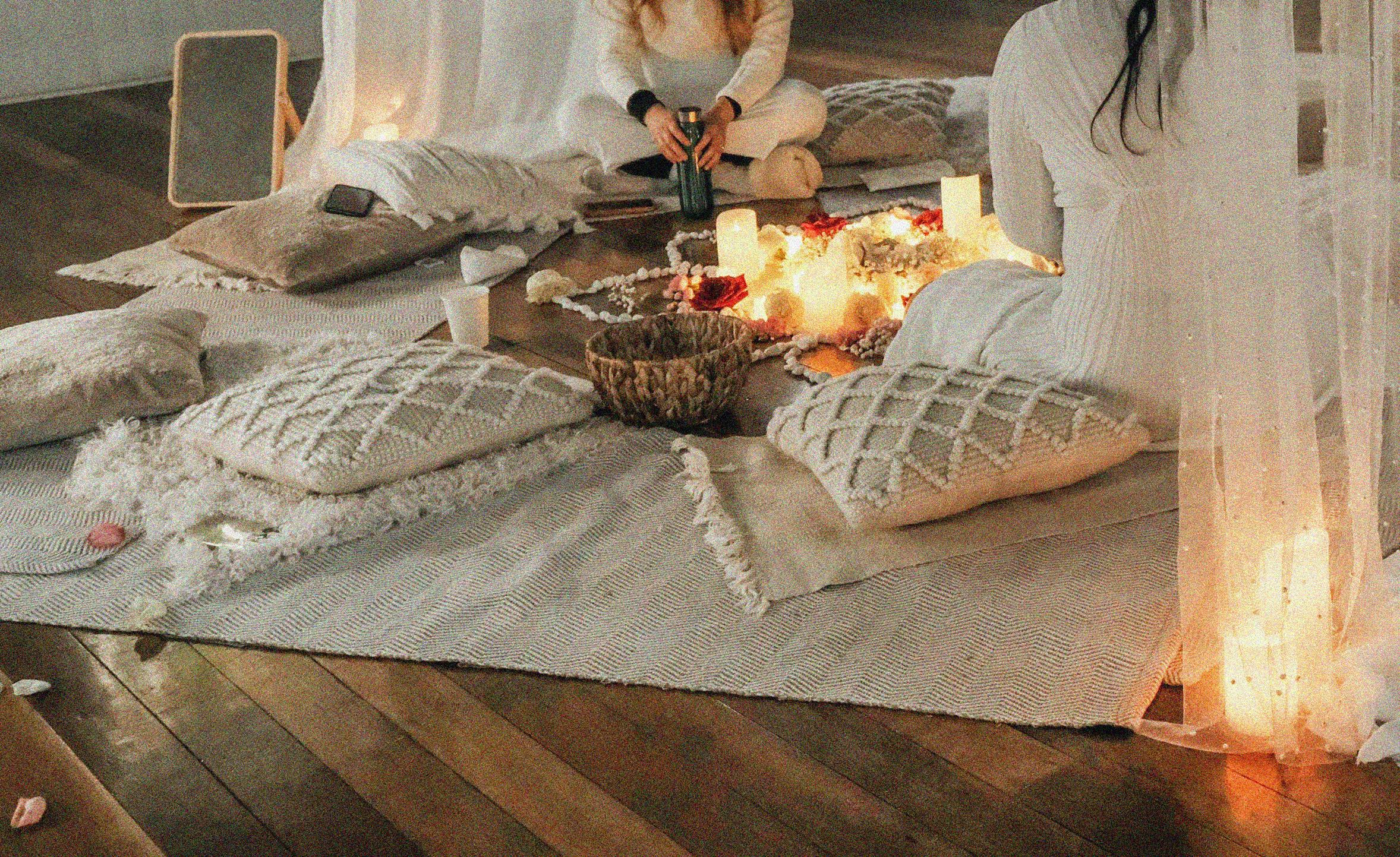
Psychotherapist Gigi Kaur’s top tips on finding the right women's circle for you:
• Let your intuition guide you.
• Look at the theme and outline, to see if it resonates with what you need right now.
• Consider the environment; e.g. you might prefer one set in nature, instead of a dimly-lit indoor space.
• Check out previous events, and read customer testimonials.
• Reach out to facilitators with questions to get a sense of how they communicate and hold space.
These ‘by-and-for-women’ spaces are free from judgement, the male gaze, the pressures and expectations of everyday life, and organised religion. They represent a more fluid, personal, and
eclectic form of spirituality or, at the least, self-care.
The rise in popularity of women’s circles comes at a time when loneliness is a common theme in the lives of many, with 49% of women aged 18–24 reporting feelings of loneliness some or all of the time, according to the 2025 Belonging Barometer. Combined with widespread home working, increasingly digital lives, and anxiety about the state of the world, women seem to be craving a meaningful community.
Heidi Gowthorpe, a women’s circle facilitator, sound healer, and
yoga and embodied movement practitioner, based in east London, started holding her own women’s circles in 2023.
“London is such a busy place, but it can also be incredibly lonely,” she says. “It felt like every woman I spoke to in her late 20s and early 30s was feeling the same.”
In response to this, Heidi started holding small gatherings, which blossomed into sisterhood circles and retreats in Yorkshire, London, Denmark, and Croatia.
Heidi believes the resurgence in women’s circles is the result of a deep longing to return to a simpler, more meaningfully social, way of life.
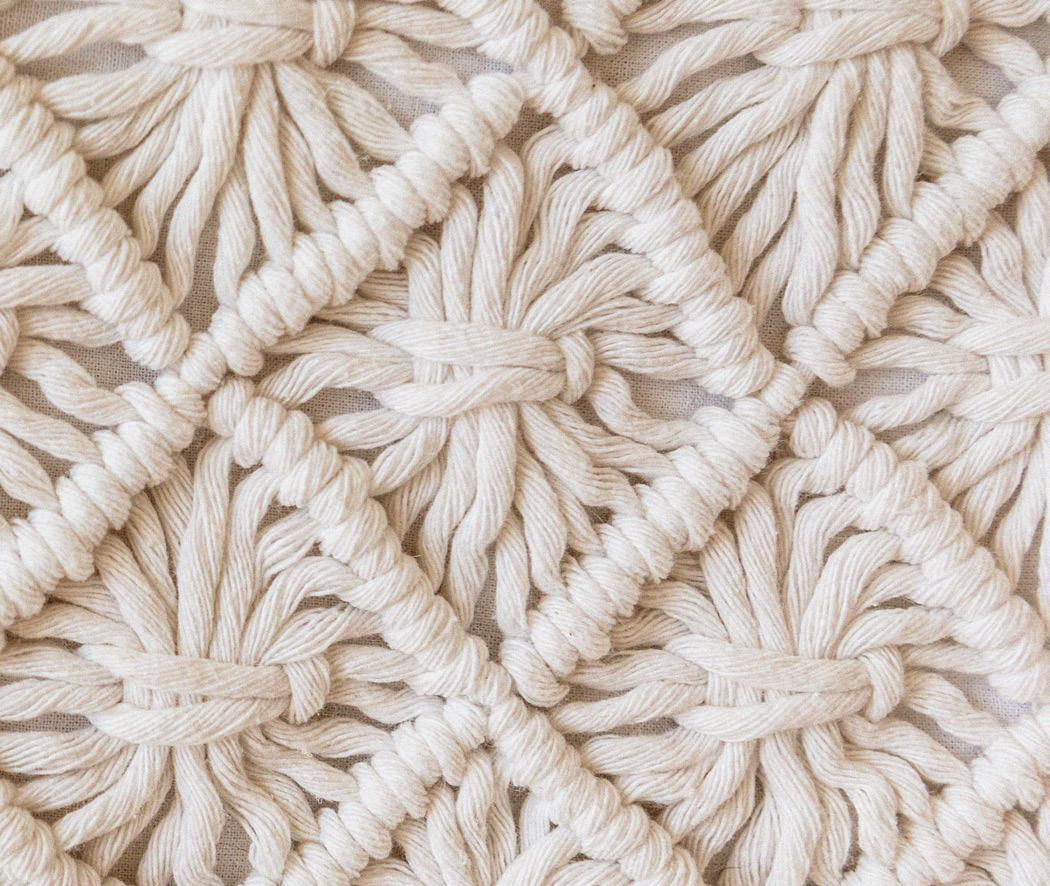
I’m constantly blown away by the power of being in these spaces
“Despite being more connected than ever through technology, I think we’re starved of true human connection,” Heidi explains. As is tradition, Heidi’s gatherings typically start with a sharing circle: inspired by a prompt or question, everyone has the opportunity to speak without interruption or unsolicited advice. For those intrigued, trauma psychotherapist and energy healer Gigi Kaur offers a word of warning before stepping into a circle: “I would be careful of circles where there is lack of facilitation and boundaries. The facilitator must clarify the rules around sharing in order to set a safe supportive container.”
For example, somebody sharing a recent trauma might trigger another person in the circle. Gigi says an experienced facilitator will set clear rules, and be mindful about this. “A women’s circle is not therapy, so unless this is monitored, it can be harmful,” she notes, highlighting that this isn’t a replacement for other forms of professional support.
At Heidi’s events, the sharing portion of the circle is often followed by journaling, guided meditation, and a sound bath.
More than a chance to wind down and connect, women’s circles can also act as a form of resistance against the systems of oppression that seek to keep us numb, divided, and distracted. “Women are fed up with the patriarchal narrative we’ve been fed that we are one another’s competition,” Heidi says. “I think our eyes are opening to the idea that something has to change. Returning to sisterhood and reclaiming these spaces is a small step in making that change.”
She explains that when we come together with other women and share our experiences, “we finally see that we are not alone, and we are not so different from one another. We feel empowered to start speaking up about injustices and inequalities.”
This push for female empowerment goes hand in hand with making sure everyone feels welcome and included at these gatherings. “I typically call my spaces ‘sisterhood circles’, as I hope that may feel more inclusive [...] I think as a space holder, I’m always learning and growing in my work and the spaces I hold.”
Women’s circles don’t just provide emotional support; community gatherings like this are proven to improve our mental and physical health, and even life expectancy. Research shows that strong social connections not only boost happiness, but can also increase longevity by up to 50%, as mentioned in the journal Perspectives on Psychological Science. Similarly, social support is reported to alleviate symptoms of stress, anxiety, and depression, as noted in 2024 research shared in Frontiers in Psychology.
“I’m constantly blown away by the power of being in these spaces,” Heidi says. “Having a space that feels safe and encouraging, where you can cry, laugh, and be witnessed and held in whatever you’re feeling, that’s powerful.”
The evidence is clear that social connectedness, like that found in women’s circles, makes us happier, healthier, and live longer. Whether you’re deeply spiritual or just want to find a community, women’s circles really do have magical properties.

Gigi Kaur is a trauma psychotherapist and energy healer. View her profile on the Counselling Directory.
Refresh your connection, uncover what’s working, and take action to strengthen your bond
Every relationship can benefit from a little extra care now and again. Whether it’s belly laughing with your bestie or deepening intimacy with your partner, taking time to celebrate your strengths, while spotting areas that need a boost, can lead to a deeper connection.
“Relationships, like anything we value in life, need communication and nurturing to work,” explains psychotherapeutic counsellor Ellie Rowland-Callanan. “We accept our careers or fitness goals require effort, showing up, and training, so why shouldn’t our relationships be prioritised in the same way?”
What is a relationship audit?
A relationship audit isn’t just a box ticking exercise. It’s a powerful way to reflect honestly on what’s working and, more importantly, what isn’t.
When done well, it can create space for both partners to feel seen, heard, and understood. So, how can you get started?
Set the stage
Before diving in, clarify your intentions. Are you looking for
more time together? Better communication? More intimacy? When you’re ready to talk, use calm and inviting language with your partner, for example, you might say: “I’d love for us to chat about how we’re doing as a couple, because I want to keep building on what we have.”
Choose your timing and setting carefully, avoiding stressful or busy moments. A quiet evening when the kids are asleep, or a slow Sunday morning are both great options. The goal is to create an environment where you both feel relaxed, happy, comfortable, and ready to connect on a deeper level.
First, home-in on what you do well as a couple, whether that’s co-parenting, sharing chores, or enjoying a thriving sex life. From there, gently touch on pillars that you feel shape a healthy partnership, such as communication, conflict resolution, trust, intimacy, future goals, and shared values.
Focus on one area at a time, remembering that the goal isn’t to ‘fix’ everything, but to deepen
your relationship through shared reflections. You might use the following prompts to spark conversation:
• How would you rate us in this area out of 10?
• What do you need from me that you might not be getting at the moment?
• What do I already do that makes you feel loved, respected, or supported?
• What patterns (positive or negative) do you notice in how we handle things in this area?
• What would ‘ideal’ look like for you in this area?
• What small steps could we take together to move closer to that ideal?
Ellie says: “Think about what connects you, as opposed to what divides you. Consider what brought you together in the first place – these differences can create excitement and passion.”
Keep it manageable
A relationship audit doesn’t happen in a day – it’s a process that happens over time. Breaking it down into smaller check-ins across days, or weeks, can make
it less overwhelming. Some couples may also find it helpful to take notes to revisit later after some personal reflection. If emotions run high, pause and return when you both feel calmer. However you approach it, always close on a positive note by sharing something you appreciate about each other.
When your answers don’t seem to add up It’s completely normal if your perspectives aren’t the same. This doesn’t necessarily signal trouble, it just shows you’re two people with different needs. In fact, these differences can be an invitation to grow closer. If things do feel challenging, try this listening exercise: set a timer for five minutes while one partner shares and the other simply listens – then switch. It might feel odd, but giving each other space to talk openly often leads to surprising insights, and less reactive responses.
Stay accountable, grow together
An audit is most effective when it becomes a regular habit, instead of a one-off chat. Create a rhythm of check-ins, whether it’s weekly, monthly, or quarterly. Even a quick chat while the kettle boils can make a meaningful difference. Use gentle prompts such as, “Is there anything we need to adjust this week?” or “What’s one thing I can support you with?” These questions keep the dialogue
flowing without adding any unnecessary pressure.
At its core, it’s a choice to invest in each other with intention. Once you’ve had the first conversation, consider setting a date for your next check-in, whether in six months or a year. Together, decide what you’d like to focus on next and set more goals, so that you can look back and appreciate how far you’ve come.

Ellie Rowland-Callanan is an accredited psychotherapeutic counsellor supporting clients with a wide range of issues. Find out more on the Counselling Directory.
Who said training your brain couldn’t be fun? Test yourself with this playful puzzle
Wordsnake
Try this variation on a classic wordsearch. Instead of being in straight lines, words are spelled out in winding paths, with each letter following the one before either horizontally or vertically – no diagonals here. Start with the bold letter and complete the whole grid! Theme: Art
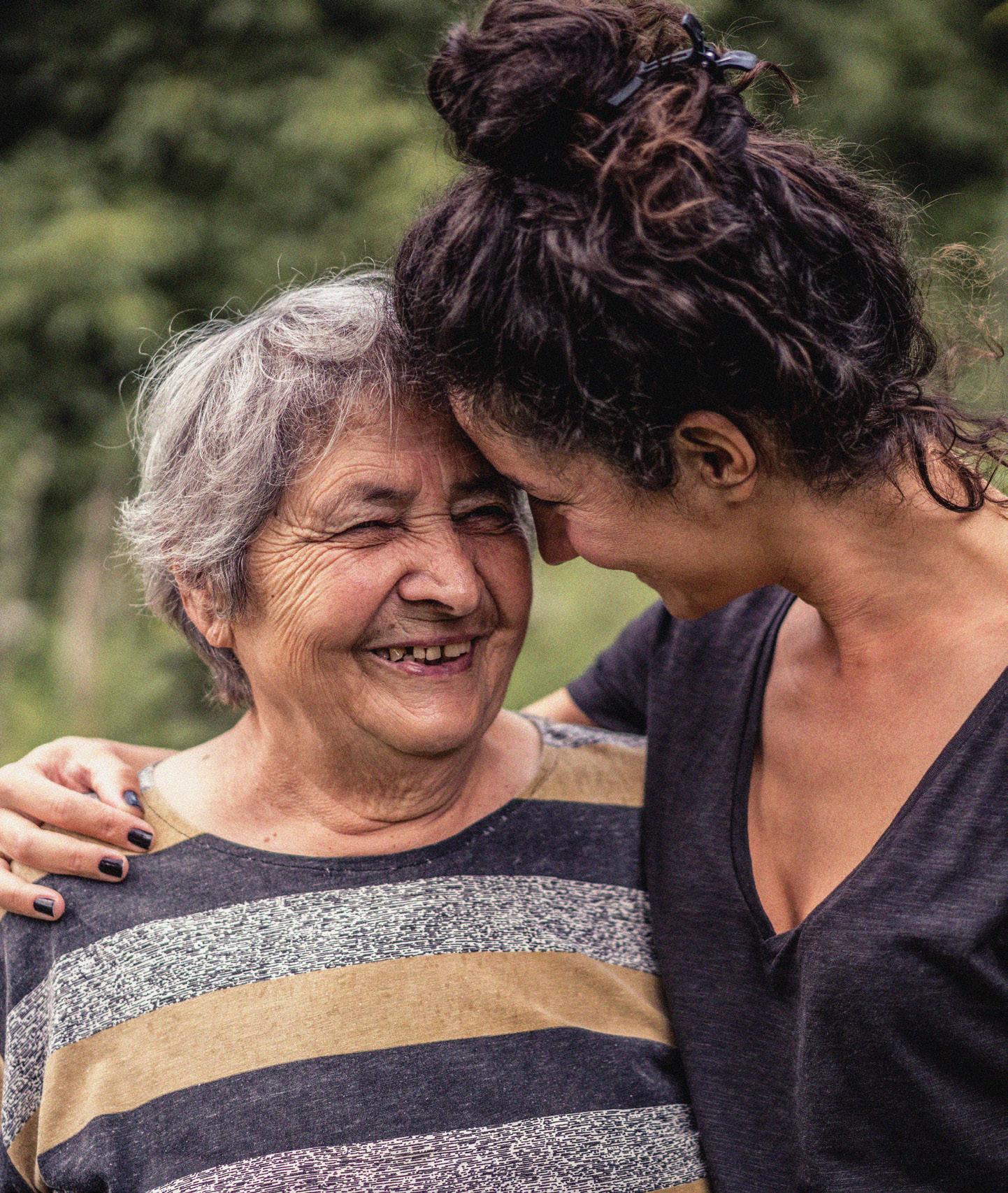
Is your friend shouldering the weight of caregiving for an ageing parent? If so, they may be feeling lonely, frustrated, or stretched too thin. Here, we look at the everyday struggles of providing care, and how you can lend a hand
Caring can look like a natural reciprocity of a relationship – whether that’s tending to a friend who’s laid up with the flu, or a partner who has put their back out. But some of us – women, especially – face one-sided and, sometimes, exhausting caregiving demands when we take on the responsibility of an elderly parent’s health and wellbeing. Looking after elderly parents is an uphill climb, carrying emotional, and physical, costs for the carer, such as burnout,
anxiety, sleep issues, and even a loss of self. And on top of all that, this life-altering job is one that’s often unpaid.
The Office for National Statistics revealed there were 5.8 million unpaid carers in the UK, with women being more likely to provide care, according to the 2021 Census. Among the carers who were surveyed, 3 million were working in paid employment while managing the responsibilities of caregiving.
What’s more, the Family Resources Survey for the financial year 2023 to 2024 noted that the primary group of people receiving care were parents living outside the home. The same survey also found that 18% of carers in the UK were ‘sandwich carers’, meaning they were looking after a dependent child within their household while providing informal care to an adult relative, who, as we know, is often a parent.
So, your friend may find themselves caregiving in the >>>
thick of ongoing work, or parenting commitments (or both!), feeling like they’re running on empty.
No longer the same
“When a friend begins caring for an elderly parent, it can reshape their life quietly, but profoundly,” says counsellor Debbie Crew, highlighting the day-to-day difficulties of caregiving. “You might notice them cancelling plans more often, seeming distracted, or emotionally withdrawn. Beneath the surface, they may be juggling hospital visits, difficult conversations, and the growing fear that things are changing much faster than they can manage.”
Debbie breaks down the difficult reality of caring for elderly parents, including the emotional tapestry of experiencing something so momentous. “Caring for a parent, especially while raising a family or managing a career, is one of the most emotionally complex roles a person can take on. It often brings up guilt, grief, and exhaustion. Because it creeps in slowly, many people don’t realise how overwhelmed they are until something breaks.”
Your friend may feel confused as those familiar boundaries between parent and child begin to dissolve. Parenting the
parent, or at least seeing them as vulnerable, may lead to feelings of uncertainty, or loss, as your friend questions where they now stand in that shifting relationship.
adding another obstacle to this challenging situation, which can be heightened again if their relationship has been strained or distant in the past.
When a friend begins caring for an elderly parent, it can reshape their life quietly, but profoundly
A friend of mine, Faye, who cares for her mum with Alzheimer’s disease and Lewy body dementia, describes this process: “It’s the weight of pretending you’re coping when, inside, you’re grieving the slow loss of the person they used to be. It’s one of the most loving things I’ll ever do, but it’s also one of the hardest, too.”
Additionally, your friend may feel some resentment or frustration as a result of putting plans on hold, or missing out on important occasions. The cared-for parent can also feel resentful about receiving care,
And let’s not forget about the potential financial fallout from looking after ageing parents, including direct elderly care costs, and lost income due to reduced working hours.
It’s no wonder that findings from a 2019 YouGov survey showed that 72% of unpaid carers felt that more help, especially emotional support, was needed. So, what are some steps you can take to stand by your friend in difficult times?
Debbie states the importance of simply being there. “Your presence is the most powerful thing you can offer,” she says. “Don’t worry about saying the perfect thing. Just letting them know that you are thinking of them can be a valuable lifeline.”
When your friend opens up, Debbie suggests giving them space to be heard and express themselves fully, without providing solutions or comparisons. Try to avoid any ‘at least’ comments, as they can be unintentionally invalidating. Some carers, however, find talking tricky, especially if there’s a family system of keeping quiet about their relationship dynamics


outside the house, or, as in Faye’s case, they’re simply exhausted.
“Sometimes I might go quiet. It’s not because I don’t care, it’s because I’m tired in a way that’s hard to describe. In those moments, a simple ‘thinking of you’ text can make all the difference, reminding me that I’m still seen,” Faye says.
As Debbie emphasises, being a consistent presence can mean the world. “Supporting a friend in this position doesn’t require grand gestures. Steady kindness, quiet understanding, and practical help can go a long way.”
She outlines valuable practical guidance, including directing them to organisations like Age
UK or Carers UK, and offering assistance with that initial, daunting phone call, as well as some concrete actions to make a difference to their wellbeing.
“Instead of vague offers, try to suggest something specific. Can you drop off a meal, help with a lift, or sit with their parent for an hour? Carers often won’t ask for help. Because they don’t know what to ask for, or feel guilty accepting it,” Debbie points out.
You can’t pour from an empty cup
Feeling guilty, especially when it comes to asking for help or taking time out, is something many carers struggle with

emotionally. When my nan was diagnosed with dementia, my mum took on many of the caring responsibilities, putting her own needs aside while she felt she had to be the ‘strong’ one. But she said it was her friends who kept her going. So, know that reminding your loved one to nourish themselves can ease the pressure.
As a carer, mother of three, and full-time worker, Faye reiterates the need to pause. “I need space to talk beyond my caring role. To laugh, vent, and be silly helps me feel like me again. Even short, light-hearted conversations can pull me out of the fog.”
Helping your friend carve out space to engage in fun moments, or prioritise self-care, can reawaken who they were before. “A walk, a coffee, or a shared laugh might not fix everything, but it reminds them of who they are beyond their caring role,” Debbie says.
Samantha Redgrave Hogg is an author whose book, ‘Flow: Self-care sessions for your menstrual, lunar, life and seasonal cycles’, is available now. Visit @wombonthebroom for more.
Powerful hypnotherapy techniques can transform how you perceive criticism, and help you use it to fuel your fire instead
There’s a concept I’ve always liked: ‘A diamond is just carbon that does very well under pressure.’
It makes you stop and think, doesn’t it? Pressure often gets a bad name. People hear the word and think of stress, worry, or being pushed too far. But pressure itself isn’t necessarily the problem. While excessive amounts of long-term pressure can trigger unhelpful coping mechanisms, and have negative health implications, without a certain amount of pressure, little would get done. Carbon doesn’t become a diamond without pressure, and people don’t achieve their potential without a healthy amount of pressure either.
The real question is how we deal with pressure. Take scrutiny, for example. For many, being under scrutiny feels uncomfortable, even threatening. It can trigger feelings of being judged, doubted, or exposed. But, if you look at it differently, scrutiny can be seen as a mirror. It reflects back what we’re doing well, as well as what still needs work.
There’s a distinction between helpful feedback and unfair criticism, of course. Sometimes scrutiny comes from bias,
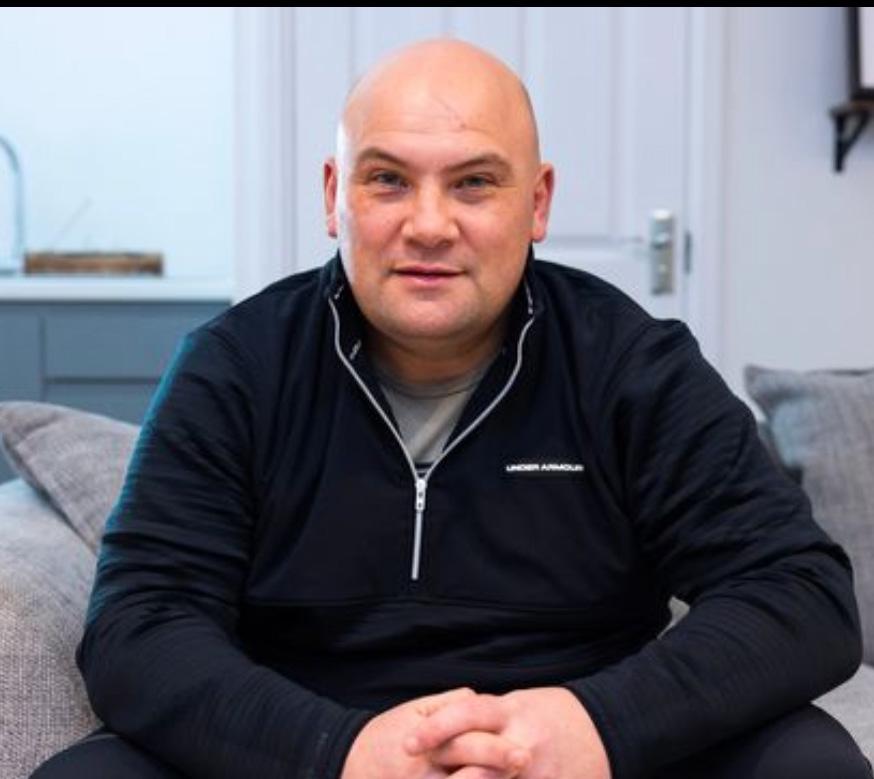
incomplete information, or malicious intent. The skill is in receiving feedback calmly, and being able to identify whether it is legitimately constructive. If you can get past the sting, scrutiny can be a tool. Without it, there’s no pressure. Without pressure, there can be less motivation to improve performance. And without performance, we never discover our capabilities. The real skill is learning to respond to scrutiny calmly, rationally, and positively. To understand why the pressure that comes with feeling under scrutiny can be so difficult, it helps to know about the two distinct ways the brain works.
This is where logical, considered decision-making takes place. It’s calm, rational, and positive. It’s where problem-solving and creativity live, and where we can see the bigger picture. This is the part of the brain we want to use when we’re under scrutiny.
This is our survival system. It’s fast, reactive, and powerful, designed to
Chris O’Connor is an experienced clinical hypnotherapist, who has helped hundreds improve their lives through hypnotherapy. Get in touch via the Hypnotherapy Directory.
keep us alive. The amygdala, when triggered, sets off the fight, flight, or freeze response. That’s useful if you’re facing real danger – but less so when the ‘threat’ is a looming deadline or a tricky conversation. The snag is, the primitive brain doesn’t know the difference between imagination and reality. Under pressure, most people unknowingly slip into the primitive brain. Anxiety rises, confidence dips, and performance suffers. Scrutiny, instead of feeling like feedback, feels like an attack. This is especially true if you’ve been under pressure for an extended period of time, which can see anxiety levels build up – and that small critique seems more threatening. Normally, the brain clears unprocessed negative thoughts through REM sleep, but when overwhelmed, that process falters.

This is where hypnosis can be a powerful tool. Hypnosis is a changed state of awareness and relaxation that allows for improved focus and concentration. It artificially activates the REM state – the brain’s natural mechanism for processing thoughts, feelings, and emotions.
Think of it like this: someone criticises you at work, and the thought lingers all evening. When you sleep, your brain processes the emotions attached to the event during REM. The next morning, you may remember
the comments, but the emotional charge is gone.
The trouble is that REM sleep is limited to about 20% of the night. If the brain has too much to process, REM is overloaded, and the sleep quality is affected. That’s why people wake at 3am with racing thoughts, or already feel tired when their alarm goes off in the morning. Over time, this builds into anxiety, poor concentration, and a dip in performance – feeding a cycle of feeling under scrutiny.
Hypnosis gives the brain more processing power. It helps
people clear the backlog, regain calmness, and return to peak performance. But hypnosis is only part of the picture – what’s just as important is the mindset that we carry forward.
Most of us, when receiving criticism, dwell on the problem. We replay our mistakes, beat ourselves up, and ask: ‘Why did this happen?’ This can keep us locked in the primitive brain, focused on negativity.
A solution-focused approach flips that. Instead of asking why, it asks better questions:
• What do I want instead?
• What’s already working that I can build on?
• What’s one small step I can take right now in the right direction? These kinds of questions reengage the intellectual brain. Clients often call these ‘the miracle questions’, because they help to shift perspective almost instantly. By focusing on solutions rather than problems, pressure stops being a threat and becomes a challenge. Scrutiny turns from an attack into a form of valuable feedback. Anxiety can be replaced with mental clarity and calmness. This means that accepting constructive criticism can be transformed into a resource for your own personal development. Scrutiny, then, and the accompanying pressure you might feel, isn’t necessarily something to be feared. It’s part of everyday life, part of progress, and part of performance. Without it, we don’t grow. With it – handled well – we can thrive in every part of life. Diamonds are created under pressure, and so are we!
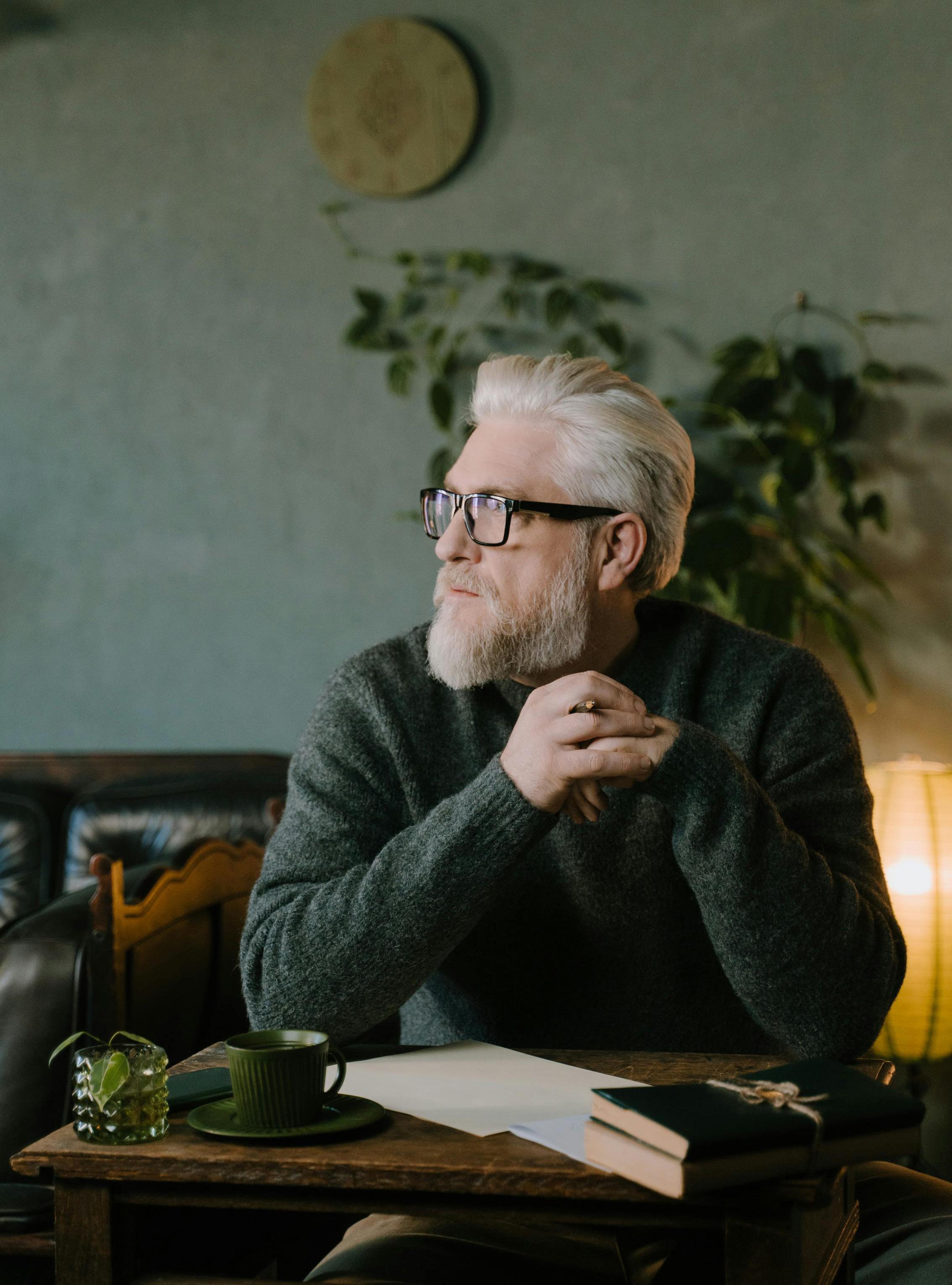
The curious paradox is that when I accept myself just as I am, then I can change
Carl Rogers
Recovering from domestic abuse is an ongoing journey that requires support, and one outlet that is helping survivors move through it is therapeutic dance…
Writing | Fiona Fletcher Reid
The impact of domestic abuse (DA) can’t be overstated. According to the National Centre for Domestic Violence, every 30 seconds in the UK, a domestic abuse related call is made to police, and while one in every three victims is male, women are disproportionately affected – they’re more likely to experience repeat victimisation, and be physically injured.
Recovery is a lifelong process that requires multifaceted, trauma-informed support –from finding safe housing to rebuilding emotional safety, and addressing the long-term mental health consequences.
Unfortunately, there’s no onesize-fits-all response to survivors’ mental health needs, with women often requiring access to multiple services over time.
But one organisation is providing a unique and uplifting space for women to recover: The Dandelion Project. Founded by domestic abuse survivor and trauma-aware movement coach Fi Bool, the project combines peer support, trauma-informed movement, and community initiatives designed to aHosting in-person classes in Suffolk and Essex, the project is designed to help participants heal, rebuild self-trust, and regain confidence in their bodies.
The body keeps the score
Dancing may not be the first thing that springs to mind when you think of ways to support someone who has experienced trauma, but, as Fi explains, trauma isn’t just stored in the mind – it lives in the body, too.
“Our nervous system holds on to stress, fear, and memories long after the moment has passed. The brain can only process so much, but the body remembers everything,” says Fi.
Part of recovery can be learning to manage triggers, and, often, it’s the body that reacts when met with the memory of trauma. For example, someone may receive a message from an ex, resulting >>>
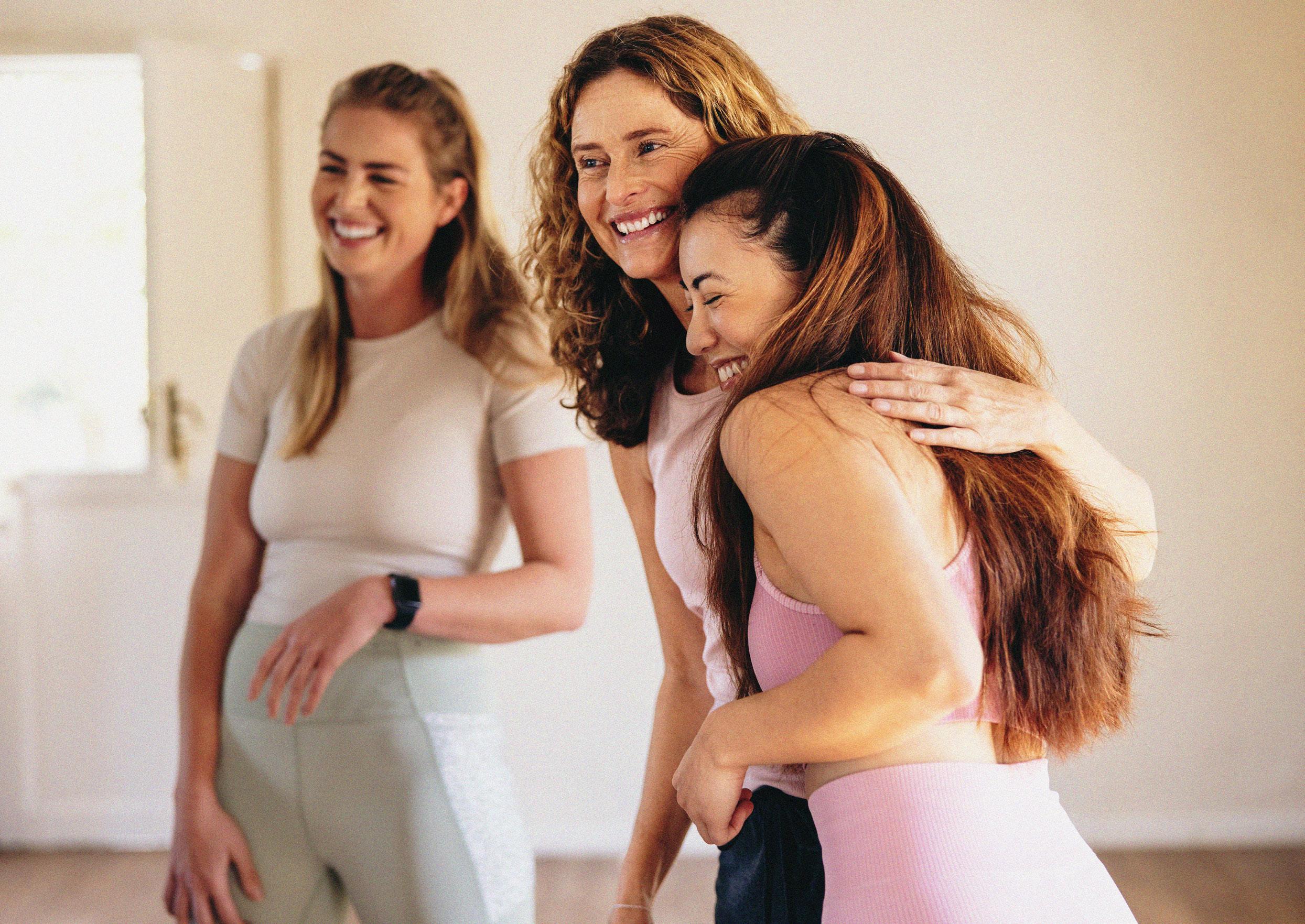
in a physical freeze, racing heart, struggling to breathe, feeling dizzy, etc.
“Dance and movement offer a way to release some of that,” says Fi, “not by talking or reliving it, but by moving through it.” This sentiment is confirmed by research from the University of Oxford, published in Biology Letters, which states that dancing with others can significantly boost feelings of social bonding, as well as have a powerful effect on pain threshold, suggesting it can lead to a release of endorphins.
“Dance uses both sides of the brain,” explains Fi. “The left side, which is responsible for logic,
structure, and coordination, and the right side, which handles creativity, emotion, and expression. So while you’re moving, you’re thinking with your whole brain, and that leaves very little room for intrusive thoughts, anxiety, or overthinking. It’s a full body and mind reset.”
One of the things that sets dance apart from other forms of exercise is the sense of freedom and self-expression it offers. “You get to choose how you move, how much you give, and when to pause,” says Fi. “It’s a chance to listen to your body, and respond
to it with compassion rather than judgement. It is an opportunity to empower yourself.”
For survivors who may not be ready to discuss their experiences, dance offers expression through the body, making it particularly effective for those struggling with conventional language-based therapy, as noted in the Journal of Traumatic Stress.
Additionally, all classes are centred around general movement, rather than a specific dance style. “It’s all about creative expression. Nothing fancy or performative,” Fi explains. “It might be walking, tapping fingers, a simple sway, or loud stomp.
There’s something incredibly powerful about being in a room with others who just get it
We’re reintroducing everyday movement back into the body in a way that supports recovery from trauma. It’s not about how it looks, it’s about how it feels.”
Although freedom of movement is encouraged, classes have a weekly theme and follow a set structure, starting with grounding exercises, followed by simple movement tasks. “These then lead into a creative section. This might include props or prompts to help women explore the week’s theme within their own body, in the space, or sometimes with a partner or group,” says Fi.
Participants are given a notebook and are encouraged to journal throughout the sessions, helping to gently reintroduce the idea of moving the body – a challenging concept for those who have experienced abuse. Sessions end with meditation, and time for social connections over a cuppa and some biscuits.
According to Fi, this communal aspect adds crucial support: “There’s something incredibly powerful about being in a room with others who just get it. Maybe they haven’t had your
exact experience, but they know what it’s like to navigate the legal system, to survive coercive control, or to raise children on your own while holding everything together,” says Fi. “That shared understanding without needing to explain, is what makes the space feel so validating and supportive.”
This innovative approach to recovery is particularly vital given the current state of mental health services for survivors.
In 2019, a report by UK charity SafeLives documented how austerity has created long waiting lists for survivors, while strict eligibility criteria means they often ‘bounce’ between services, repeatedly retelling traumatic experiences.
The Dandelion Project addresses these needs through small group sizes, two facilitators plus a mental health support worker at every session, and thorough surveys to understand participant needs. There’s no expectation of being ‘healed’, and expression through movement is valued as a form of communication, alongside optional verbal sharing.
Some of the most profound shifts happen beyond the studio. “One woman in our Survivor Steps programme was able to use some of the tools we practice, particularly around breathing and grounding, to overcome the intense anxiety she felt walking into court,” says Fi. “Not only did she manage to walk in with confidence, but she delivered her spoken word testimony for the first time – something she never thought she’d be able to do.
“For survivors, where daily life can feel volatile – even if it’s not because of the perpetrator directly, but related to the legal process, child maintenance services, or parenting pressure – being able to stop that spiral is huge.”
When asked about her perspective on recovery, Fi offers a refreshing viewpoint: “We don’t really talk about healing as a destination at The Dandelion Project. I’m not sure you can ever truly heal from what you go through. [...] Trauma changes your chemistry, it changes the way you show up in the world. So, for us, it’s about rediscovery, about remembering who you are underneath everything you’ve survived.”
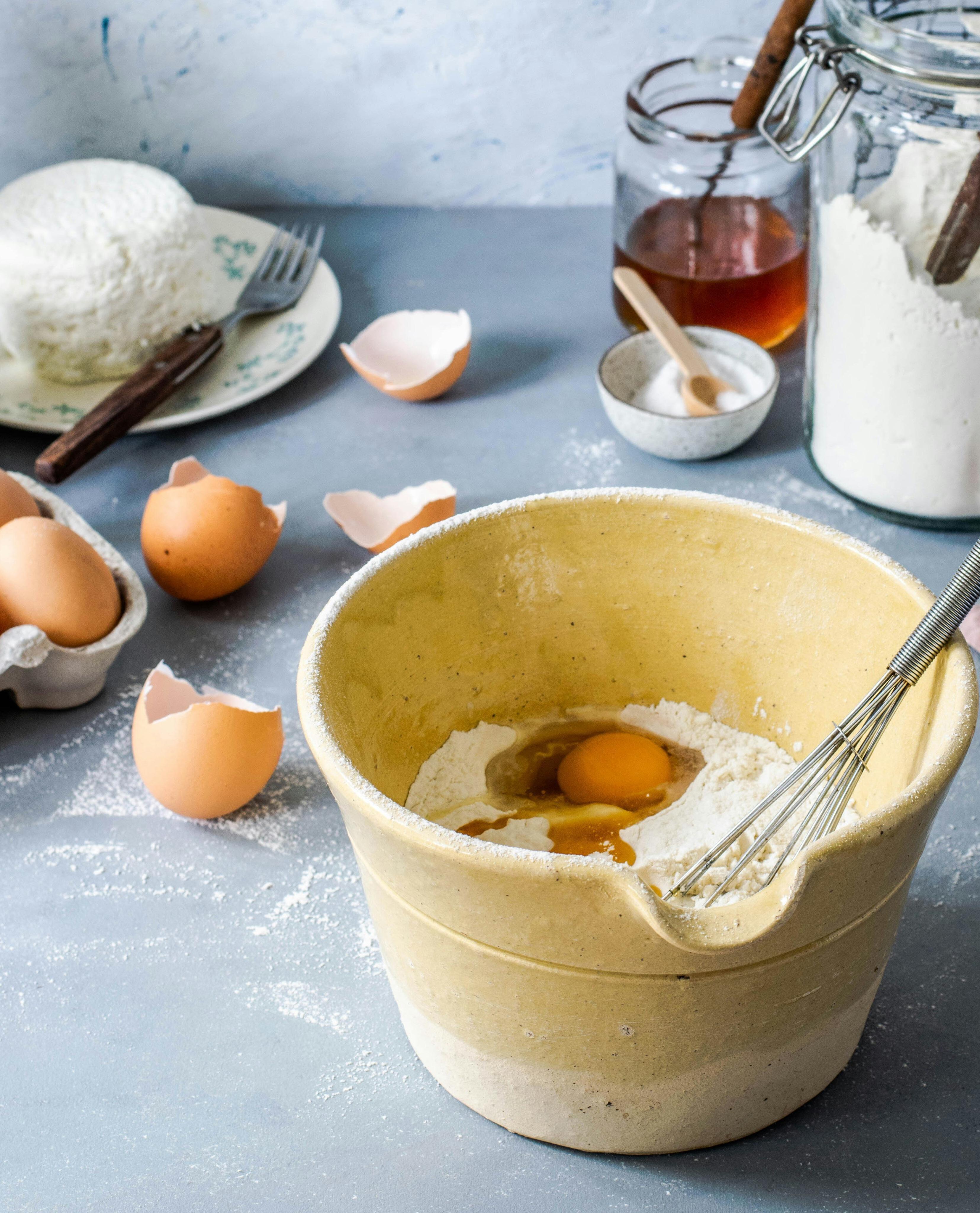
These banana and almond ovenbaked pancakes are the ultimate quick, yet nutritious, breakfast
Writing | Tilly Green
What’s better than pancakes? A simple, premade, oven-baked version. This recipe combines banana and almond butter to make a delicious, nutritious, and sweet breakfast that can be reheated and served in a flash – or even eaten on-the-go if you’re in a rush. With ingredients such as chia seeds, Greek yogurt, almond butter, and banana, this recipe serves as a protein and fibre-rich option that will keep you satisfied.
Banana and almond traybake pancakes
Serves: 6
Prep: 10 minutes
Cook: 20 minutes Ingredients
• 2 eggs
• 200g Greek yoghurt
• 1 tsp vanilla extract
• 70ml semi-skimmed milk
• 2 tbsp maple syrup (optional)
• 100g plain flour
• 1 tsp baking powder
• ½ tsp bicarbonate of soda
• Pinch of salt
• 1 tsp cinnamon
• 3 tbsp chia seeds
• 2 tbsp almond butter
• 1 banana, sliced
• Flaked almonds for topping Method
• Preheat your oven to 180˚C and line a baking tray, (approximately 32x25cm) with baking paper.
• In a large bowl, mix the eggs, Greek yoghurt, vanilla extract, and milk. Add the flour, baking powder, bicarbonate of soda, salt, and cinnamon, then mix until smooth. Finally, gently stir in the chia seeds.
• Pour the batter into the prepared tray and spread into an even layer. Using a spoon, place small amounts of almond butter throughout the batter. Then, with a fork or skewer, swirl the almond butter through the batter.
• Place the banana slices and flaked almonds atop the batter evenly. Bake for 20 minutes, or until golden brown and cooked all the way through.
• Remove from the oven, allow to cool slightly, and cut into 6 equal pieces. Serve straight away with Greek yoghurt and a drizzle of maple syrup, or store for later and heat in the oven for 3–5 minutes before serving.
Tip: Fancy a savoury breakfast instead? Swap the vanilla extract, cinnamon, and maple syrup for salt and pepper, and the toppings for pesto, eggs, and prosciutto ham. Or switch up the sweet ingredients to sliced apples and cinnamon, strawberries and dark chocolate, white chocolate and mixed berries, and so on. The beauty of this recipe is its adaptability.
The healthy bit
Multiple ingredients in this recipe contribute to its overall nutritional density, making it a balanced and nourishing breakfast option.
Chia seeds are an excellent source of omega-3 fatty acids, which play a key role in supporting heart and brain health, while helping to reduce inflammation. They also provide both fibre and protein, which can slow down digestion, balance blood sugar levels, regulate hunger cues, and support healthy bowel function.
Greek yoghurt boosts the protein content, transforming these pancakes from a simple breakfast into a filling meal. It’s also rich in beneficial bacteria, helping to maintain a healthy gut microbiome. However, because cooking destroys most of these bacteria, adding an extra
spoonful of yoghurt just before serving is a clever way to retain those probiotic benefits. Other sources of fibre in this recipe include banana, almond butter, and almond flakes, which, together, provide both soluble and insoluble fibre. Since it can be challenging to reach the recommended daily fibre intake, incorporating a variety of sources into each meal, especially the first meal of the day, can make a big difference. Almond butter contributes more than just fibre – it’s a rich source of healthy fats, particularly monounsaturated fats, which help to maintain healthy levels of ‘good’ cholesterol (HDL). It also provides micronutrients like vitamin E and magnesium. Bananas bring natural sweetness and flavour, while delivering a range of nutrients. Best known for their high potassium content, they also provide vitamin C, vitamin B6, and antioxidants. Overall, this recipe delivers a balanced combination of protein, carbohydrates, healthy fats, and fibre. Together, these components work to slow down digestion and support steady blood sugar levels, providing consistent energy throughout the morning to keep you fuelled and satisfied until lunch.
Tilly is dedicated to helping individuals through evidence-based guidance and a positive relationship with food. Find out more via the Nutritionist Resource.

Does it feel like you’re just treading water in life?
Michelle Elman explores what it really means to live with your life not fully mapped out, and how to find freedom in ditching the plan
Writing | Michelle Elman
Have you ever had a point in your life where you felt lost? Or maybe you felt stuck, craving change, without knowing where to begin. I’m in that phase right now, and, being frank, it sucks.
Having been a life coach for more than a decade, by nature, and by trade, I sit very comfortably when I know the answers, and, as an ambitious person, I always have a plan in life. I’m confident in the direction I’m going in, the goals I’m setting, and my drive to pursue to no end. But, how can you pursue something when you don’t know what’s next?
Shortly after publishing my fifth book in May, I started questioning my career. I was already writing my next project, which was about heartbreak, but I no longer felt like I wanted to publish it. It would be an amazing next step in my career, but it felt like it was dragging my healing backwards. Then, I started to question my podcast, and whether it was bringing me the joy it once did. And, bit by bit, I started to question every part of my career.
Wary of throwing the baby out with the bathwater, I decided to take the summer to allow myself to pause with one very simple rule: no big decisions. I could pause my podcast, and stop writing, but no hitting delete on the 50,000 words I had already put on the page, or making a sudden move halfway across the world –not just yet, at least.
The truth is, we have all hit these inflection points in life where we change, and what we want starts to change with us, too. When we start questioning where we are, it brings up uncertainty and confusion, and if, like me, you aren’t very good with these emotions, it can be tempting to let it lead you into a big old meltdown spiral. This is why it’s so important to look at these moments logically and rationally.
Nothing is going to collapse by you continuing to plod along, and doing just enough to keep your job and your life afloat. Buy yourself as much time as you can to let the dust settle, and start talking to as many people as possible. If this uncertainty arises within your
career, start asking around and listening to other people’s paths and trajectories of how they got to where they are. Absorb stories of people who have made mid-life shifts, and cling on to the tales of hope and optimism.
What I realised in the last few months of not having any answers, is it’s given me more opportunity and freedom to be open to the potential of something new happening. I’m paying attention to how endless the possibilities are, and walking into the unknown with the emotion of curiosity.
You don’t need to know the answers in life, but, to ground yourself, what you can do is write a list of everything you do know right now. I did this myself on one of the days when my brain wanted to exaggerate the confusion into ‘everything is wrong in my life’. The list reminded me that what I’m questioning isn’t everything, but simply a few things. I also wrote a list of everything I knew that I didn’t want. Ruling out options helps the endlessness feel more manageable.

I truly believe that curiosity is one of the most crucial emotions in these moments, because it means you engage with the world in a totally different way. Instead of seeing the uncertainty as a threat and feeling doomed to a miserable future, you see it morph into an opportunity for an exciting new shift.
Unfortunately, change rarely happens in our comfort zone, so the uncomfortable feelings
you’re experiencing are part of the drive to figure it out. Ultimately, the people who typically worry most about not knowing all the answers, or feeling like they’re lacking direction in life, are those who are naturally ambitious and motivated. So it’s not necessarily a sign that you’re failing to feel like this, rather that you seek fulfillment and self-development, which is something that you should be proud of.
I’m paying attention to how endless the possibilities are, and walking into the unknown with the emotion of curiosity
In the in-between of it all, it’s important to take a moment to look back, enjoy your accomplishments, and acknowledge all you’ve achieved to get yourself to where you are today. Even if that place isn’t fulfilling anymore, taking stock of your accomplishments thus far allows you to recognise that having a moment to pause, and giving yourself some time to explore, could land you in positions you would have never expected.
For me, it gave me a summer to maximise family time, and indulge in travel more than I have in the past, and, as a result, I’ve learned to detach my self-worth from the productivity trap of destination addiction, and always knowing what’s next. Sometimes, it’s OK to not know. Sometimes it’s OK to just exist, and not always be moving on to the next shiny new thing!
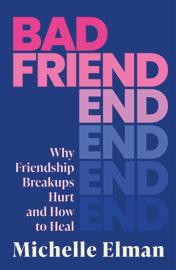
‘Bad Friend: Why Friendship Breakups Hurt and How to Heal’ by Michelle Elman is out now (Renegade Books, £20)

When your grief doesn’t fit the ‘mould’ of what others expect, it can feel unacknowledged – making it all the harder to deal with.
Here, we’re explaining the concept of ‘disenfranchised grief’, and how you can support yourself, and others, through the process
Writing | Fiona Fletcher Reid
Grief is something that can feel impossible to navigate. Yet most of us know that when someone we love dies, certain things tend to happen: friends rally round; neighbours deliver food parcels; sympathy cards arrive in the post; and funeral arrangements are made. Western society is well-versed in acknowledging this kind of grief, but what about the other forms of grief that can go unrecognised?
Grief can be complex. A friend of mine recently lost an estranged parent, and, in the aftermath, experienced family members dismiss his sadness, implying that his lack of contact meant he had no right to grieve. Someone else I know lost all of her possessions in a house fire, and, despite informing her employer of her loss, her work output was expected to remain unaffected. These are examples of the various, valid forms of grief that deserve to be witnessed with compassion.
The term ‘disenfranchised grief’ relates to any form of grief that is unacknowledged or dismissed by wider society. While it can be regarding the death of a person,
disenfranchised grief can occur through various experiences of loss, such as the passing of a pet, the end of a marriage or friendship, or coming to terms with a parent’s dementia diagnosis. In particular, there tends to be a lack of ritual around the loss, which means no opportunity to gather and grieve as with a traditional funeral.
“A huge consequence of grief not being socially recognised, is that it can lead to isolation and loneliness – neither of which are conducive to mental health or being able to process grief,” explains Nova Reid, author of The Good Ally and expert on race and mental health. “This can lead to delaying grief, questioning your own reality, and poses a risk to seeking support.”
What that support looks like is unique to the individual, but we know that bereaved people who have more contact with family and friends tend to report better quality of life, as noted in the Journal of Loss and Trauma. Similarly, in a survey of 372 grieving people, published in PLOS One in 2021, researchers concluded that emotional support, and acts of emotional concern, were the primary requirements for grief support.
There can be multiple contributing factors to this kind of grief, one of which can be time limits imposed by others. Being saddened by the loss of a sibling who passed away decades ago is valid. If you choose to skip the university freshers’ party because you’re processing the grief of leaving home, that’s OK. Grief is not a linear process.
Another potential source for disenfranchised grief can be if your loved ones have strong personal opinions on whatever it is you’ve lost (a person or a thing), which can make it seem like they’re less supportive, or dismissive, of your grief. This could be a same-sex relationship your parents didn’t approve of, or a pregnancy that your friends said was ‘too soon’. Comments that downplay or invalidate what you’ve been through can leave you feeling as though you’ve been denied the chance to fully grieve, or get the support you need. How you grieve can also be a source of judgement – especially when there’s no universal way to react. With a breakup, you might feel you’ve also lost your shared home, social life, and future plans. While some find going ‘no contact’ with an ex is best, others may want to keep some form of communication for mutual >>>
emotional support. There’s no right or wrong way to process grief, so create a grieving process that works for you.
So, in the face of disenfranchised grief, what can be done to take care of your wellbeing? You may be tempted to opt for distractions, if the emotions feel too big to deal with on your own, but this could potentially prolong the agony.
“Because this kind of grief is often not acknowledged socially, it’s important to acknowledge your feelings, don’t bypass them,” says Nova. You may want to talk things through with a counsellor, or you could try journaling. “I wrote a letter to my best friend, writing all the things I wished I’d said, and still want to say, to her,” says Nova. It can be helpful to embody your emotions, especially anger. “Healthy anger release can help let go of some of the intensity of emotion, like screaming into a pillow, or discharging energy through exercise,” says Nova. And when sparks of happiness do break through, don’t let them pass by unnoticed. “When there is joy, allow it in,” says Nova. “People often feel guilt about joy during this time, but joy and pain can co-exist – experiencing joy is not a betrayal to their memory.”
If someone you love is affected by disenfranchised grief, Nova advises to de-centre your own discomfort, and acknowledge their pain. “Naming and witnessing someone’s grief can help people feel less alone,”

she explains. “Whatever the loss, they are hurting. Ignoring that can compound isolation, or communicate that their experience of loss doesn’t matter.”
Approaching conversations about grief is tough, but try not to use this as a reason to avoid reaching out. Nova suggests simply acknowledging they’re going through a hard time, and that you want to be there for them. Continue to show support by checking in regularly – even if they’re unresponsive, it’s essential to let them know you care. While well-intentioned, Nova says that asking the griever to
stipulate what support they need can “put the burden of problemsolving on someone who may already be overwhelmed with emotions”. Instead, she suggests sending a list of ways you can help (making food, doing the school run, talking on the phone), and allowing them to choose. Finally, Nova advises preparing to support them long-term by marking their significant loss date in your calendar. “Sending a message, a card, or arranging time to spend time together in a meaningful way can help people feel cared for, especially in the years that follow.”
Codependency is a relationship pattern where one person becomes excessively focused on managing, controlling, or fixing another person’s problems and emotions, often losing their own sense of identity in the process. While it commonly occurs in relationships involving addiction or mental health issues, it can develop in any relationship where unhealthy emotional dependencies and poor boundaries exist.
Doing more than your fair share all of the time
Fear of abandonment
Always apologising to ‘keep the peace’
Feeling worthless without external validation
Lack of boundaries
Enabling a partner’s harmful behaviours
Your mood and emotions are always dictated by your partner’s
Acting as caretaker for your partner, but neglecting your own needs

Lacking purpose and/or identity outside of the relationship
Sometimes, we get caught up in the stories we tell about ourselves, even when we’ve outgrown them. ‘Narrative therapy’ offers a solution...
Writing | Lydia Smith
Humans have always used stories to connect, share experiences, and express thoughts and emotions. Through storytelling, we make sense of the world – and our place in it.
Narrative therapy builds on this idea. It helps us explore the stories we tell ourselves and others, uncovering meaning, deepening self-understanding, and opening up space for growth.
“Narrative therapy aims to help you explore, reframe, and rewrite your personal story in a way that reflects your values, strengths, and hopes for the future,” says counsellor and parenting expert Jenny Warwick.
“It’s a specific type of talking therapy that sees the person as separate from their issues,” she explains. “You are not the problem, it’s the problem that’s the problem. It is based on the idea that we make sense of the world, and ourselves, through the stories we tell.”
Our narratives can influence how we think, feel, and behave. While some are healthy, others can result in distress, for example, when you label yourself a ‘failure’ because a work project hasn’t gone well. By reframing unhelpful
narratives, you can nurture healthier alternatives.
Although it can help to work with a therapist, you can also try narrative therapy techniques at home. Here’s how to get started...
One of the key elements of narrative therapy is to separate the issue from the person. By seeing your problems as external – instead of an unchangeable part of yourself – you can start to realise that you are not the problem.
“Instead of saying ‘I’m anxious’ you might say – ‘Here’s anxiety showing up again. What’s it trying to do?’” says Jenny. “One way I explain this is by referring to the film Monsters, Inc. The monster under the bed isn’t evil, he’s just doing his job. And once you really look at him, he’s not as scary as you first thought. Naming the problem and seeing it from a distance can make it feel more manageable.”
Breaking down stories into smaller, manageable parts is another key technique. By deconstructing a complex problem, it can help you get to the root of the issue.
To deconstruct a story, get into the details of what’s bothering you.
For example, if you’re unhappy with your current romantic relationship, think about why. Are you lonely? Missing intimacy? Lacking shared interests?
“Deconstructing makes the problems more specific, and aims to reduce overgeneralising, overwhelm, or confusion,” explains Jenny.
When you break it down into smaller chunks, the whole picture becomes easier to understand as you investigate, and rewrite, piece by piece.
Naming a problem addresses the idea that we are a passive viewer of our lives and can create psychological distance, making it easier to process. For example, you might name your issue ‘anxious thoughts about travel’.
“Name your intentions and values too,” says Jenny. “Rather than asking yourself, ‘What’s wrong with me?’ try asking, ‘What really matters to me?’ This helps you to get underneath what you’re finding difficult, and begin to shape a story that’s rooted in your values, not your challenges.”
To create a new narrative, try ‘reframing’ the problem – a
Turn to p83 to try our narrative therapy-inspired journaling prompts
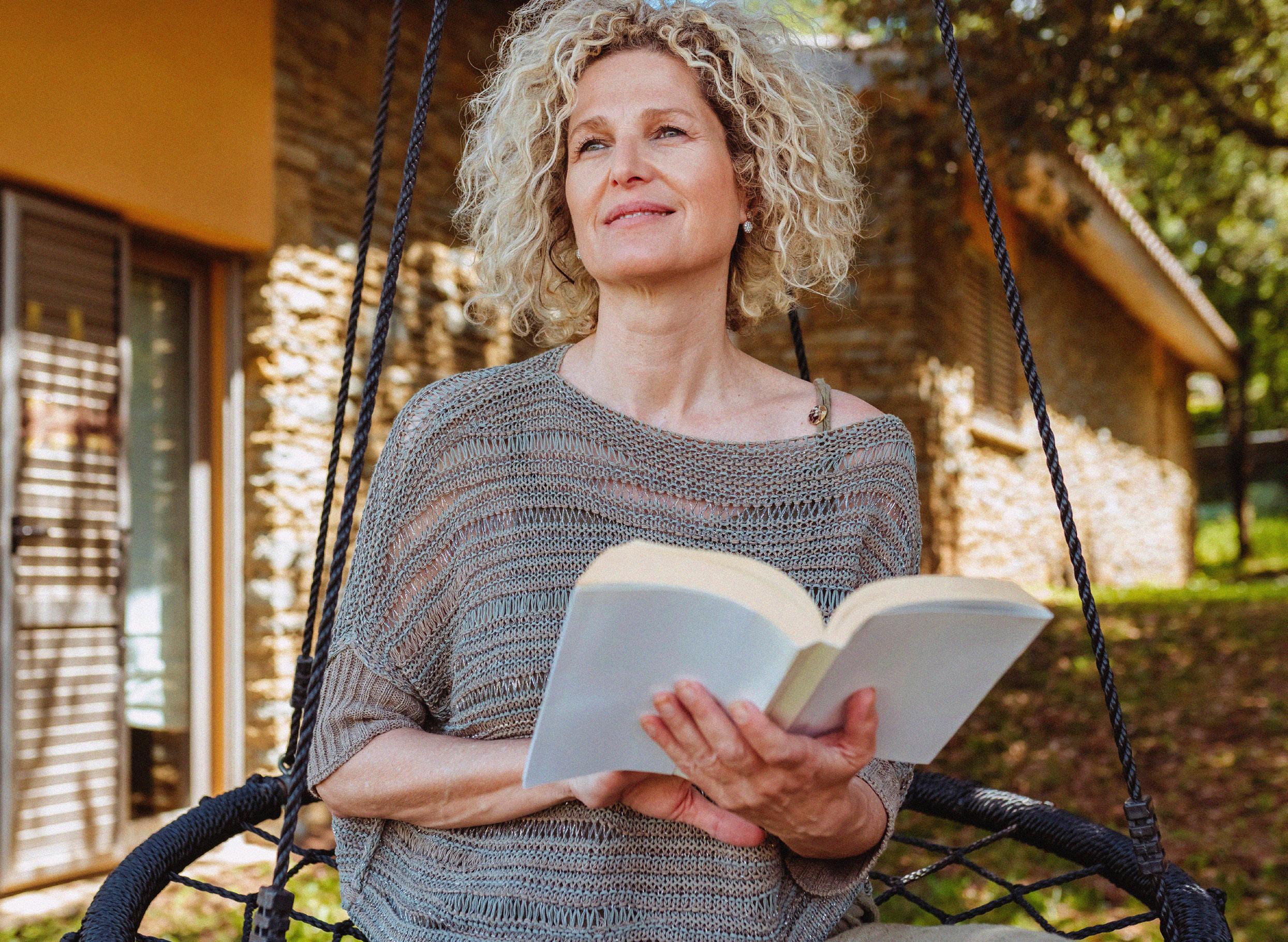
technique Jenny recommends doing in the form of writing.
“Write down the story you tend to tell yourself about a particular issue, then explore where that story comes from, and whether it’s actually true,” she says. “This can help you notice patterns and start to rewrite the narrative.”
If you often tell yourself that you’re ‘unsuccessful’, consider whether this is true. Write down instances of success, no matter how small, which prove that this narrative is inaccurate.
“Take breaks and go at your own pace,” says Jenny. “Have a grounding routine in place before and after doing narrative work. Give yourself five minutes – take some deep breaths, get outside for a short walk, or make yourself a calming cup of tea.”
After you’ve explored a story or done some writing, follow it with something you find enjoyable.
Without the guidance of a therapist, it can be difficult to recognise just how deeply a story is embedded. A trained professional can also help you understand how gender, class, race, culture, and sexual identity can contribute to our internal narratives over time.
“A therapist can offer a safe and structured space where you can gently challenge unhelpful narratives and help you recognise and draw on strengths you may be overlooking,” says Jenny.
“Therapists can also help you hold the thread of the preferred story, especially when you might otherwise drift back to the dominant problem story.”

Jenny Warwick offers counselling support for parents of tweens and teens who want less stress and more connection. Connect with her via the Counselling Directory.

Nothing ever goes away until it has taught us what we need to know
Pema Chödrön
Mainstream narratives often focus on trans suffering, but there can also be so much joy in being trans, as Quinn Rhodes explains…
Writing | Quinn Rhodes
You might have heard about gender dysphoria – the discomfort of feeling like the sex you’re assigned at birth, and how your gender is perceived by others, doesn’t align with your true self. As a trans person, I’ve experienced a lifetime of dysphoria, long before I understood that the skincrawling, self-loathing I felt was related to gender. But if gender dysphoria is the wrongness I
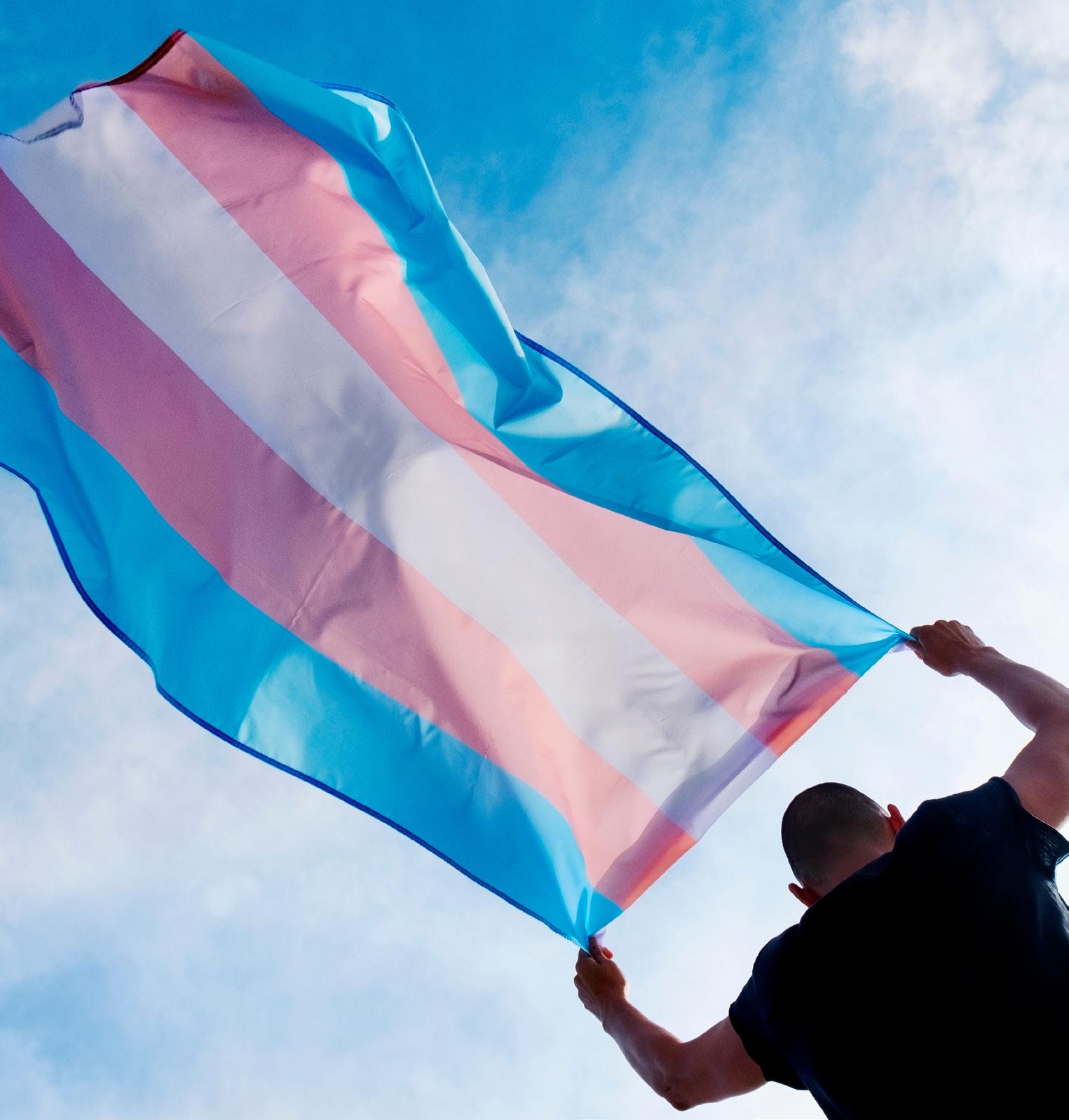
feel within myself and my body, euphoria is the glorious rightness.
The term ‘gender euphoria’ is used by trans and non-binary people to express the joy, acceptance, and satisfaction, that we can experience when we feel aligned with our gender. Feeling good, or even comfortable, in our gender isn’t a given for us – so for those that do, it can be overwhelming. The first time I experienced gender euphoria, I broke down crying in my girlfriend’s arms. I wasn’t sad; I was happy in a way I didn’t know was possible.
When I was first exploring my gender, about six years ago, I started to feel euphoria specifically about my shoulders.
They didn’t become more ‘masculine’ overnight when I figured out I was a man, but I began to see that part of my body through a new lens. I discovered how affirming, how masculine, it felt to square them, feeling the muscles move beneath my skin, stretching out as I stood tall. How I began to hold my shoulders made me feel strong and powerful – in my body, and in who I am.
Figuring out what might bring you gender euphoria can take time, and courage, to explore –but it’s important to know that if you haven’t or don’t experience gender euphoria, that doesn’t make you any less trans. Before asking a barber to shave my head >>>
for the first time, I reasoned that it would grow back quickly if I hated it. Three years on, I have to say, I still feel a rush of joy when I touch the velvet softness of my freshlyshaved head.
Gender affirming compliments have helped me, too. I blushed when my girlfriend called me ‘handsome’ for the first time, and I still feel a warm glow when I’m referred to as their ‘boyfriend’. For me, language has been a powerful tool. I intentionally use the word ‘chest’, which doesn’t erase my dysphoria, but does avoid the discomfort of more femininecoded language. Wearing a binder – a top designed to compress your chest so it appears flatter – also helps me. I want top surgery (which, as a trans man, would be a gender-affirming mastectomy) and I can’t wait until I look in the mirror and see a flat chest with top surgery scars.
It’s important to note that not all trans people want surgery. In fact, not all trans people even experience gender dysphoria. Despite this, in the UK, trans people need a diagnosis of gender dysphoria to apply for a Gender Recognition Certificate (GRC) –which is how trans people can obtain legal recognition of their gender. And that diagnosis, as well as almost all gender-affirming care, can feel inaccessible for many trans people, especially when you consider the lengthy waiting lists. NHS data, sourced by the BBC, suggests that waiting times at the majority of NHS gender identity clinics in England have “at least doubled between 2018 and 2023”.
The same BBC report revealed that, towards the end of 2023, 31,000 trans people were on waiting lists for their first appointment at a gender identity clinic in England. Despite the target of 18 weeks from referral to proceed through to initial care, patients are waiting an average of 382 weeks (more than seven years) from their initial referral.
I’m no longer as interested in adhering to traditional masculine ideals and, instead, am defining masculinity for myself
The gender recognition process has been criticised by trans people and politicians alike, with former SNP deputy leader Mhairi Black calling it “deeply invasive, traumatising, unnecessary, and dehumanising”. This delay in receiving support can have severe repercussions, with a 2024 study in The Lancet noting that “long waiting was associated with a range of psychosocial distress”, and 2022 research in European Psychiatry highlighting that “longer waiting times contributed to feelings of low mood and suicidal ideation, as well as decreasing overall quality of life”.
Of course, just like surgery, not every trans person wants hormone replacement therapy
(HRT), but personally, starting testosterone three years ago saved my life. At the time, I was suicidal, and desperately needed the control over my own life and body that HRT gave me. I’ve wanted to take testosterone since before I’d figured out my pronouns (he/ him, by the way), and I’m so much happier now. I watched as my body changed and my voice got deeper, and my discomfort lessened. I found euphoria first in my thickening sideburns, in the snail trail of hair down my belly, and my no-longer-scraggly beard. As my body has changed, I’ve found myself binding less frequently. In addition to being trans, I’m autistic and struggle with sensory overwhelm. My dysphoria about my chest hasn’t gone, but I’ve learned that prioritising my comfort is more important to me right now. Other people don’t get to define my gender, and my chest doesn’t make me any less of a man. In general, I’m no longer as interested in adhering to traditional masculine ideals and, instead, am defining masculinity for myself.
Nowadays I’m secure in my gender, but I still get surprised by unexpected moments of gender euphoria. Last week, I went to a trans and non-binary only swimming session, facilitated by an organisation which helps trans people participate in sports. I hadn’t been swimming in nine years, but this session allowed everyone to swim topless, regardless of their gender assigned at birth.
Walking from my changing cubicle to the pool was


exhilarating. I couldn’t stop smiling as I went down into the water, my body feeling lighter as my chest was submerged.
Narratives about trans people –especially in the current media landscape – are rarely written by trans people ourselves. We’re told trans lives are miserable:

full of dysphoria, a constant struggle. But there’s no universal trans experience, no ‘right way’ to be trans – and while there are countless hardships that you might face, those don’t define being trans. I don’t want to argue that existing in a transphobic society isn’t hard, but if being trans was a choice, I would choose it every time.
The happiness I experience as a trans person, the euphoria and joy I’ve discovered in my queer masculinity, is so much more intense than I thought I could ever feel. When I first realised I was trans, I discovered that it was so much easier to love myself with my new pronouns. It still is today.
Quinn Rhodes is a freelance journalist and sex writer, and his newsletter exploring gender and masculinity can be found at genderbent.co.uk
From an act of kindness which gives back to nature to a hobby with an unexpected health benefit, discover something new from our wellbeing round-up
Writing | Lauren Bromley-Bird
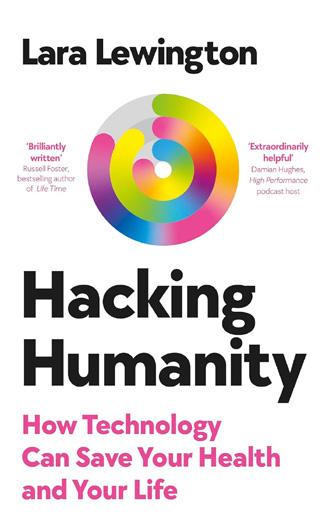
Make a log pile for wildlife
Hacking Humanity: How Technology Can Save Your Health and Your Life by Lara Lewington
It’s safe to say that technology is developing rapidly. So much so that there are groundbreaking innovations and new tools which are under development to revolutionise healthcare right as we speak. In Hacking Humanity, technology journalist Lara Lewington uncovers it all. (Out now)
1 2
Go ‘leaf peeping’
As we begin to hibernate in our warm and cosy homes during the autumn period, there are small mammals, reptiles, and insects that don’t have a habitat of their own. To provide refuge for them, create a shelter with unused and rotting piles of logs, which can be sourced from tree surgeons or neighbours. (Find out more at rhs.org.uk)
‘Floating Space’
3 4 5
Researchers believe that we should all have a third place in life – somewhere we can go to connect and socialise outside of our usual home and work environment. In this sixepisode series, podcaster Katie Stokes takes us with her as she searches for her own space for social connection. (Available now on all podcast platforms)

Nature is about to put on its most spectacular show of the year, and we encourage you to be a part of it by trying ‘leaf peeping’. It’s a travelling trend that originated in North America, and is all about heading outdoors to your nearest woodland to admire and photograph the changing colours of leaves.
The Koala Bare At the heart of these illustrated comic strips is a koala bear helping those who are dealing with bereavement, and the complex nature of grief. We see the friendly character, who is also holding their own in the face of loss, navigate various grief-related scenarios to help us learn more about the process. (Find out more by following @thekoalabare on TikTok)

7
Cruelty-free product search engine
Living a life which is aligned with your personal values is necessary for good wellbeing. So, if one of your values is to be more conscious about your shopping decisions and opting for more cruelty-free products, use Cruelty-Free Kitty’s search engine to find brands and products that are changing the future of retail for good. (Visit crueltyfreekitty.com to search)
Master juggling Juggling is a hobby with some serious benefits. Aside from the obvious, such as enhanced coordination and focus, studies suggest that learning this skill can actually induce the brain’s neuroplasticity. This essentially helps to strengthen brain health by aiding stroke recovery, improving memory, and more. (Find tutorials on YouTube)
9
6 10
The Quilters
8
Walking yoga
The idea of sitting still to meditate or practice yoga can be quite a struggle for many. Fortunately, walking yoga lets you reap all of the benefits (and more) on the move. Replace your A to B destination walking with a slower paced stroll, and pause along the way to incorporate yoga poses and breathing meditations.

Given that the majority of prisoners will eventually be released, resorative justice programmes are essential. In The Quilters, we follow prisoners in Missouri who are using their artistry to contribute to the community by sewing quilts for foster children who are on the adoption waiting list. (Watch on Netflix)
Happiful journaling bundle
Journaling is a space for unexplored emotion. In recognition of the healing nature of journaling, we’ve put together a bundle of our journaling booklets, including our popular Anti-Anxiety journal, for one lucky winner. (Sign up to our newsletter at happiful.com/digital-subscription to stay in the loop about new journals)
For your chance to win, simply email your answer to the following question to competitions@happiful.com
Which is NOT a type of journaling?
a) Morning pages
b) Bullet journaling
c) SWOT analysis
*Bundle is valued at £16.47. Competition closes 30 November, 2025. UK mainland only. Good luck!
If you feel like you’ve reached a breaking point, and something’s got to give, you’re not alone. But, despite the ‘burnout’ conversation being a hot topic, there’s still some confusion about this challenging, and, often, incapacitating span of time. Here, we debunk key myths…
Writing | Samantha Redgrave Hogg
We all experience stressful situations now and again, but burnout isn’t something that happens at the end of a long, hard day. Instead, burnout builds gradually, often only becoming apparent after the ship has sailed, so to speak, leaving individuals stranded in exhaustion. Burnout is a stockpile of deeply ingrained stress that, to put it simply, has nowhere to go.
So, what do the professionals think about the much-talkedabout subject? Well, charity Mental Health UK defines burnout (which is classified as a syndrome by the World Health Organisation) as “a state of
physical, mental, and emotional exhaustion” that occurs “when you have repeated and prolonged high demands that exceed resources”.
According to the Mental Health UK Burnout Report 2025, a YouGov survey of 4,418 adults found that burnout remains widespread, with 91% of those surveyed experiencing high pressure over the past year.
It seems that many of us have experienced that ongoing feeling of everything being ‘too much’. So, why is there still a lack of understanding, and, in some cases, empathy, about burnout? Let’s clear up any confusion by dispelling five misconceptions.

Burnout can occur when someone carries a high level of responsibility, but has limited opportunities for rest, recognition, or support
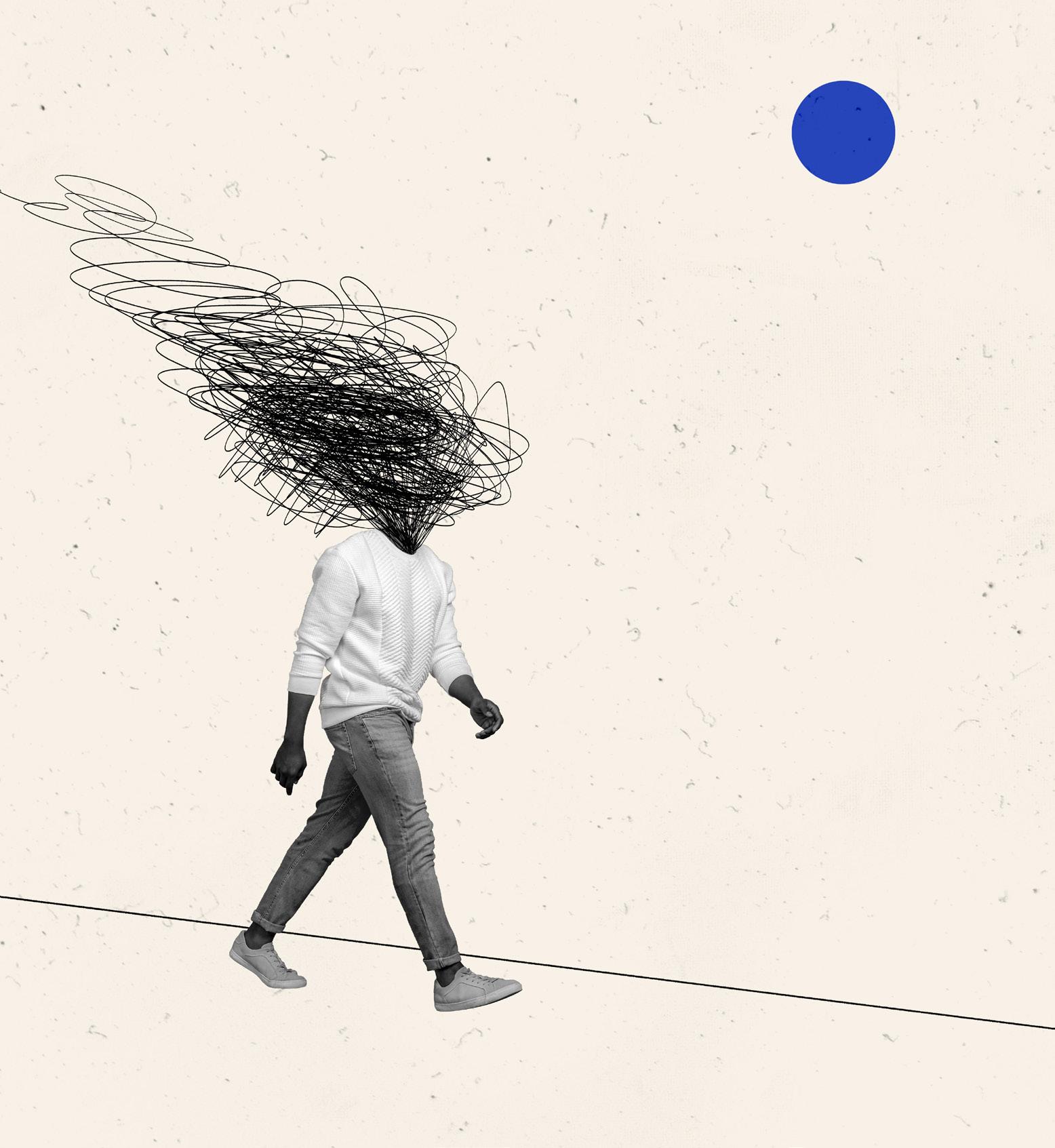
MYTH: Burnout is a sign of ‘failure’
One of the most debilitating misconceptions is the idea that burnout is a mark of ‘failure’. In reality, burnout is a response to shouldering too much for too long, and is in no way an absence of resilience.
“Burnout is not a sign that someone is weak, unmotivated, or incapable. In fact, it often affects those who are deeply committed, conscientious, and determined to do well, even when that person’s energy is running low,” psychotherapeutic counsellor and holistic practitioner Sarah James explains.
Whether it’s an internal judgement or an external criticism, the fallout of perceiving burnout as inadequacy can lead to feelings of self-blame which can, consequently, delay recovery.
“From a psychological perspective, burnout develops when the balance between demands and resources becomes unsustainable,” notes Sarah. “When it is misinterpreted as a flaw, people often experience guilt or shame, which only adds to their exhaustion.”
MYTH: You're ‘just tired’
In this fast-paced world, who isn’t ready to hit the hay at the end of a long week? As someone who seeks to align with the ebb and flow of our seasons, it’s not a stretch for me to say that our societal expectation to be ‘productive’ at all times is an issue. However, it’s essential to clarify that general tiredness and burnout aren’t the same thing.
It’s natural to feel tired at times, and, often, we can resolve this feeling by taking time out or implementing some healthy self-care strategies. However, burnout is not something that can be ‘fixed’ with a short break from the usual routine. “In counselling, we observe that burnout can occur when someone carries a high level of responsibility, but has limited opportunities for rest, recognition, or support,” Sarah explains.
So, it’s a longer, non-linear road to recovery, which can, of course, involve stepping away from it all, but will also look like prioritising your needs, setting boundaries, and being in an environment that values your wellbeing. Over time, these practices will help you address the underlying causes, whether that’s in your job or at home, and discover a fresh perspective on your life. >>>

Sarah James is a psychotherapeutic counsellor and holistic practitioner. Visit the Counselling Directory to find out more.

MYTH: It’s only workplace-related Often, burnout can occur at work, and while the World Health Organisation’s definition is workplace-specific – which includes exhaustion, feelings of negativity or cynicism toward one’s job, and reduced professional efficacy as symptoms – mental health professionals recognise that burnout arises in other life areas, too.
“Although the World Health Organisation describes burnout as an ‘occupational phenomenon’, lived experience shows that it extends into many other areas of life. Parenting, caregiving, academic pressures, and even the emotional effort of maintaining relationships, can all lead to burnout,” Sarah says. “Naming and validating nonwork burnout is important, because it gives language to experiences that many people have, but rarely see acknowledged,” Sarah explains. “This recognition allows people to seek help without minimising their struggles simply because they are not in a workplace role. Whether in the office, at home, or within family life, burnout reminds us that the human need for balance, boundaries, and restoration applies everywhere.”
MYTH: Burnout is the same as anxiety or depression
Despite an overlap of symptoms with other conditions, there are clear markers to differentiate burnout. However, it’s often something we don’t recognise until it’s too late, with some people finding a type of ‘thrill’ in the early stages, as they push to achieve more.
In fact, according to psychologists Herbert Freudenberger and Gail North, there are 12 stages of burnout, with the first being a “compulsion to prove oneself”, characterised by “excessive ambition and perfectionism”. And while this model has faced criticism for being outdated and not acknowledging individual experience, it can still provide a general framework to understand how the process of burnout, (which, according to the theory, includes denial, withdrawal, and behavioural changes) unfolds over time, and differs from stress or anxiety, for example.
Furthermore, according to a 2020 study published in Psychiatry Research, which explored the differences between burnout and depression among those with lived experiences, there are nuanced distinctions, too – including perceived causes, as well as the emotional differences, (e.g. the reported feeling of hopelessness with depression, and helplessness with burnout).
MYTH: It’s your own problem to solve
Recovering from burnout is a collective responsibility, and can involve getting help from your manager, family, or a professional, such as your doctor or a counsellor.
Sarah shares how burnout is considered in the therapeutic setting, outlining the importance of support: “In therapy, we often explore how burnout is the body and mind’s way of signalling ‘enough’. Rather than a ‘weakness’, it’s valuable feedback that change or support is needed. Reframing burnout in this way helps people shift their focus from selfblame to self-compassion – an essential component of recovery.”
So, this really isn’t a matter of some extra willpower or pushing on through as ‘everyone else manages OK’. Sometimes, the strongest thing to say is ‘I need some support.’
Samantha Redgrave Hogg is a published author whose book, ‘Flow: Self-care sessions for your menstrual, lunar, life and seasonal cycles’, is available now. Visit wombonthebroom.com for more.

Looking for support with your mental health?
Here are some places that can help:
If you are in crisis and are concerned for your own safety, call 999 or go to A&E
Call Samaritans on 116 123 or email them at jo@samaritans.org
SANEline
SANEline offers support and information from 4pm–10pm: 0300 304 7000
Mind
Mind offers advice Mon–Fri 9am–6pm, except bank holidays: 0300 123 3393. Or email: info@mind.org.uk
Switchboard
Switchboard is a line for LGBT+ support. Open from 10am–10pm: 0800 0119 100. Or web chat: switchboard.lgbt
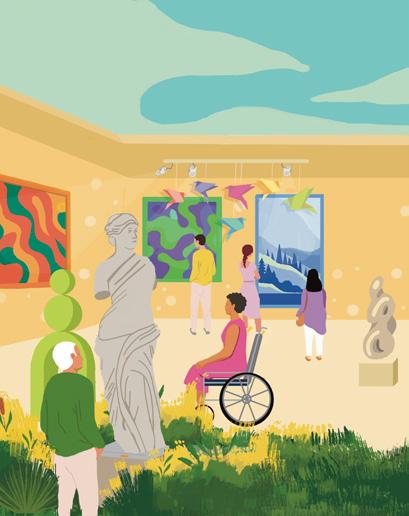
• Pass me on to a friend who might appreciate some articles.
• Get crafty and use me for a vision board or collage.
• Keep me on a coffee table to pick up when you need a boost
• Remember I’m 100% recyclable, so pop me in your recycling bin.
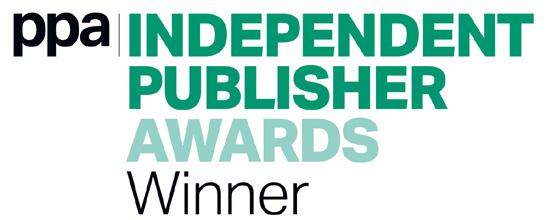
p20
MANAGING MENOPAUSE
For news, information, and free resources, visit menopausesupport.co.uk

p61
p68
HELP FOR DOMESTIC ABUSE
Find information and support at nationaldahelpline.org.uk or call 0808 2000 247
GRIEF AND BEREAVEMENT SUPPORT
To find support for grief and bereavement, head to cruse.org.uk or call 0808 808 1677
Our two-for-one tree commitment is made of two parts. Firstly, we source all our paper from FSC® certified sources. The FSC® label guarantees that the trees harvested are replaced, or allowed to regenerate naturally. Secondly, we will ensure an additional tree is planted for each one used, by making a suitable donation to a forestry charity. Happiful is a brand of Memiah Limited. The opinions, views and values expressed in Happiful are those of the authors of that content and do not necessarily represent our opinions, views or values. Nothing in the magazine constitutes advice on which you should rely. It is provided for general information purposes only. We work hard to achieve the highest possible editorial standards, however if you would like to pass on your feedback or have a complaint about Happiful, please email us at feedback@happiful.com. We do not accept liability for products and/or services offered by third parties. Memiah Limited is a private company limited by shares and registered in England and Wales with company number 05489185 and VAT number GB 920805837. Our registered office address is Building B, Riverside Way, Camberley, Surrey, GU15 3YL.
